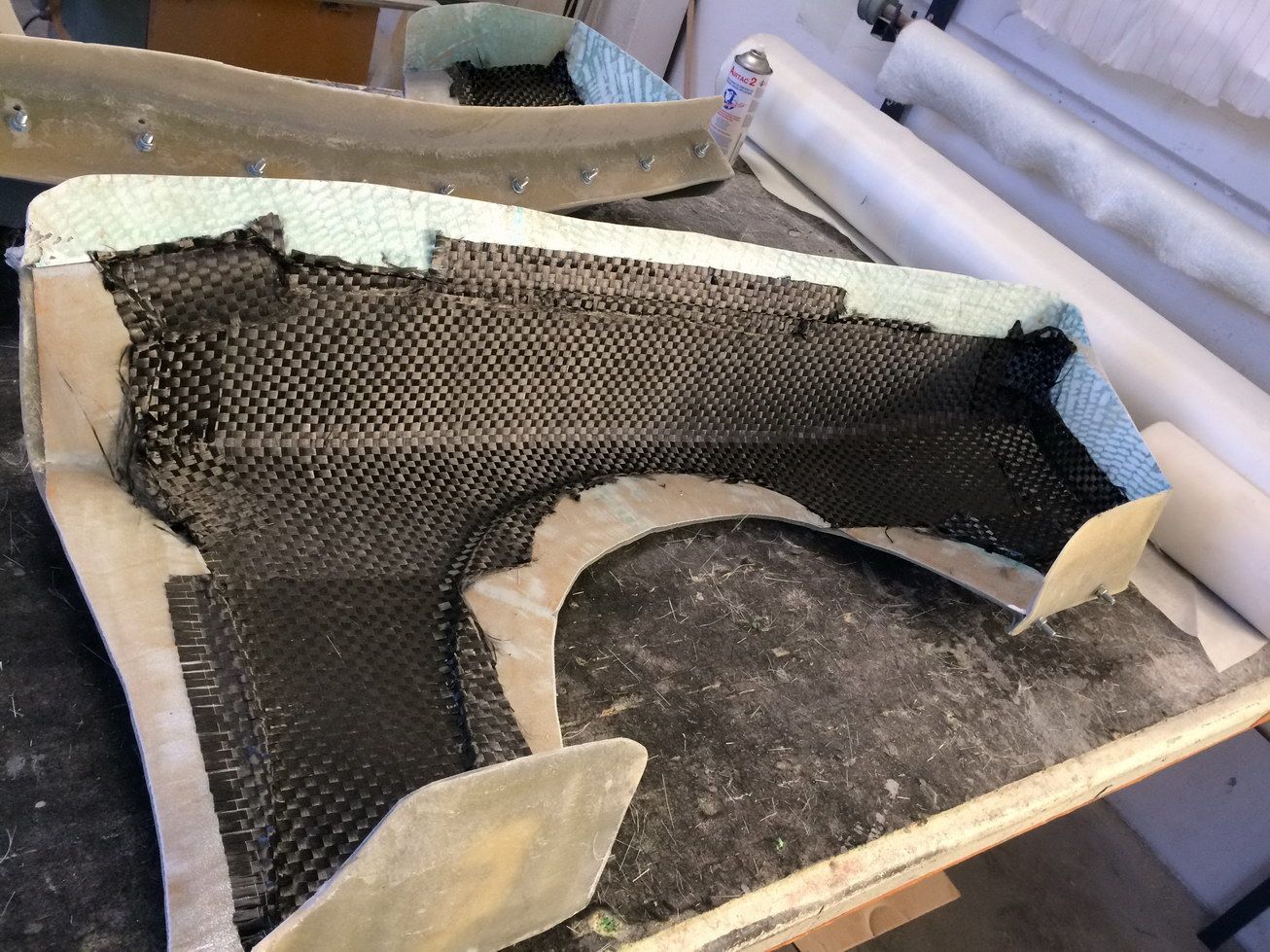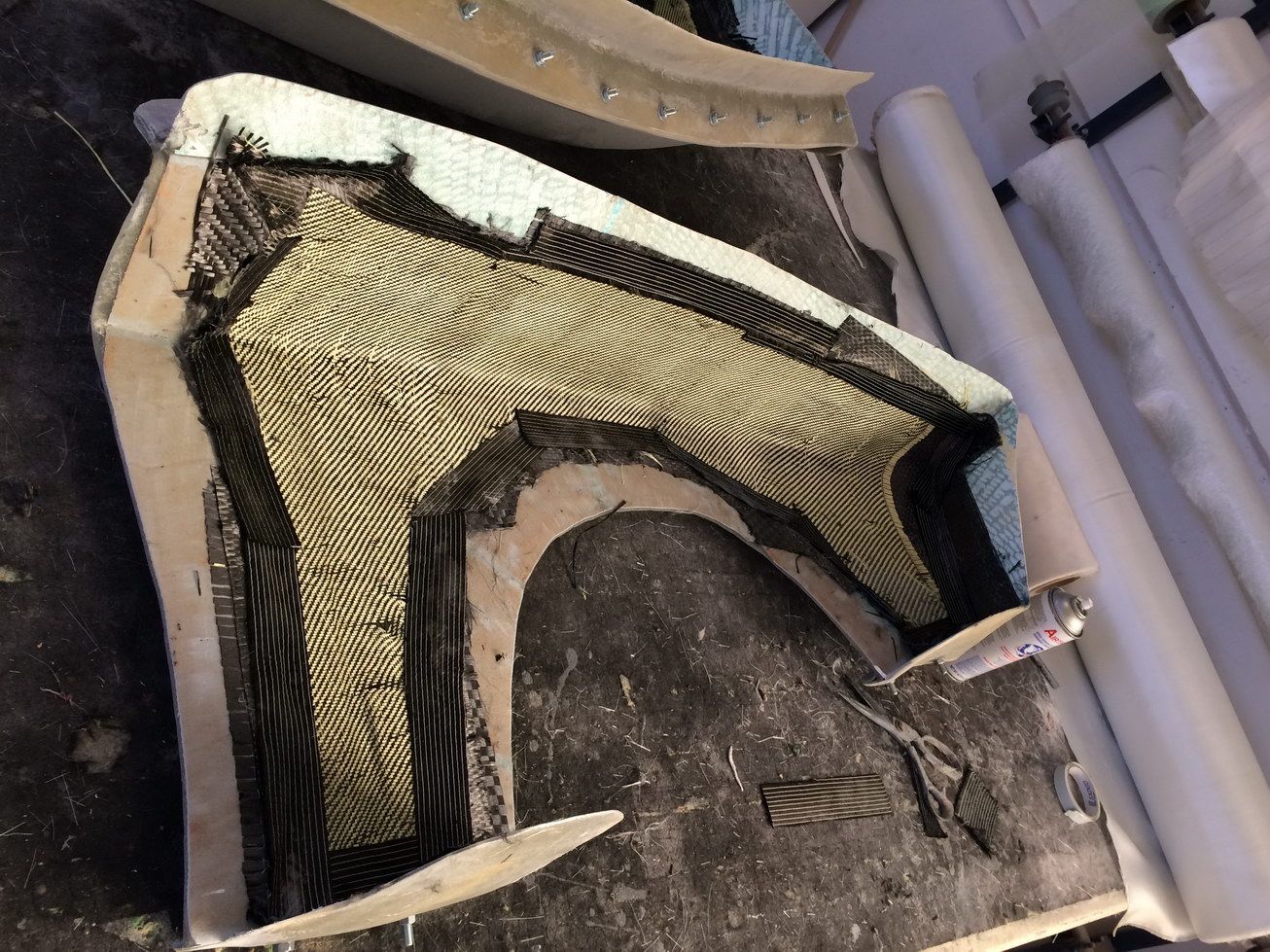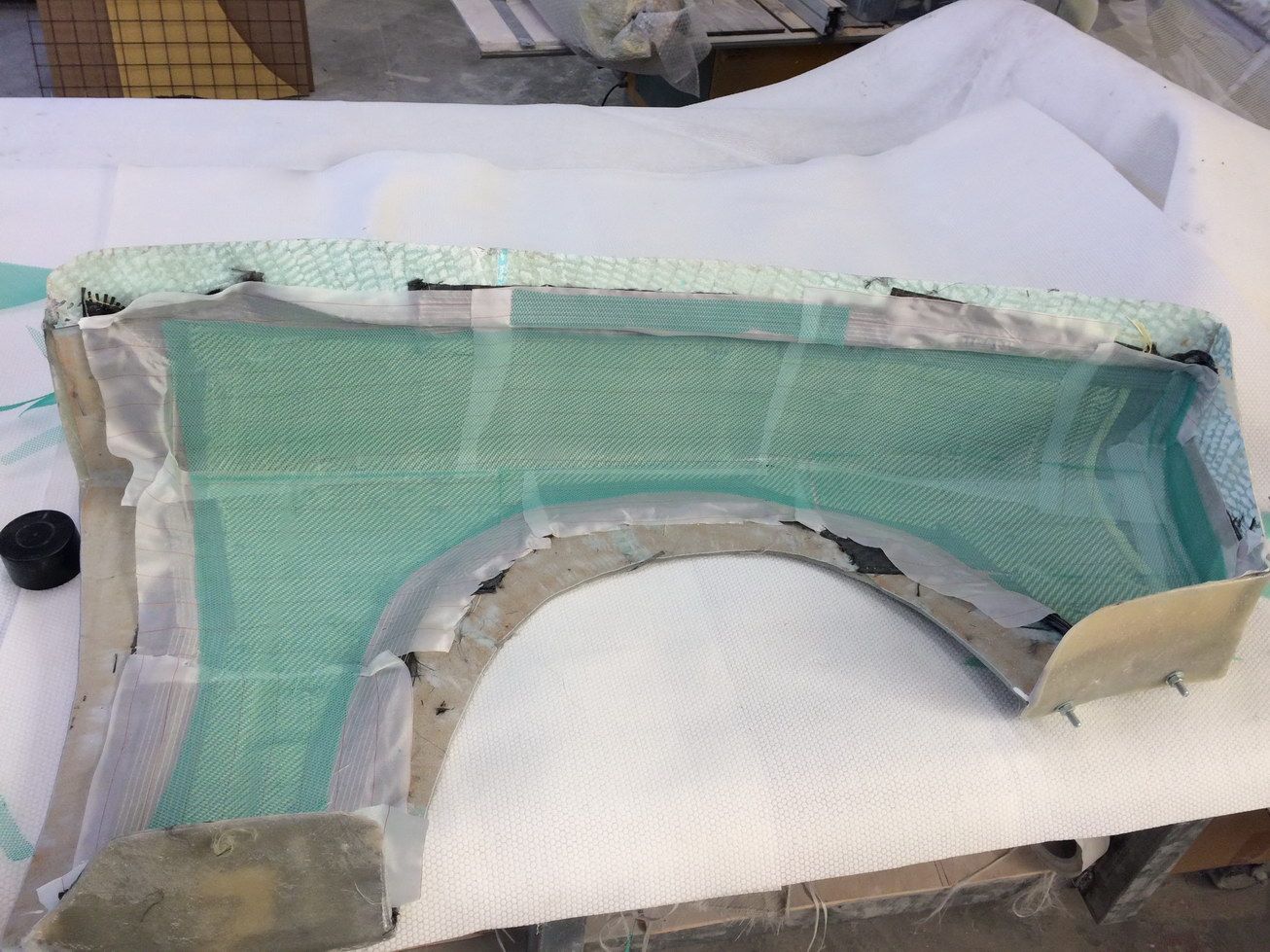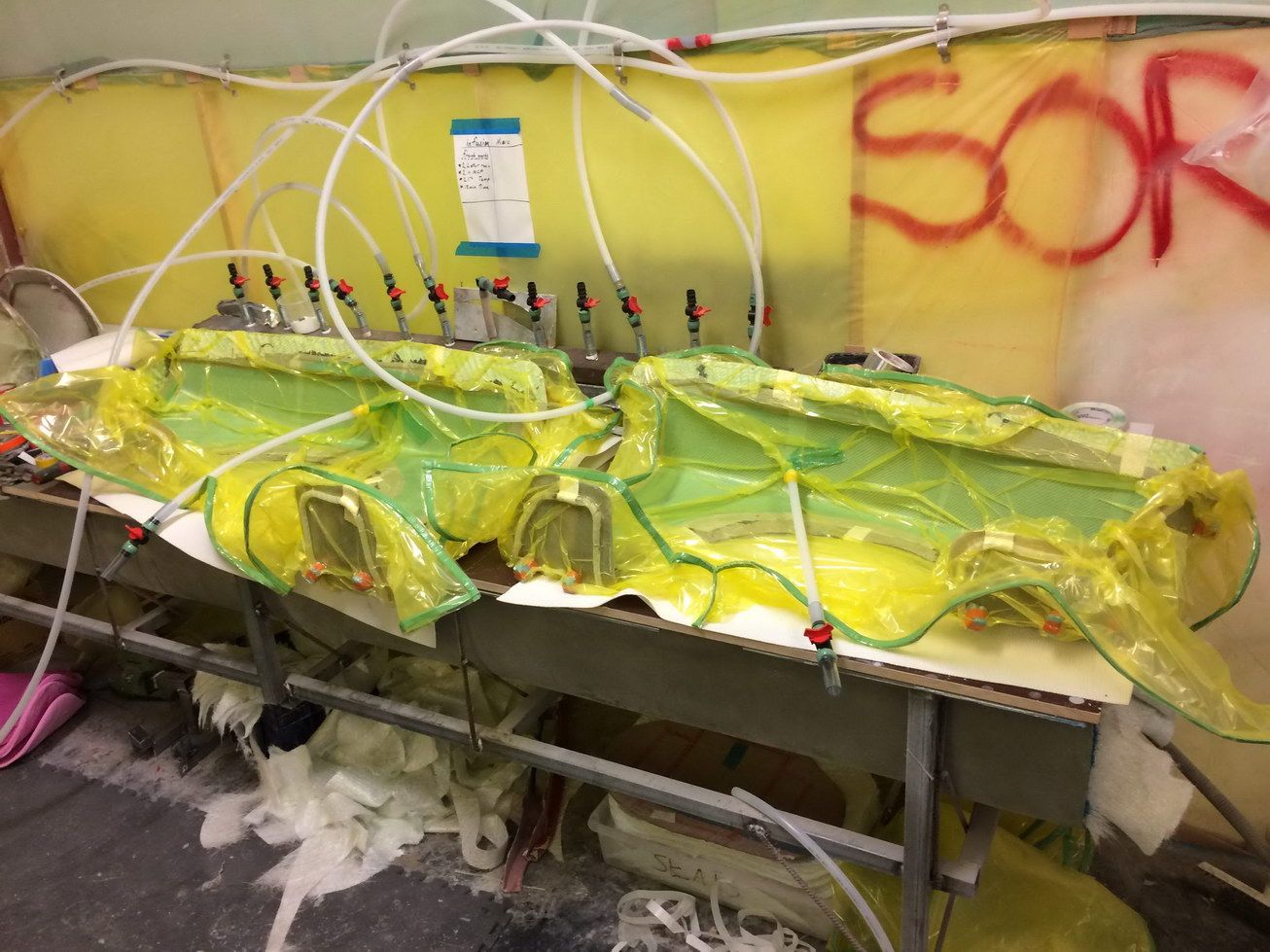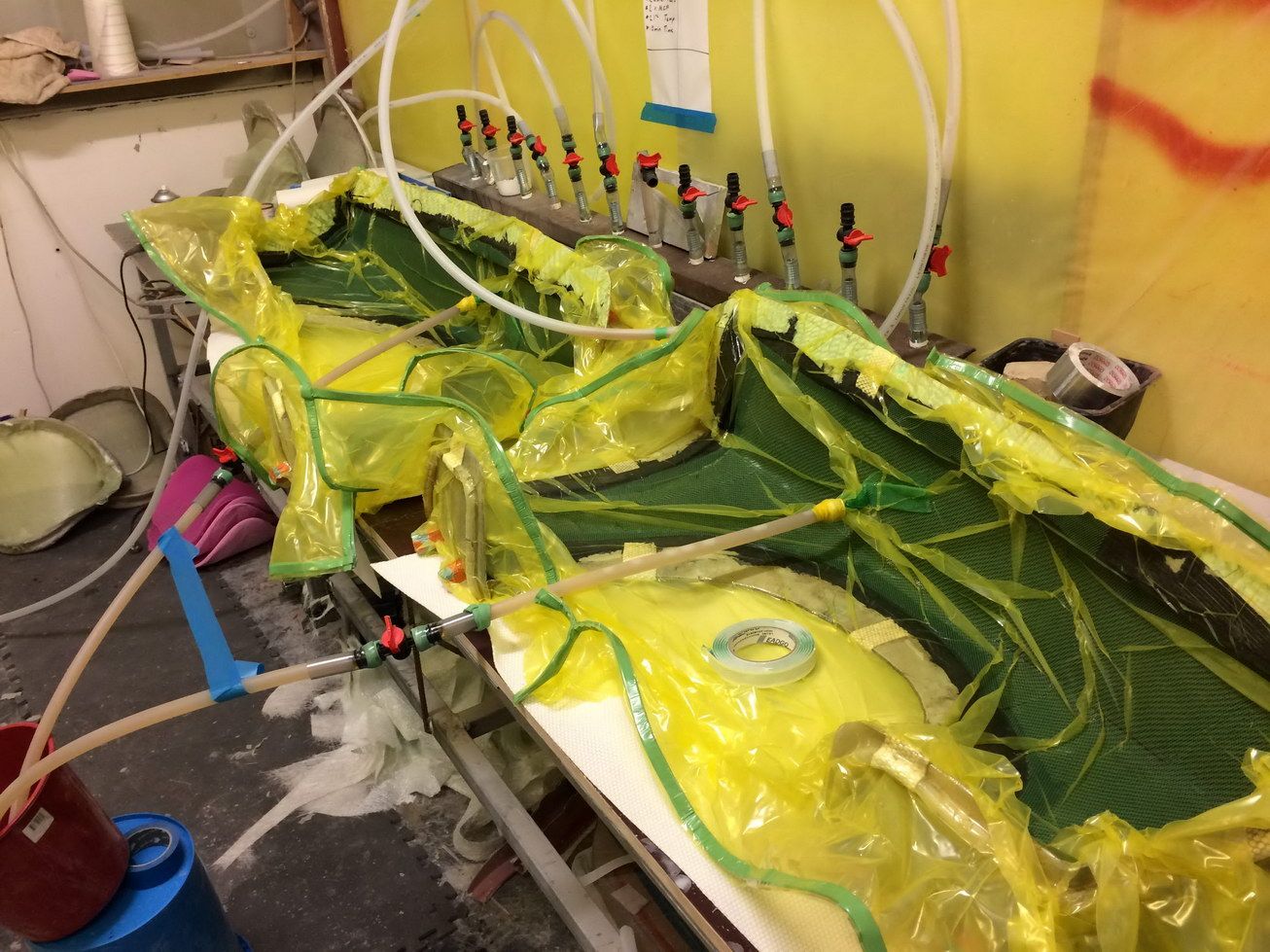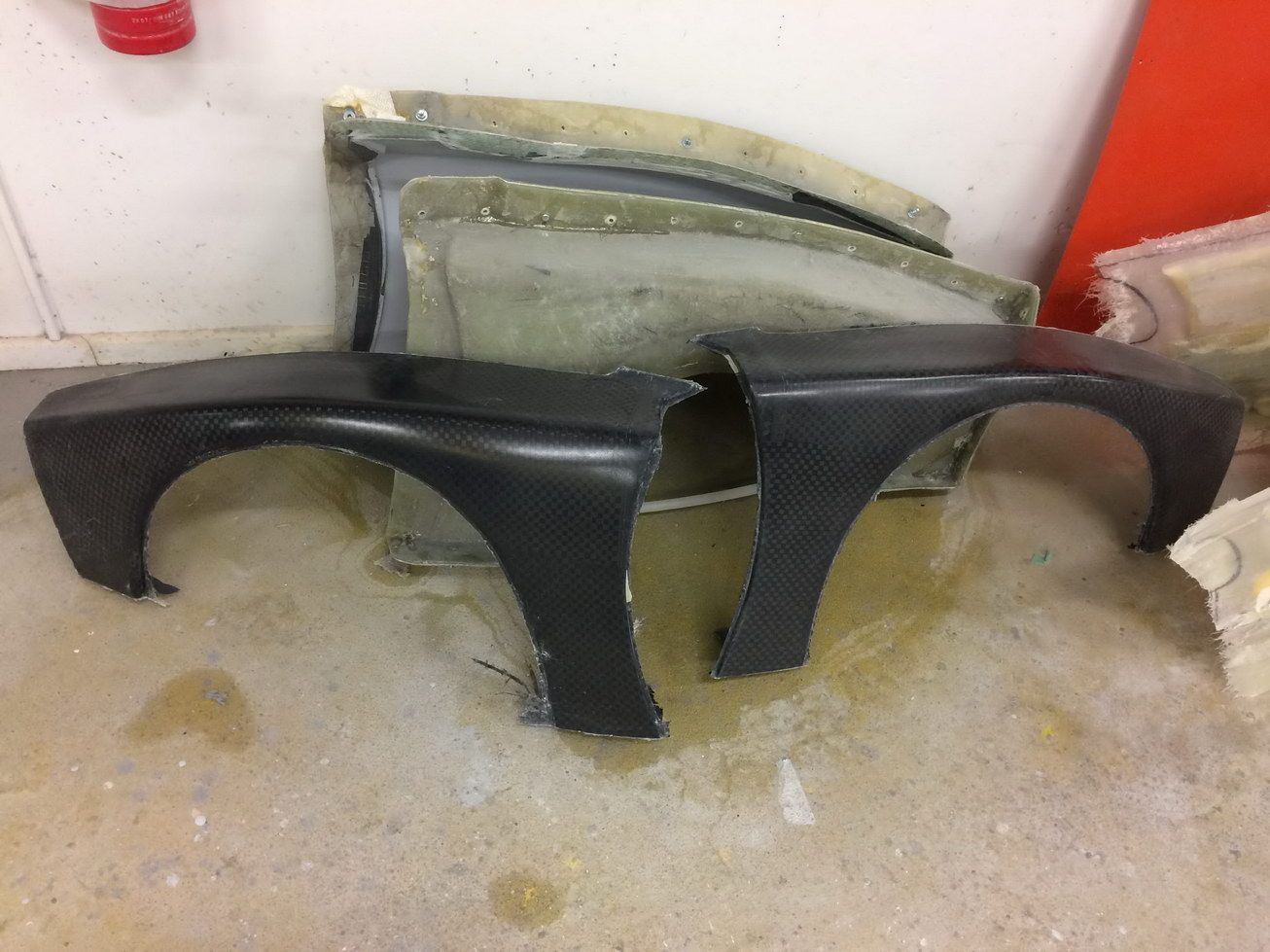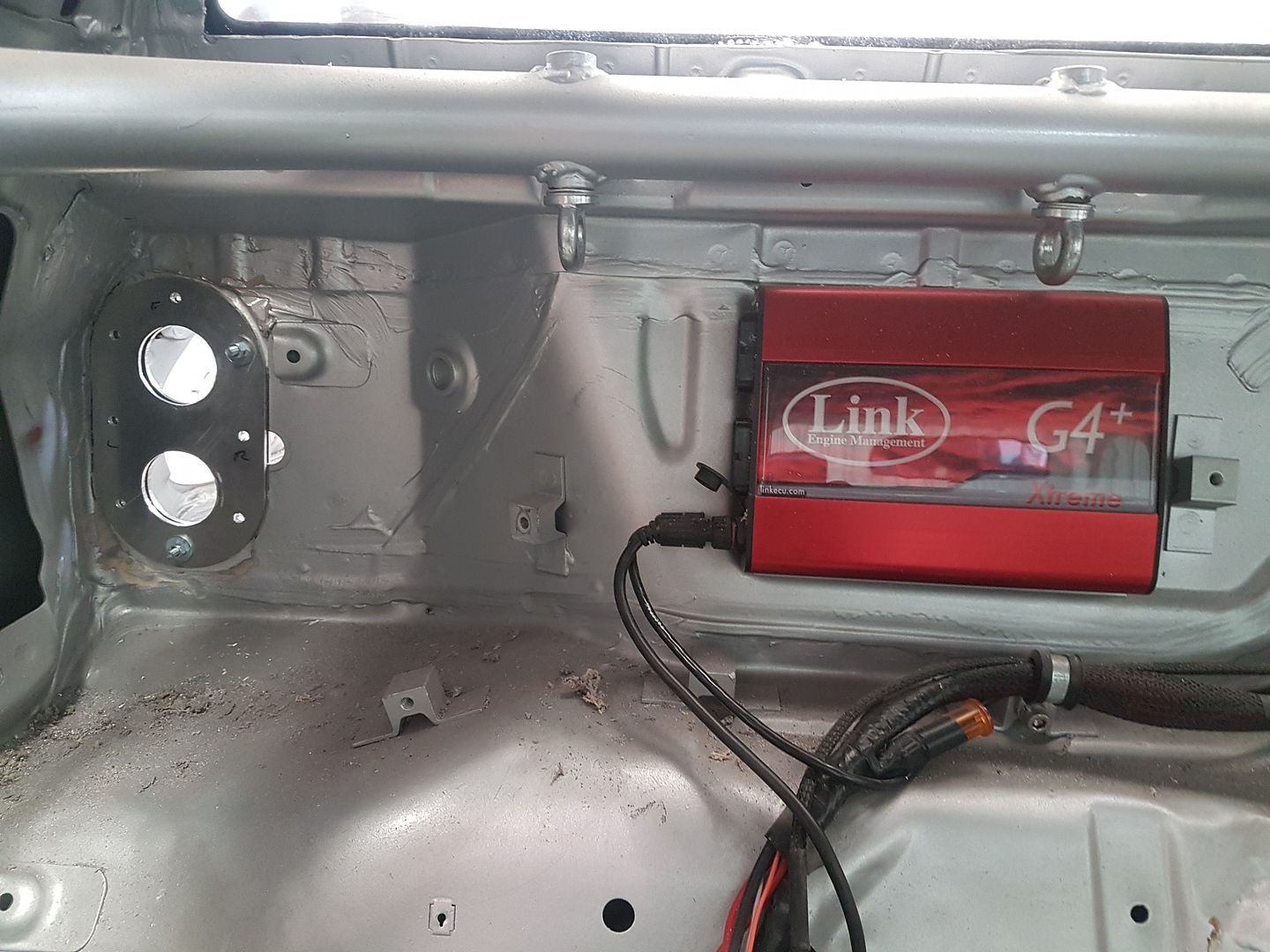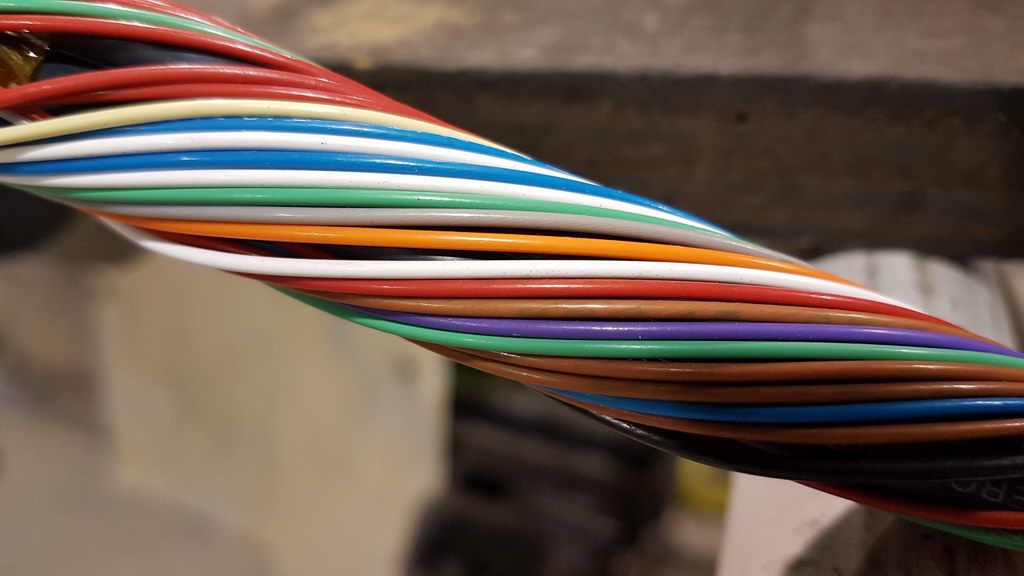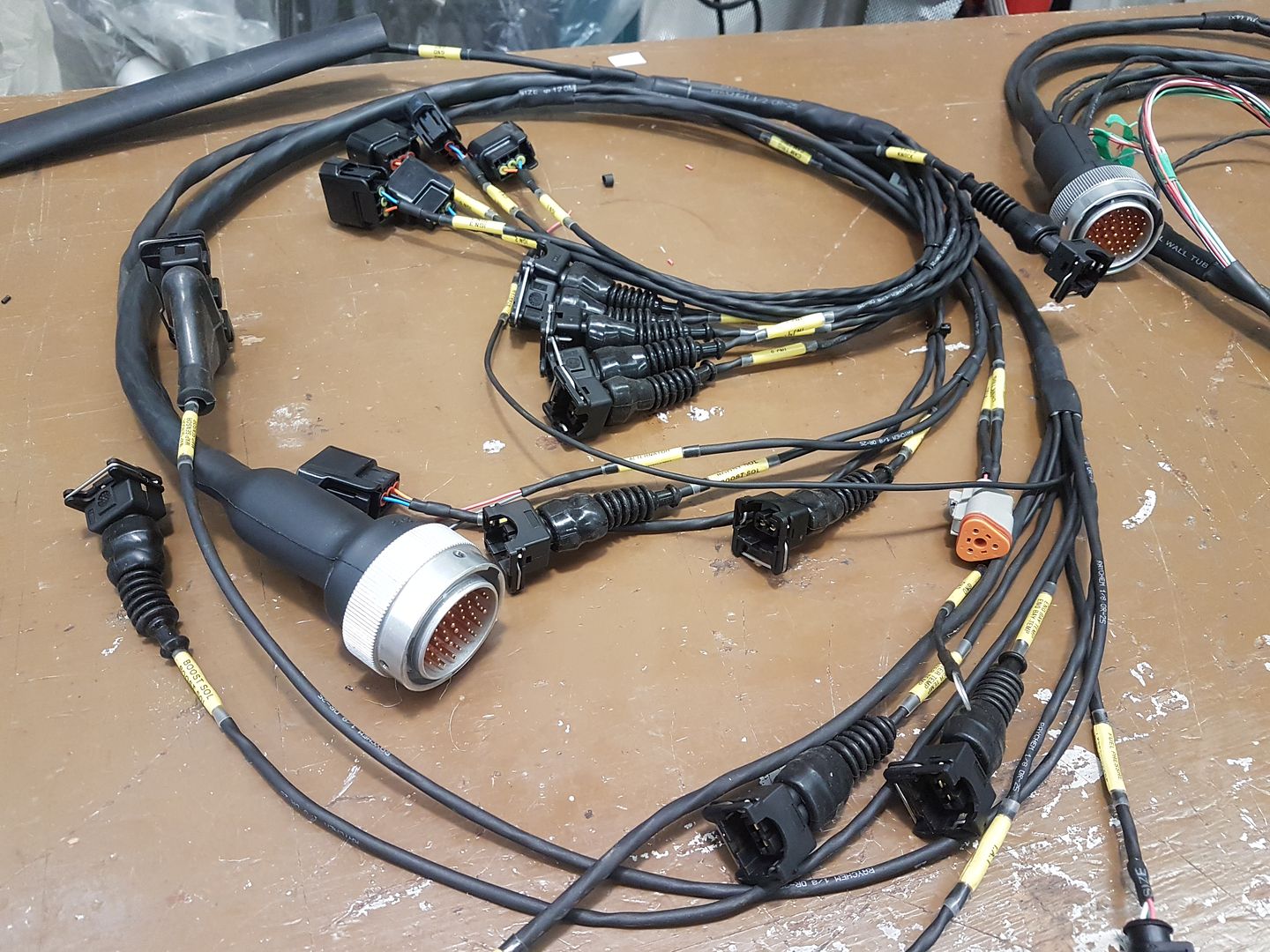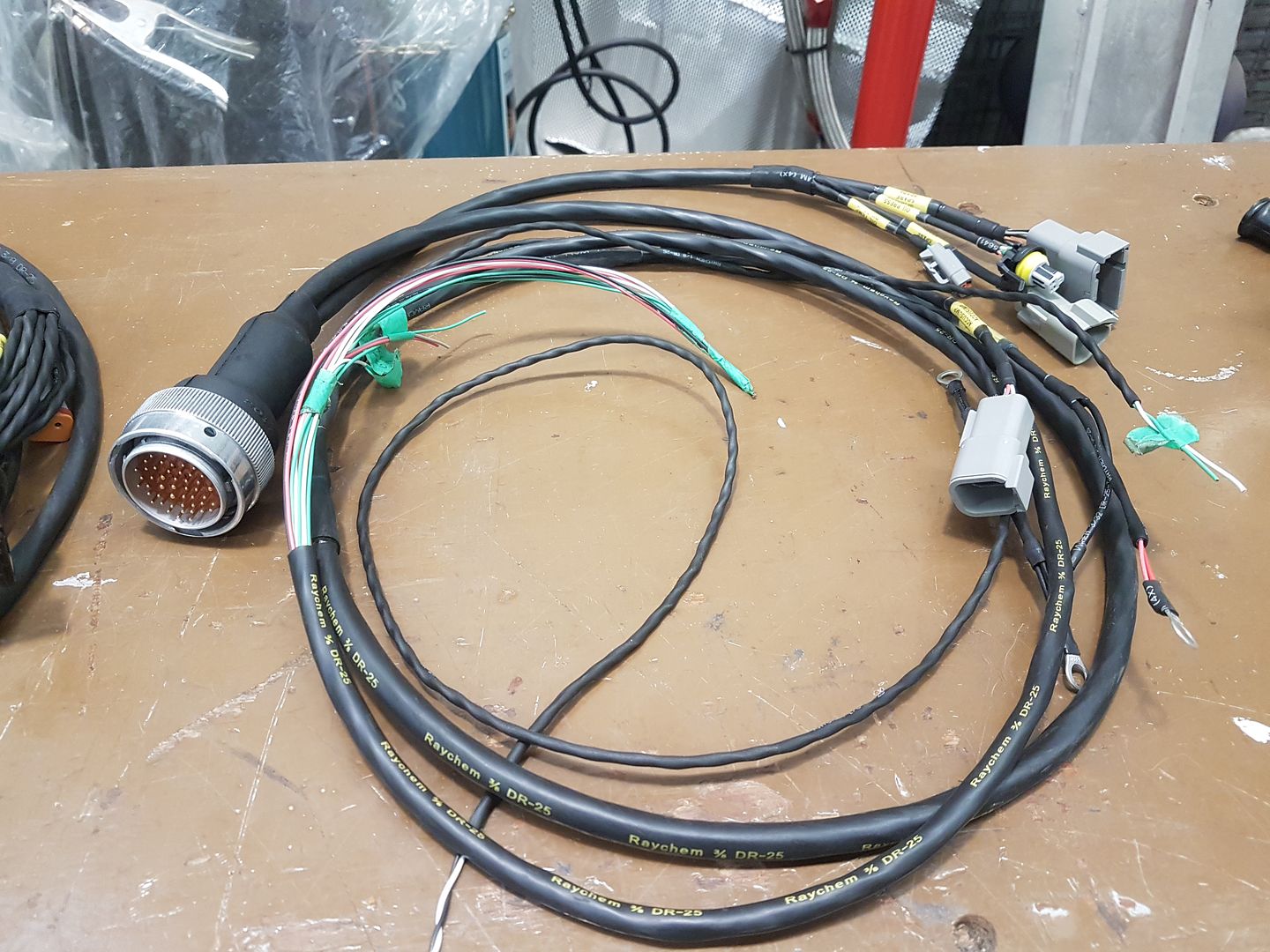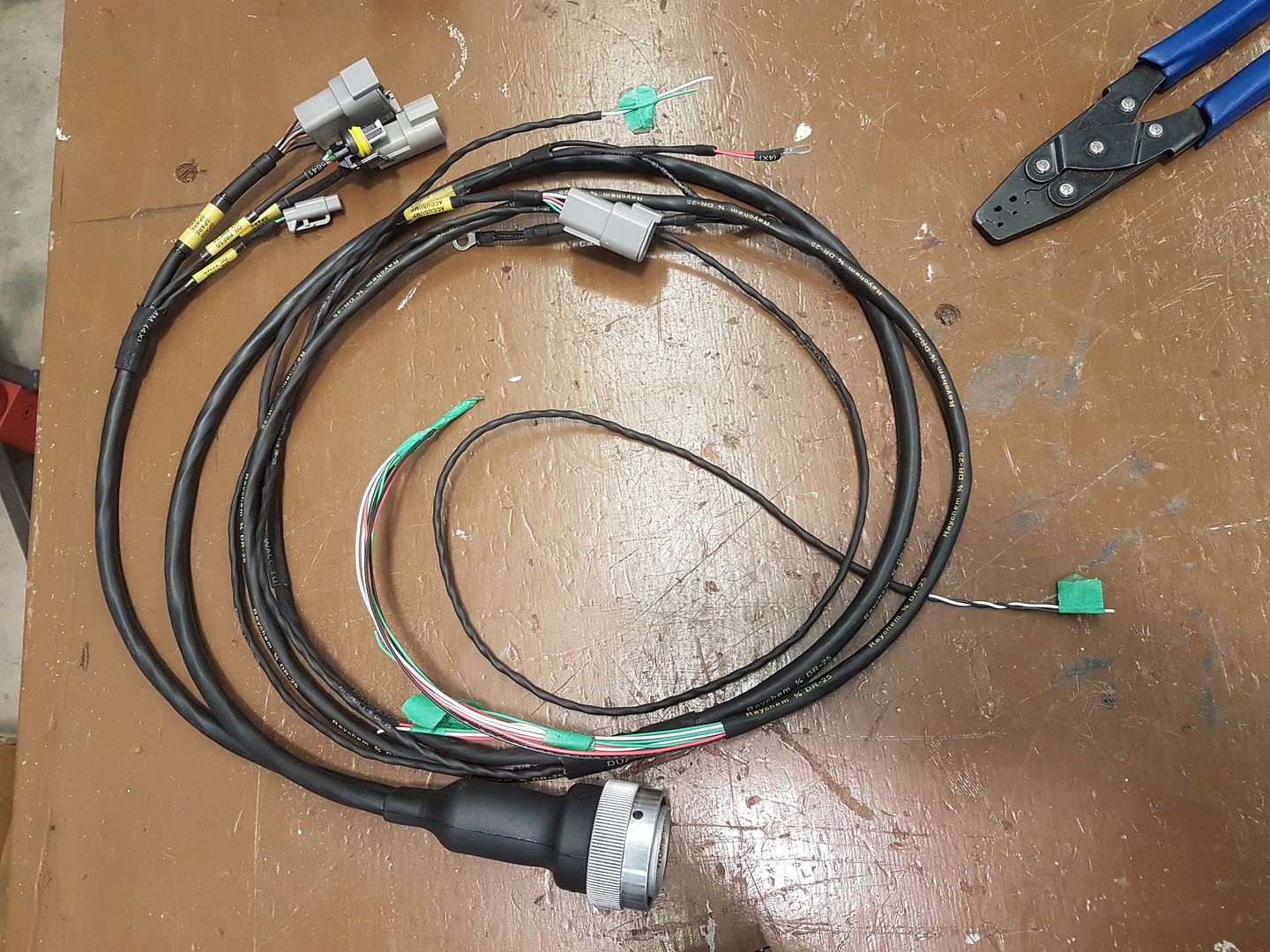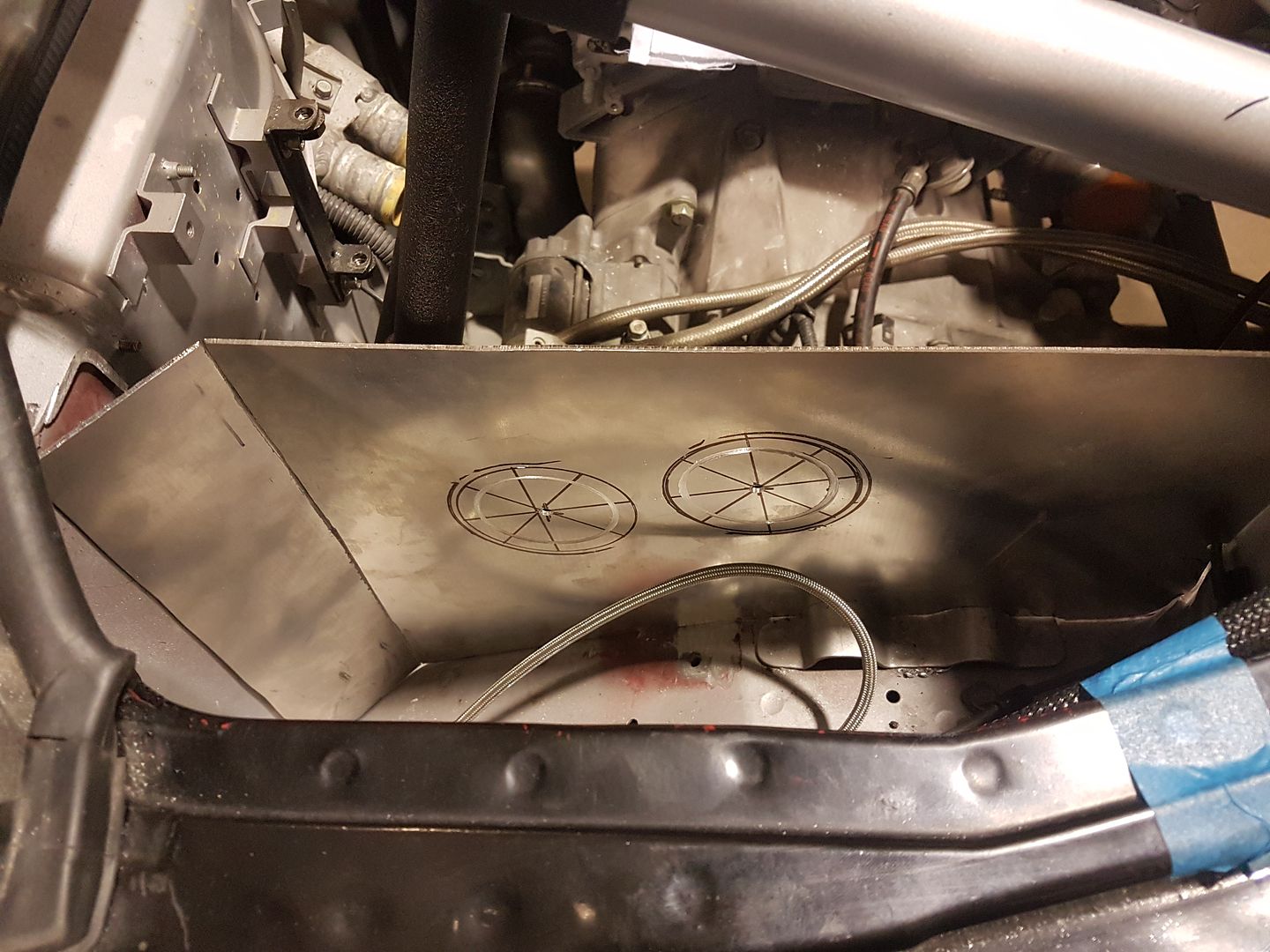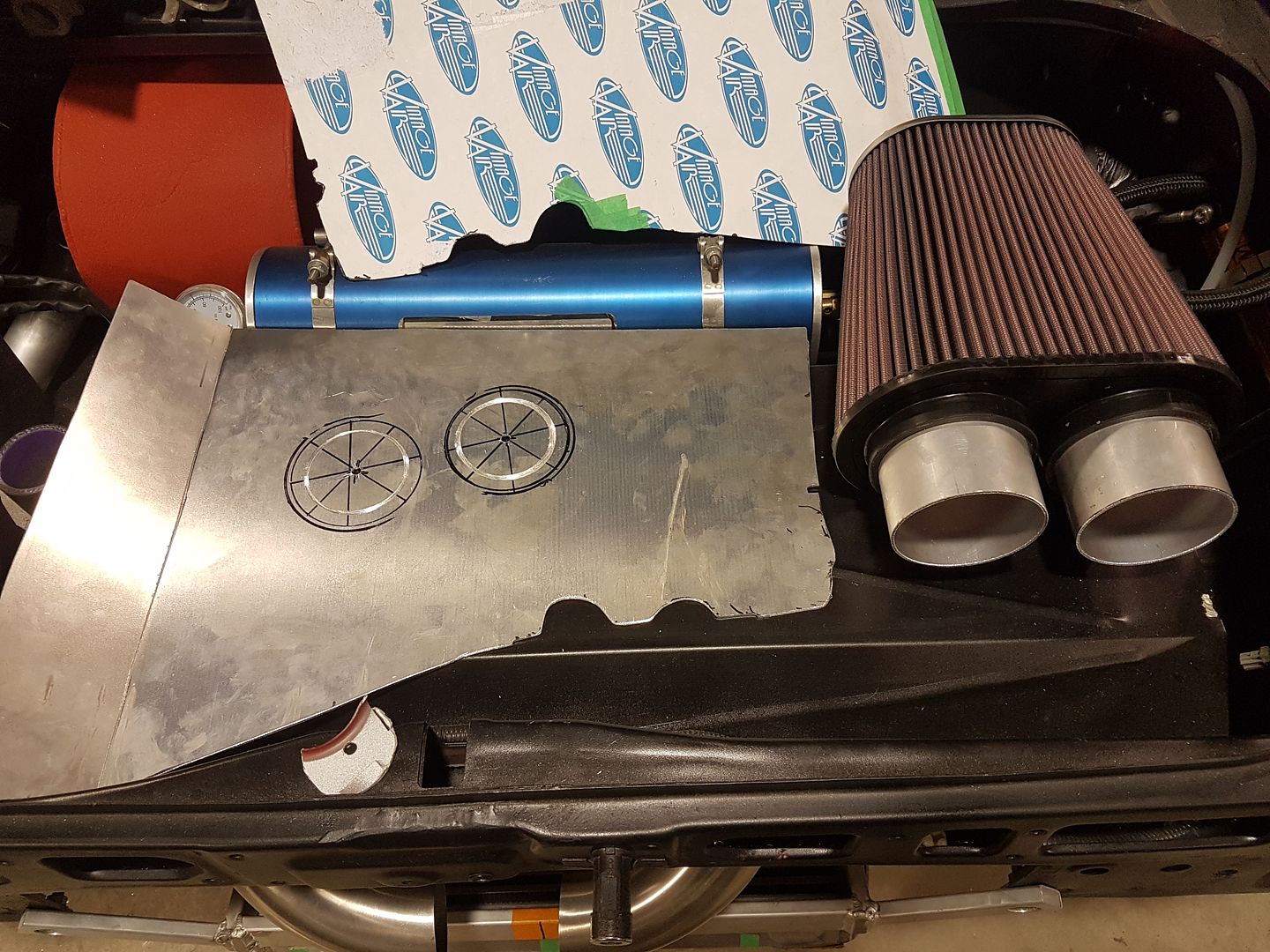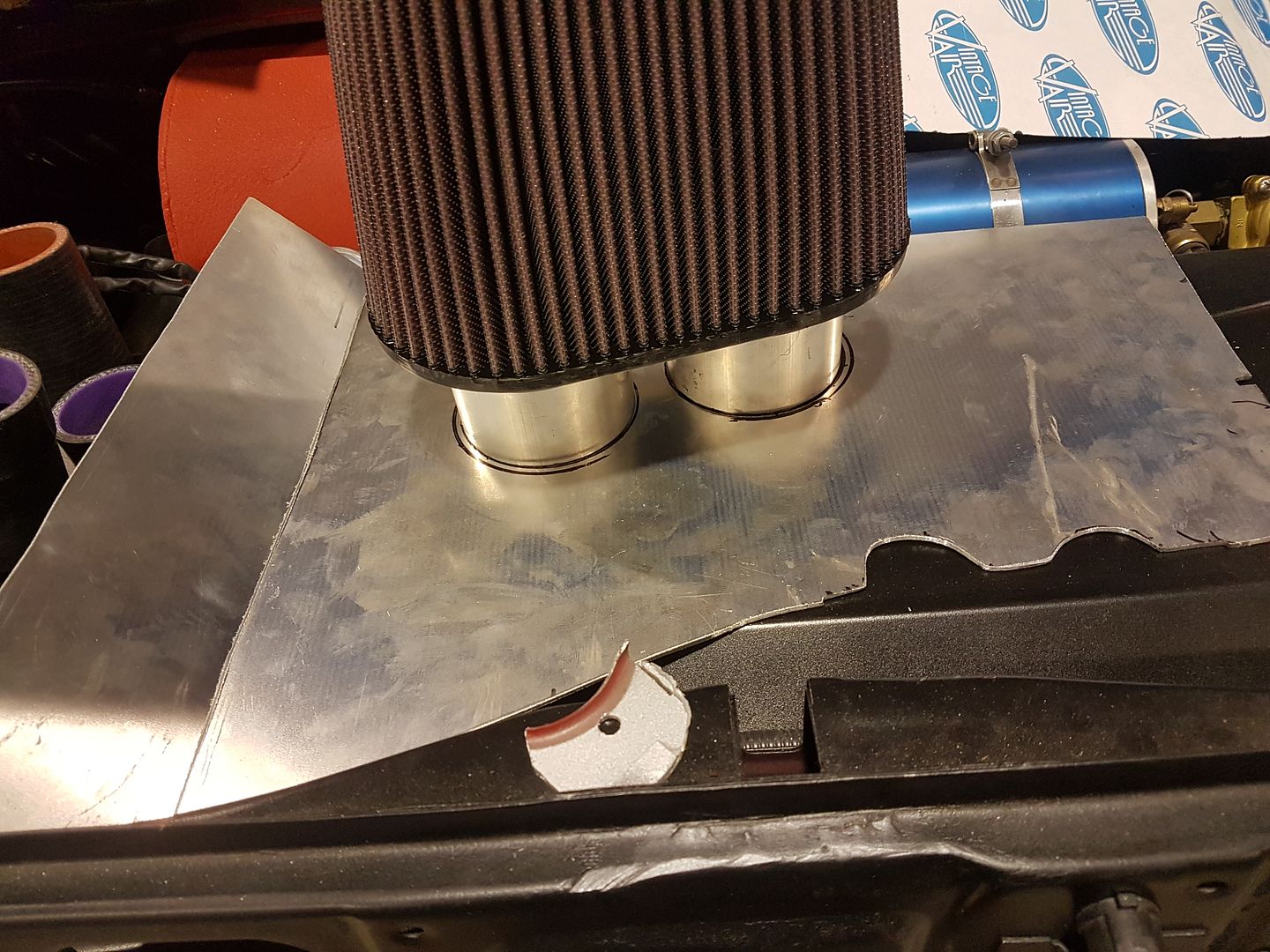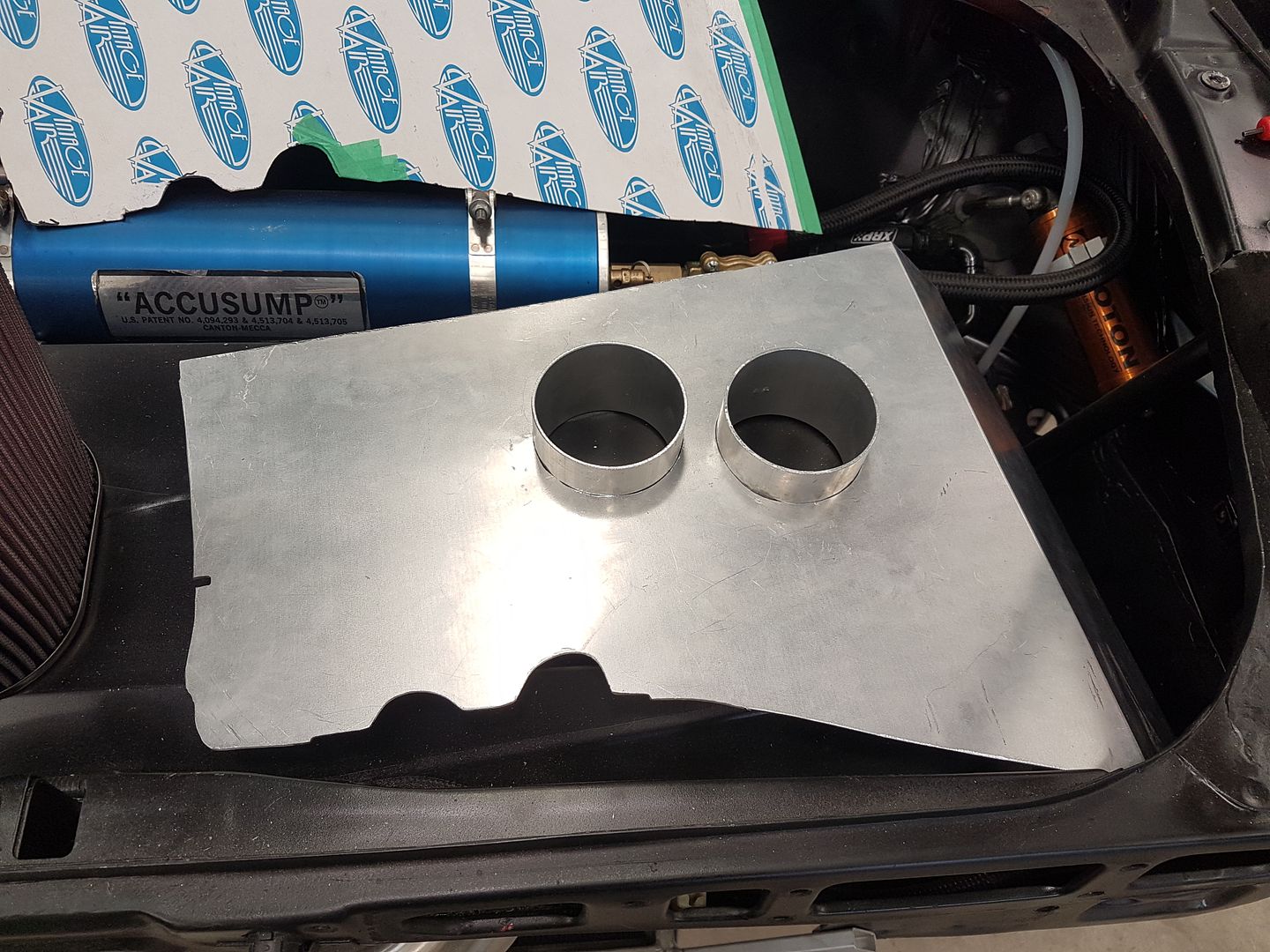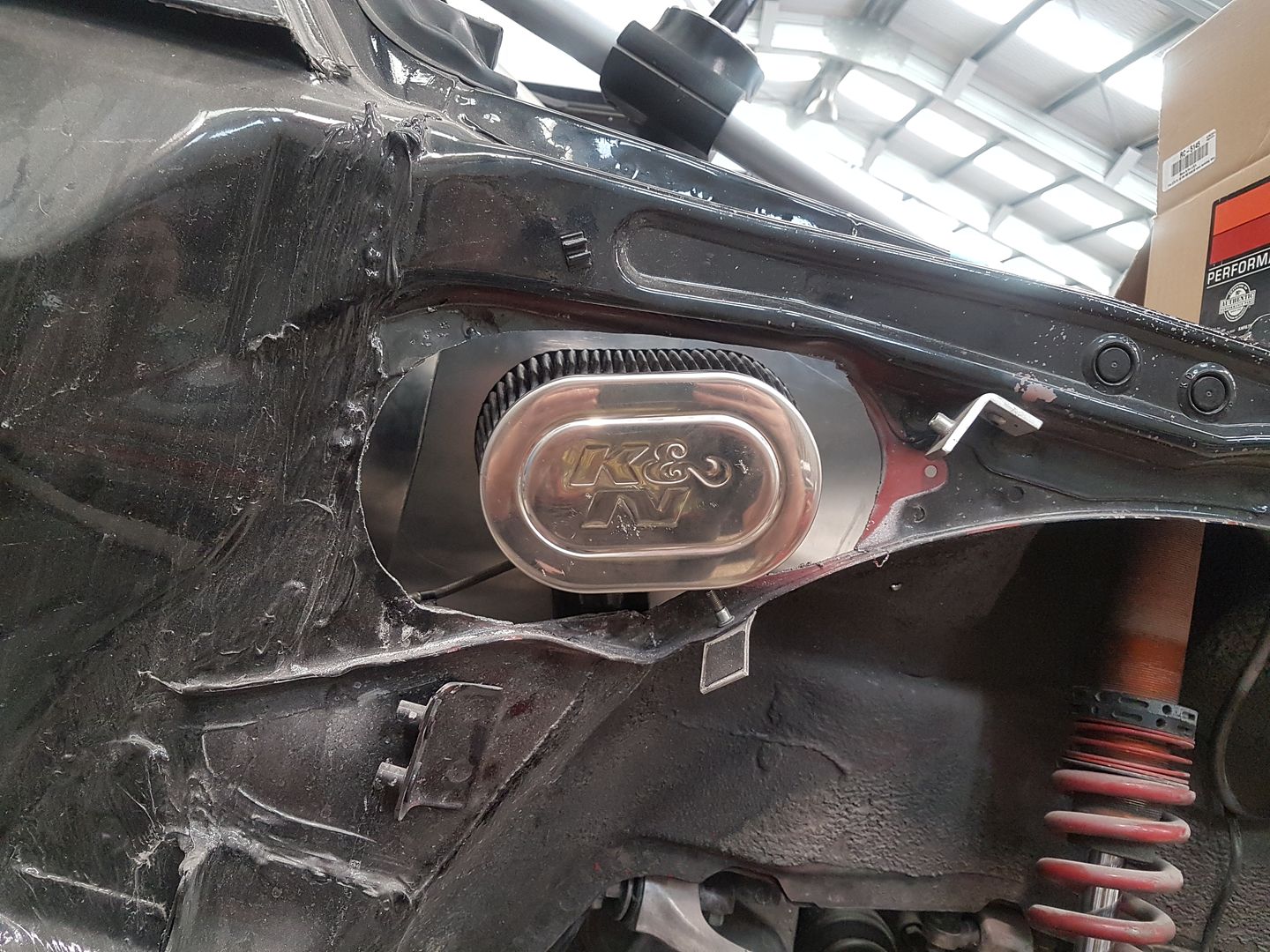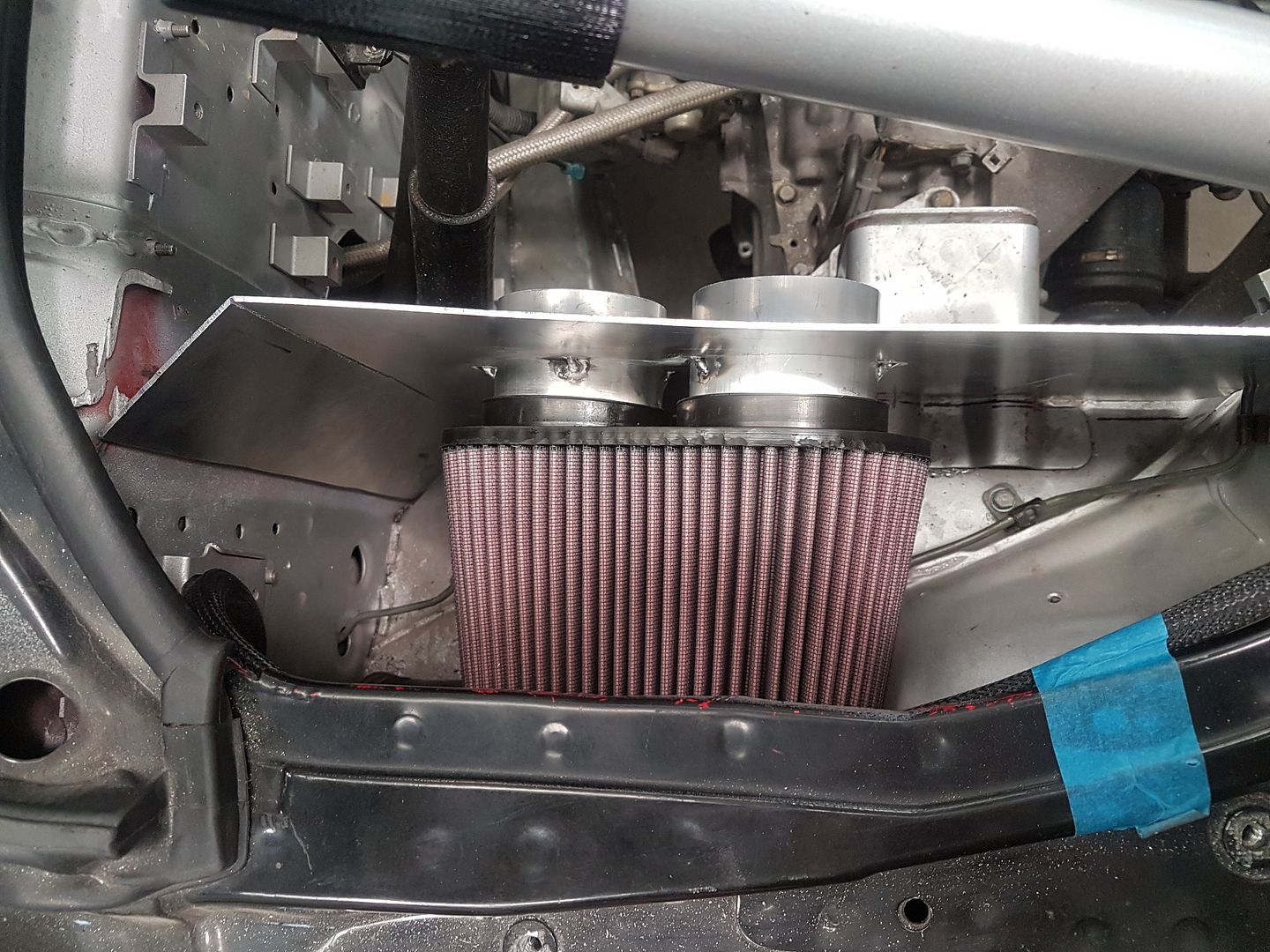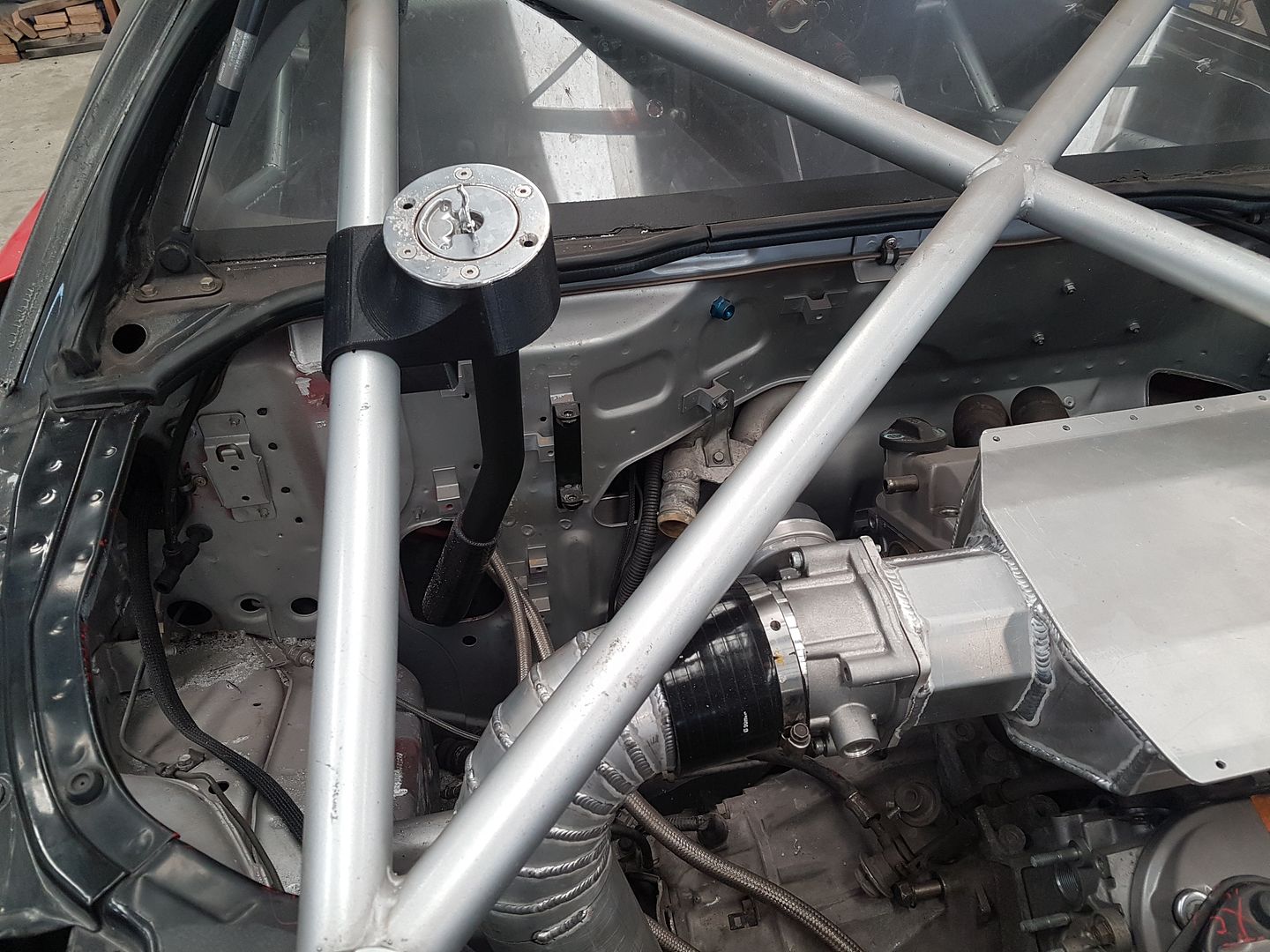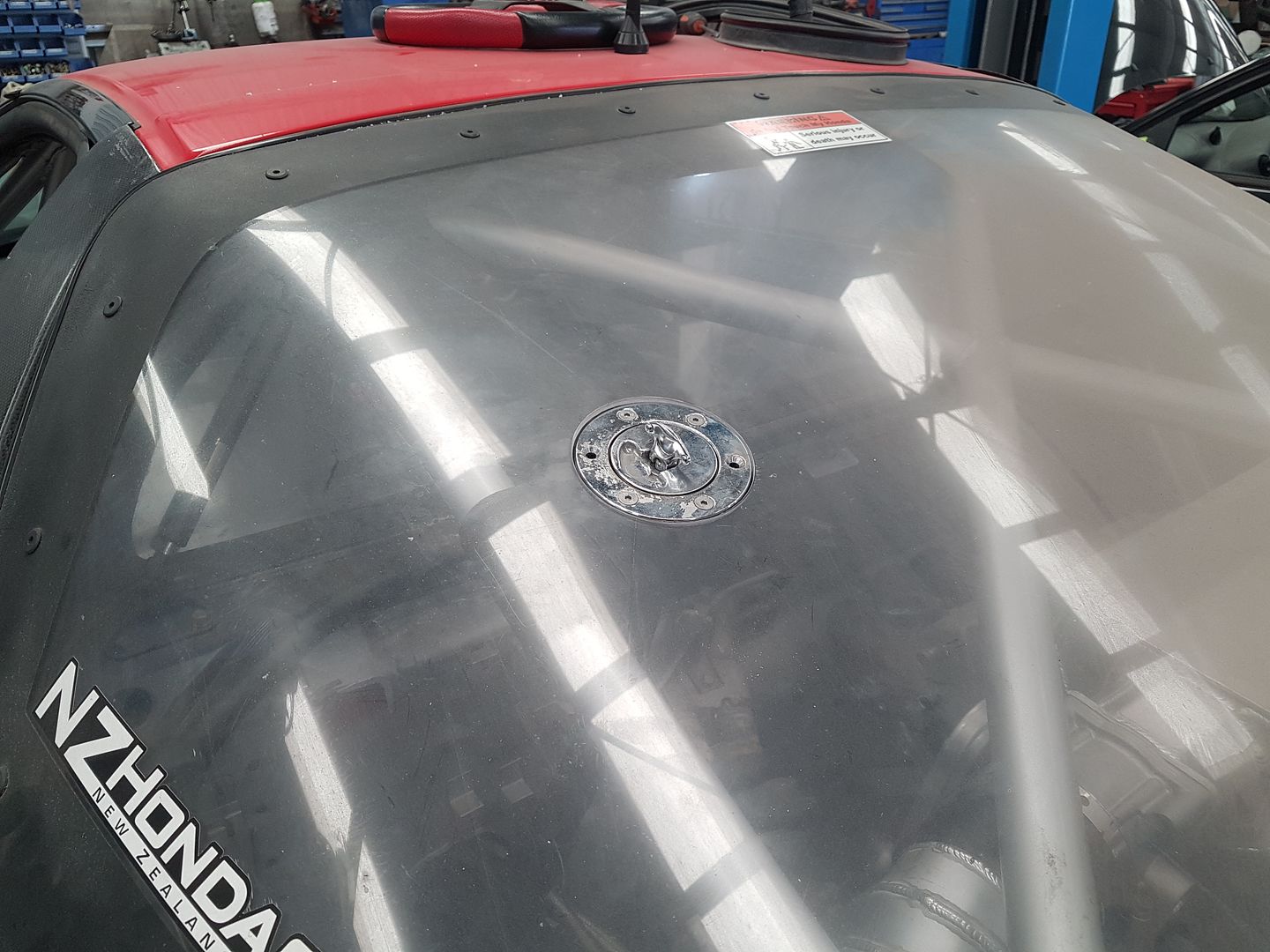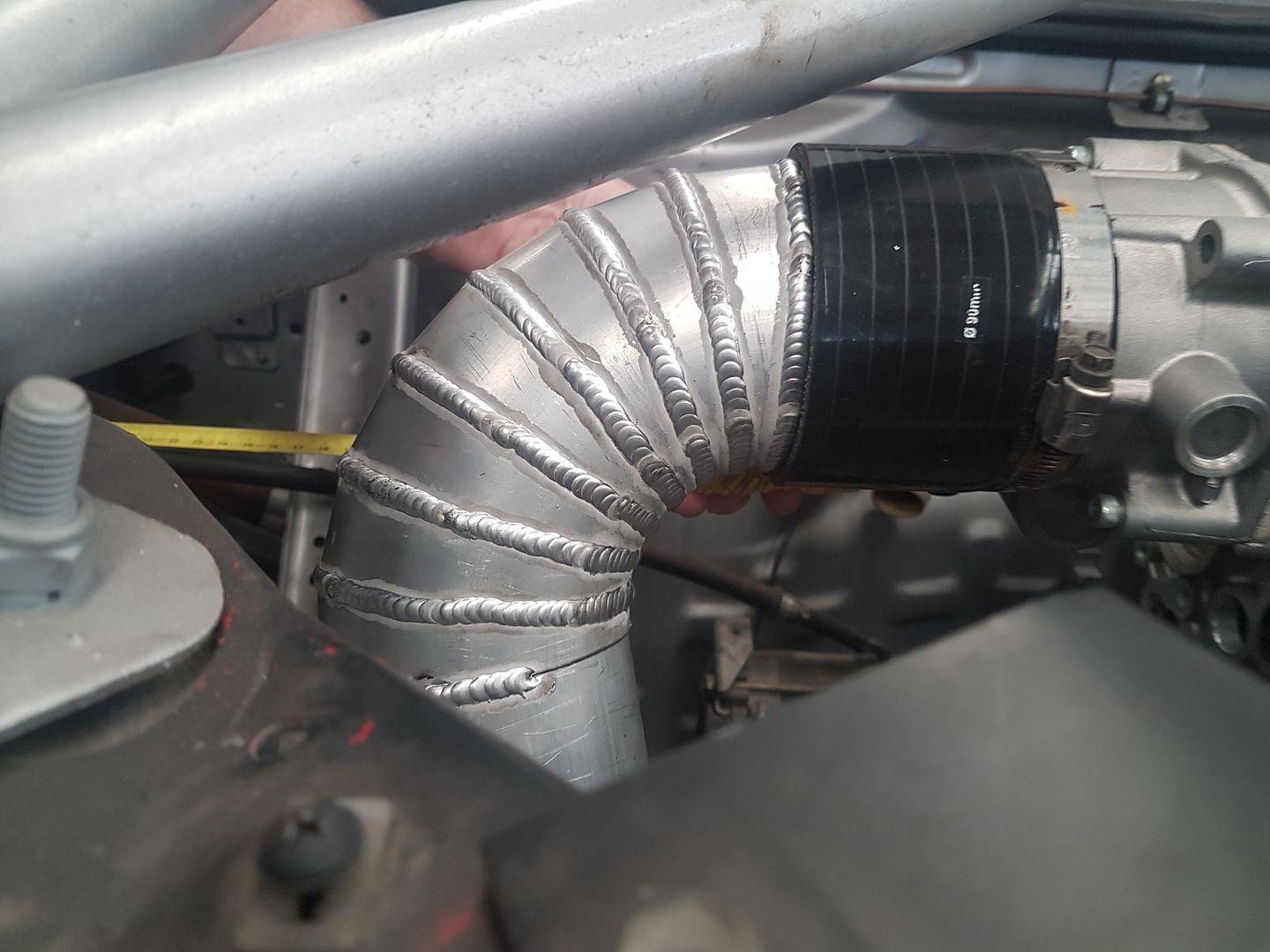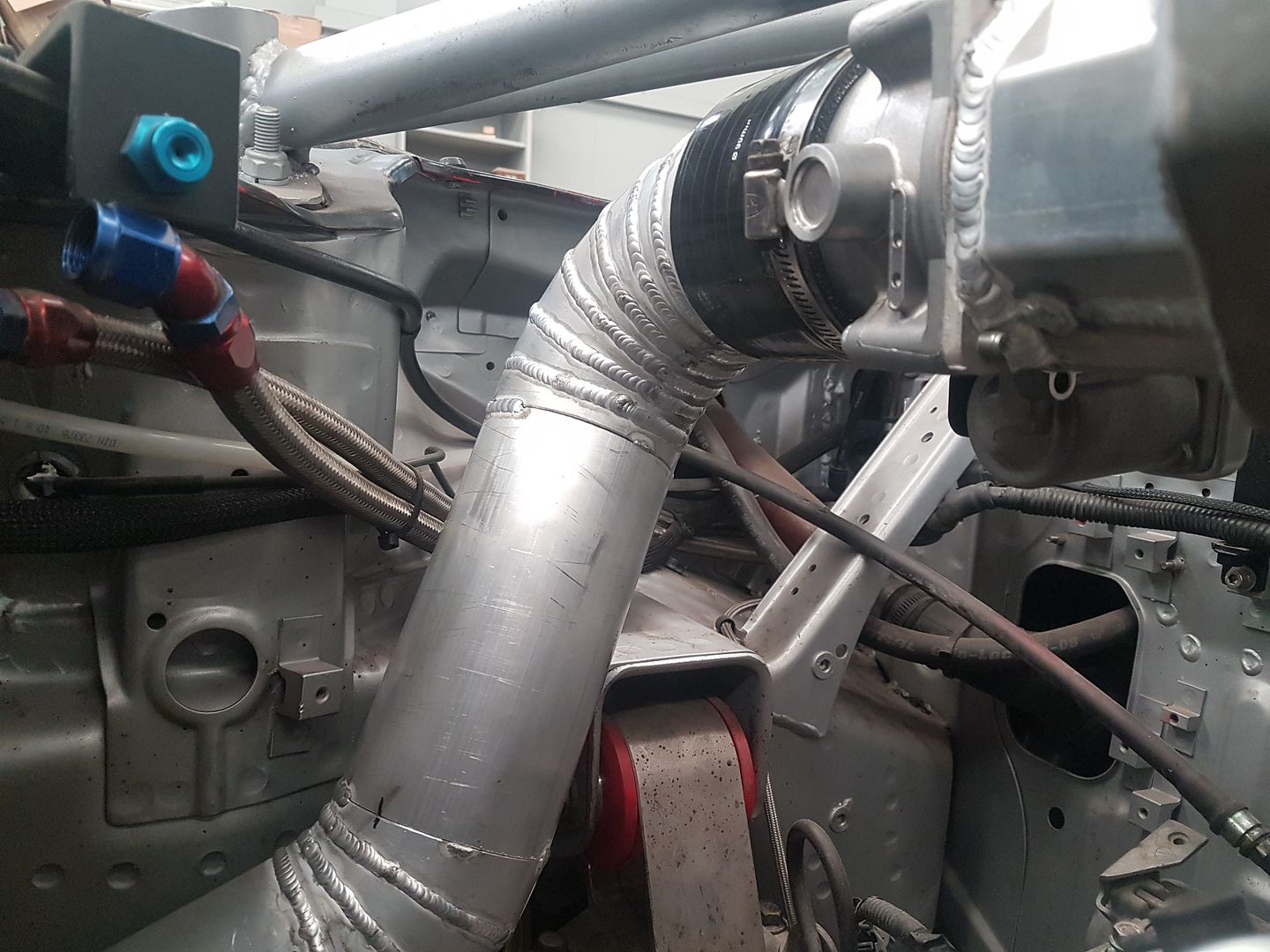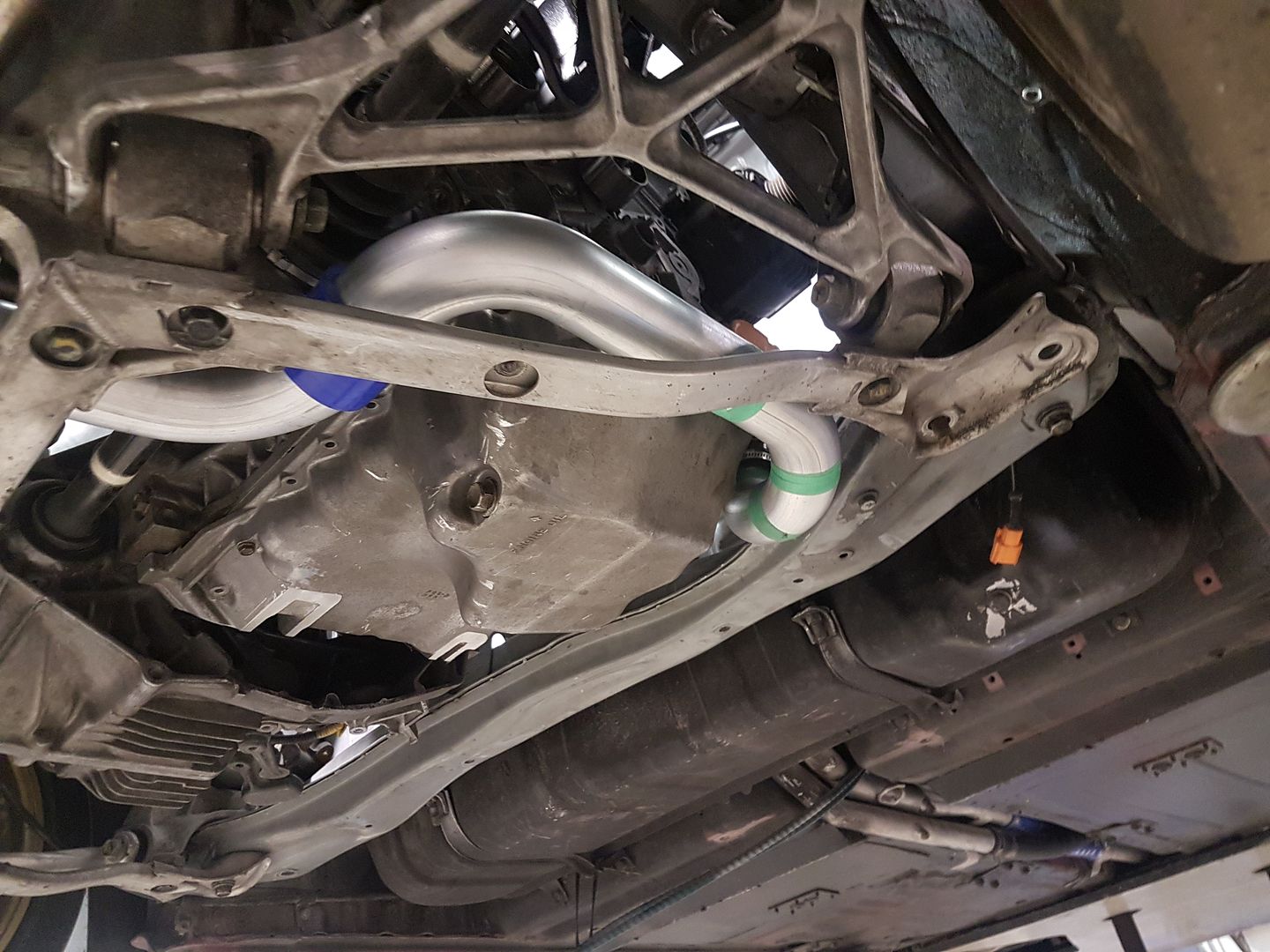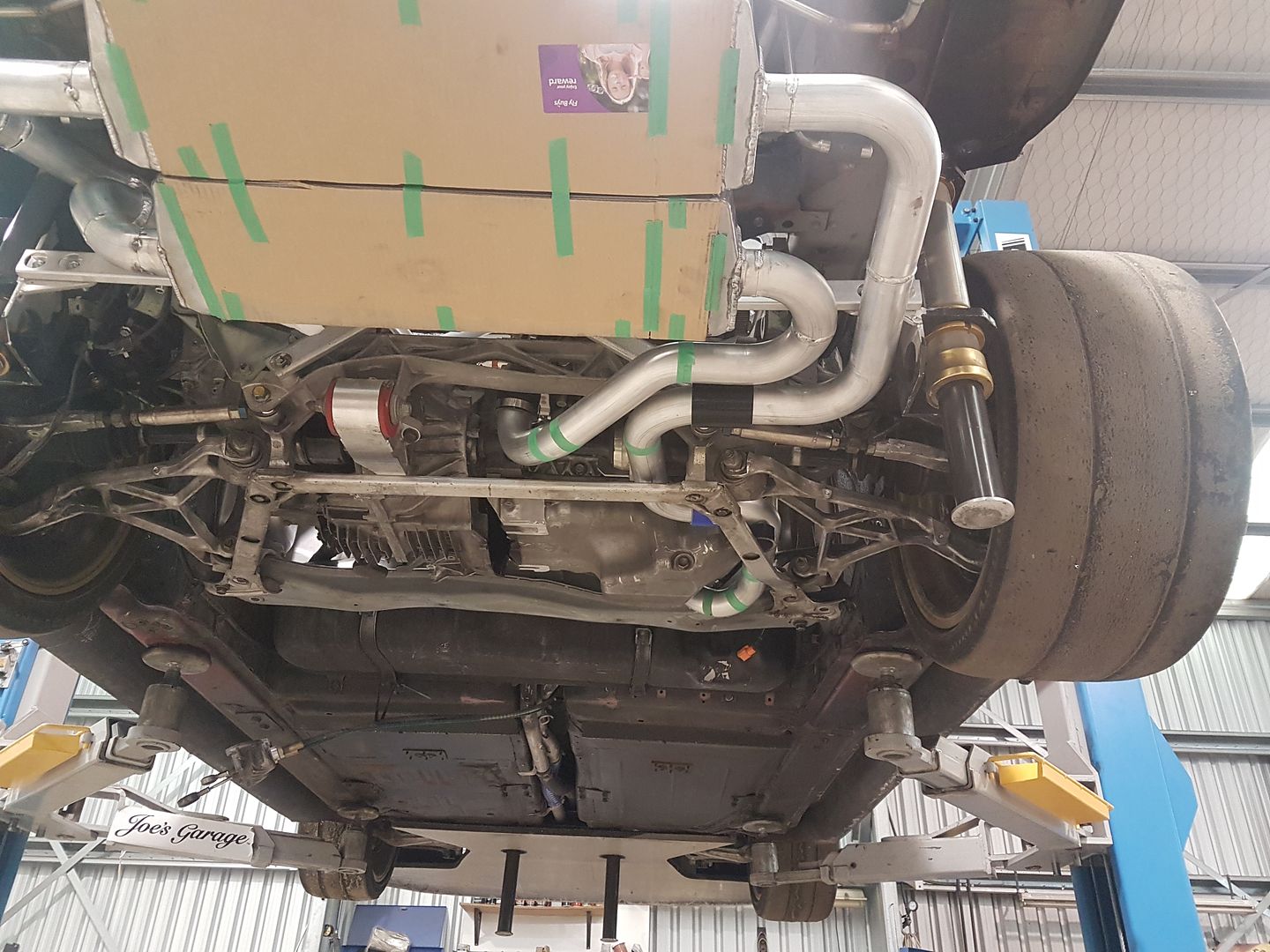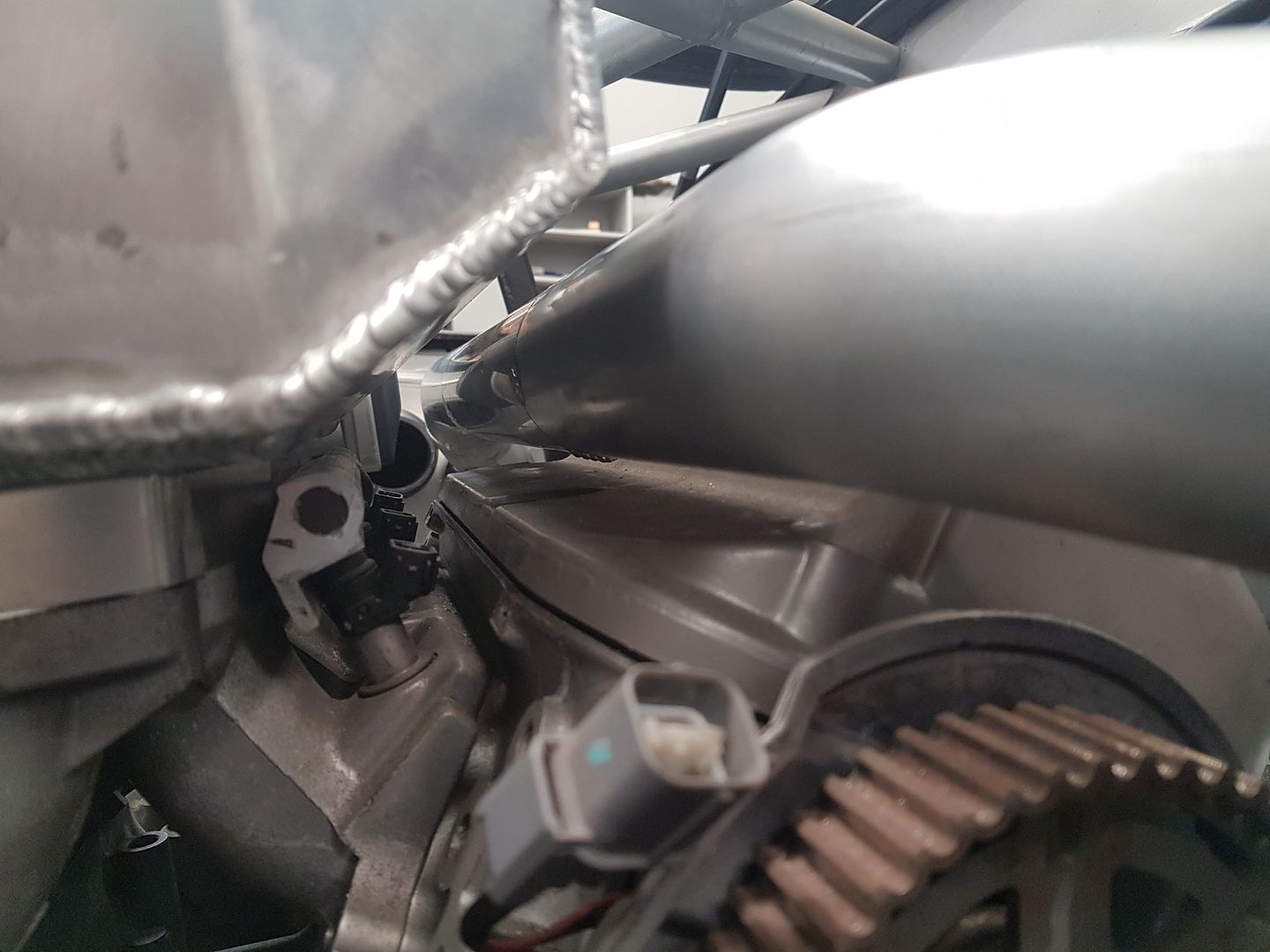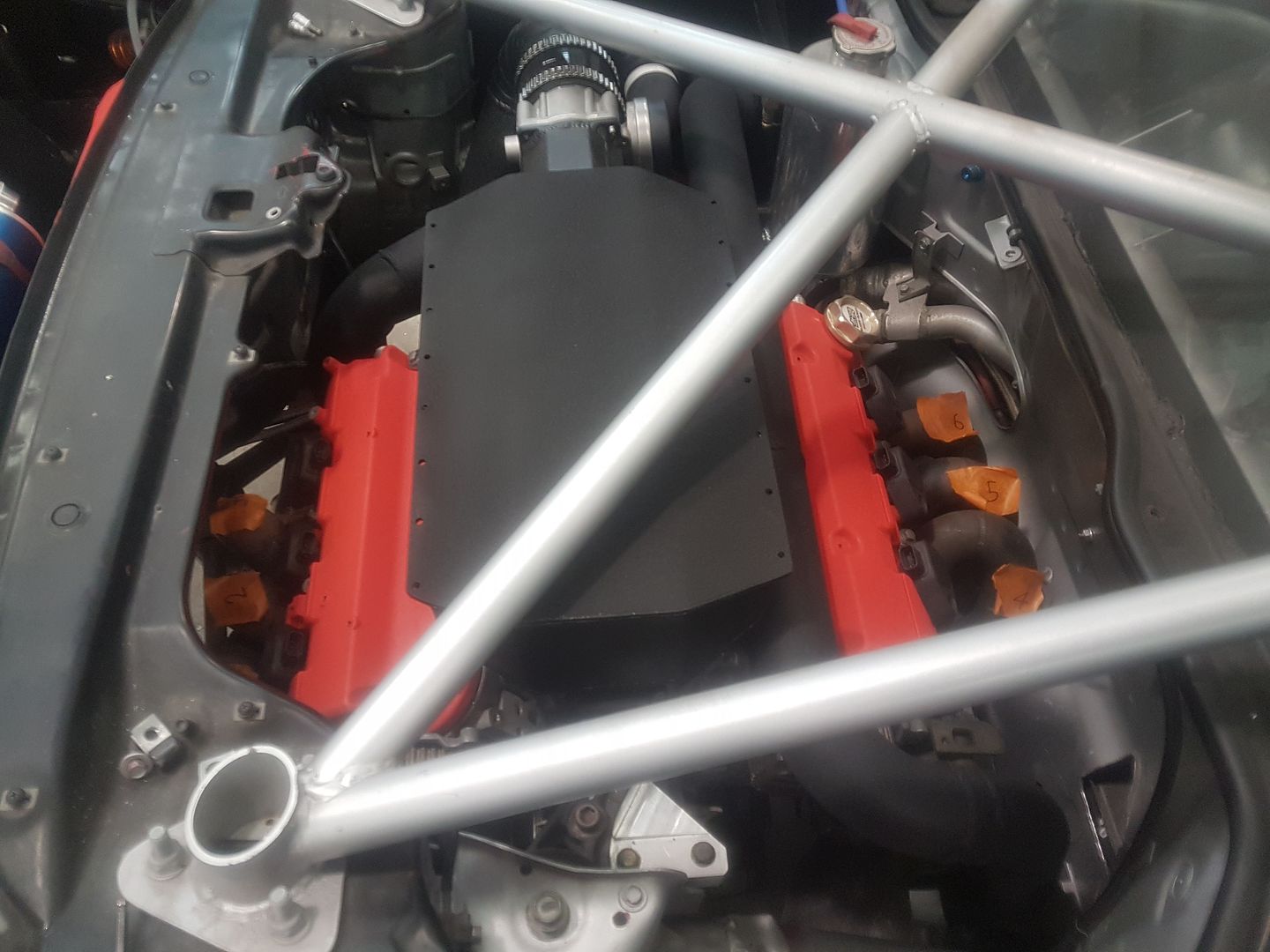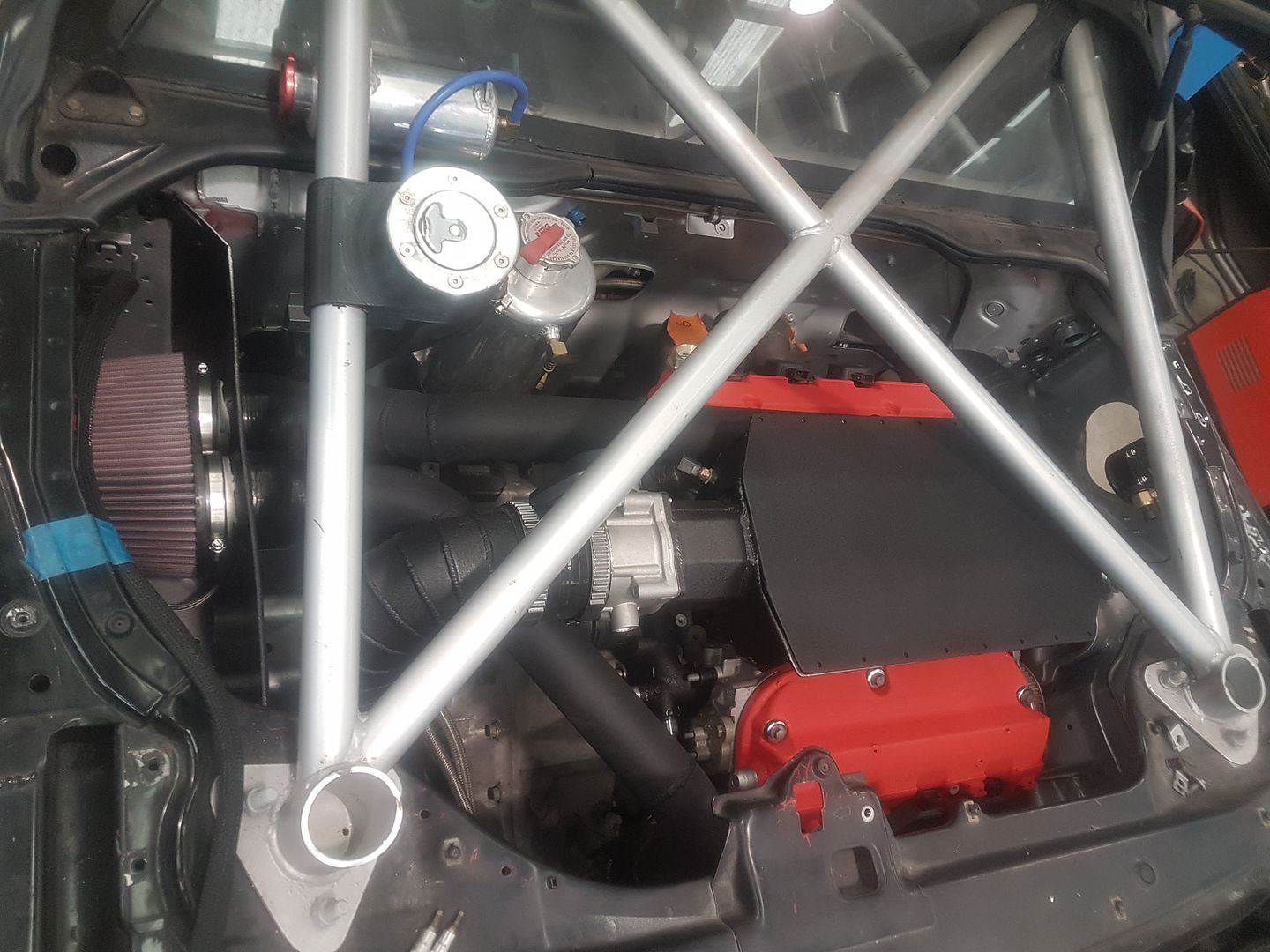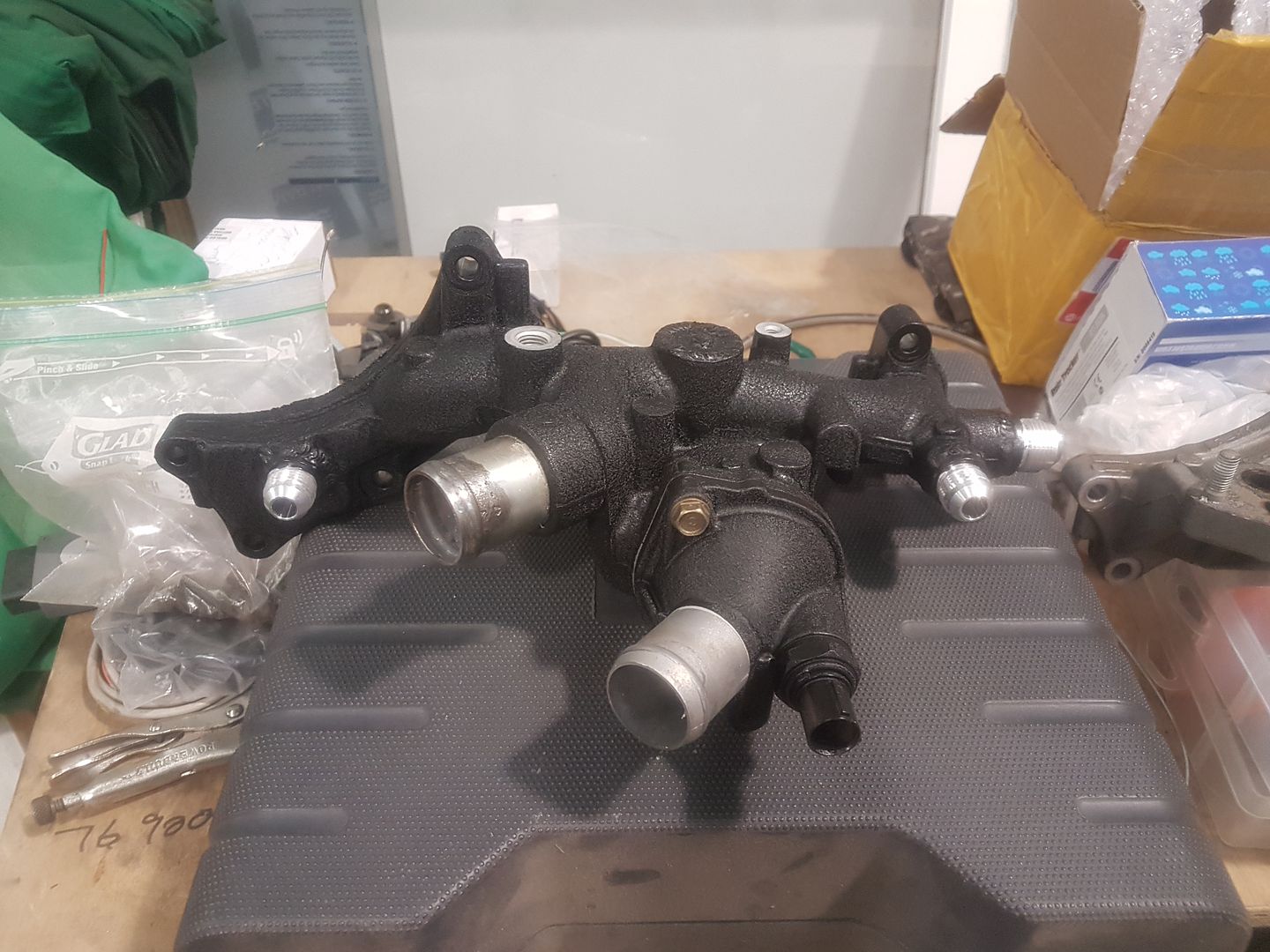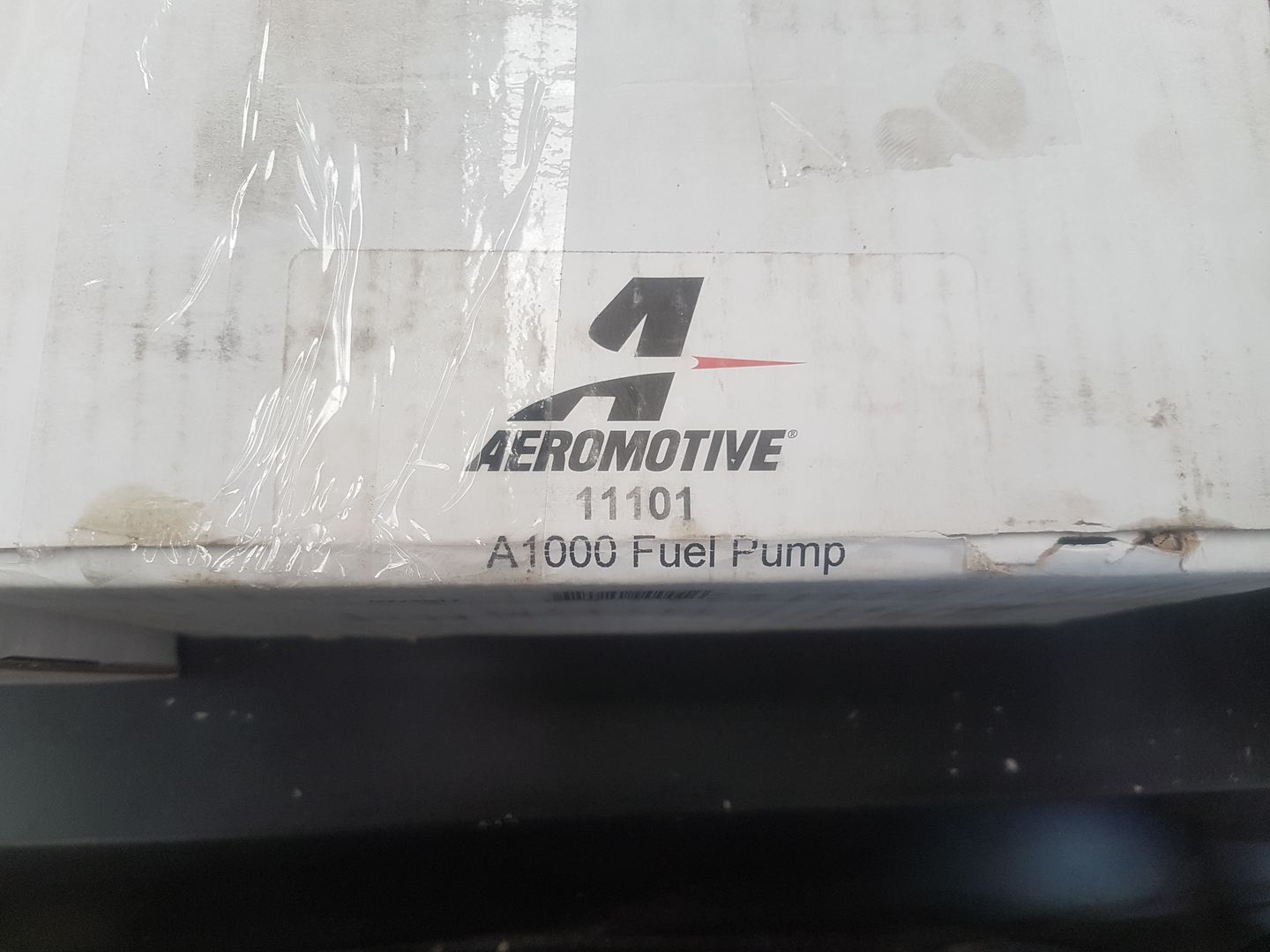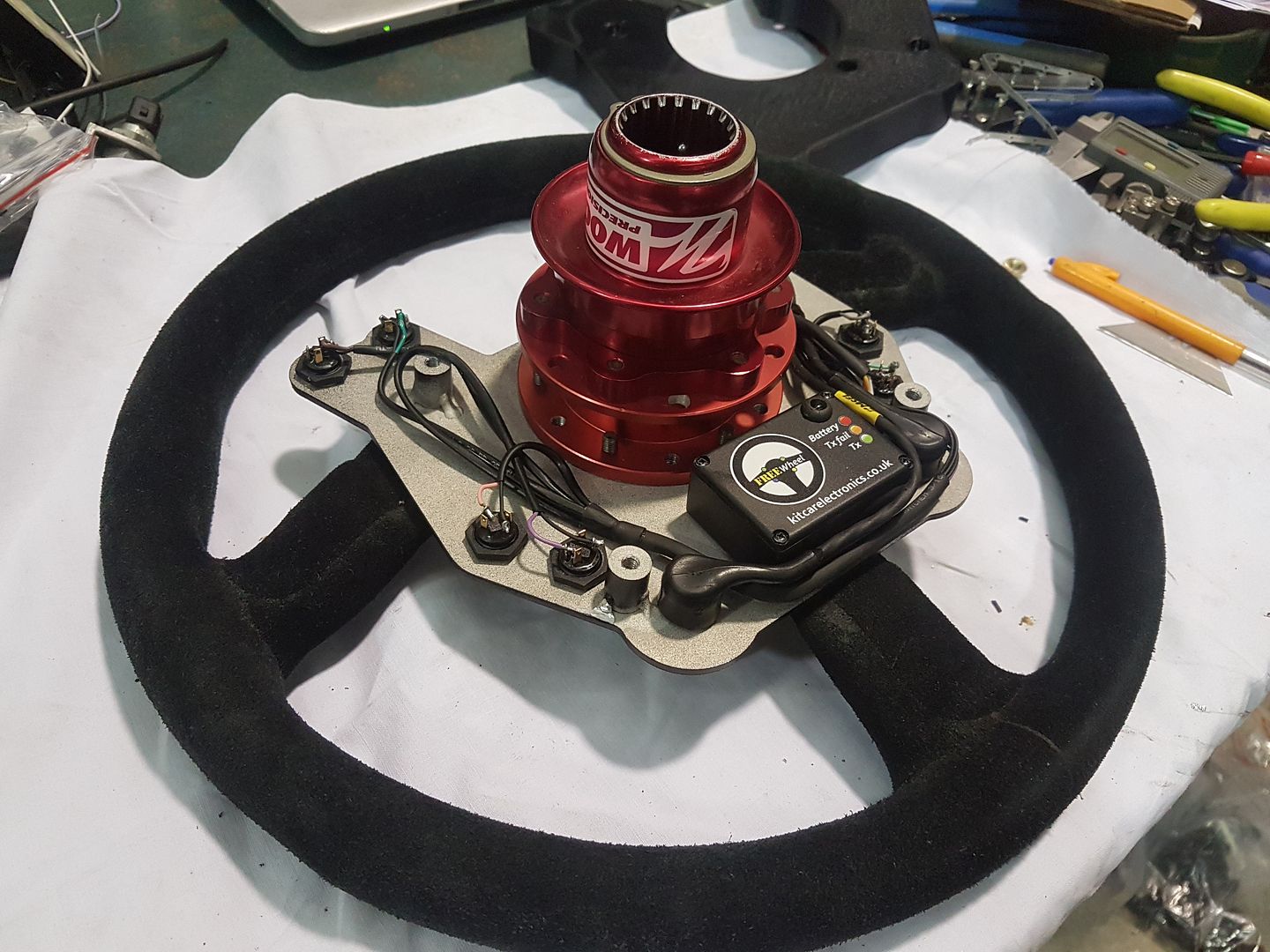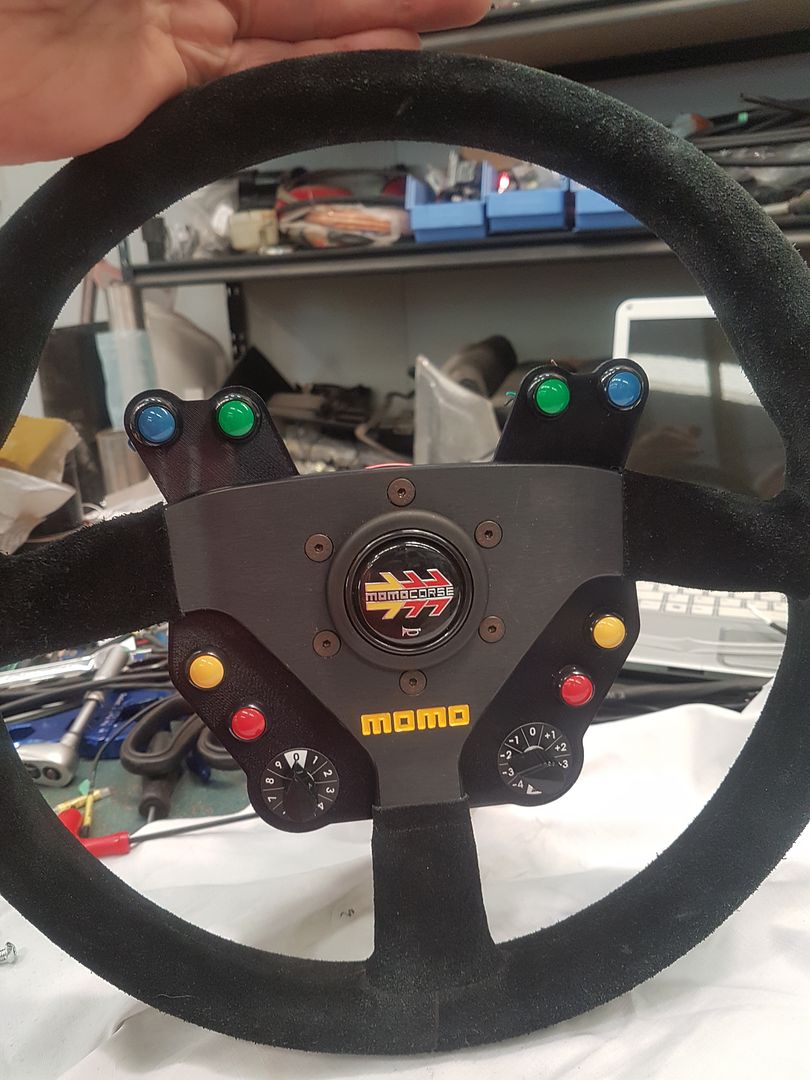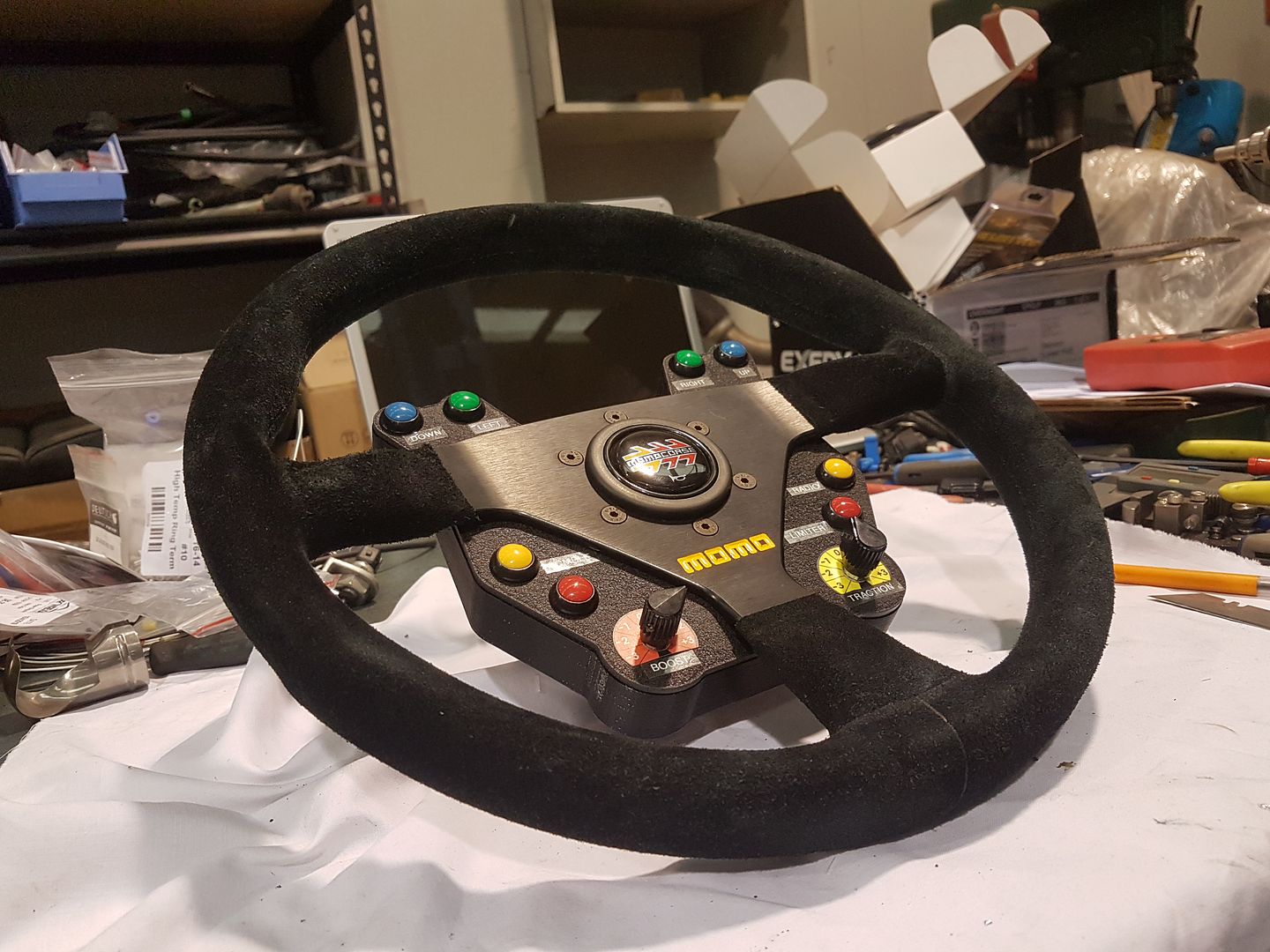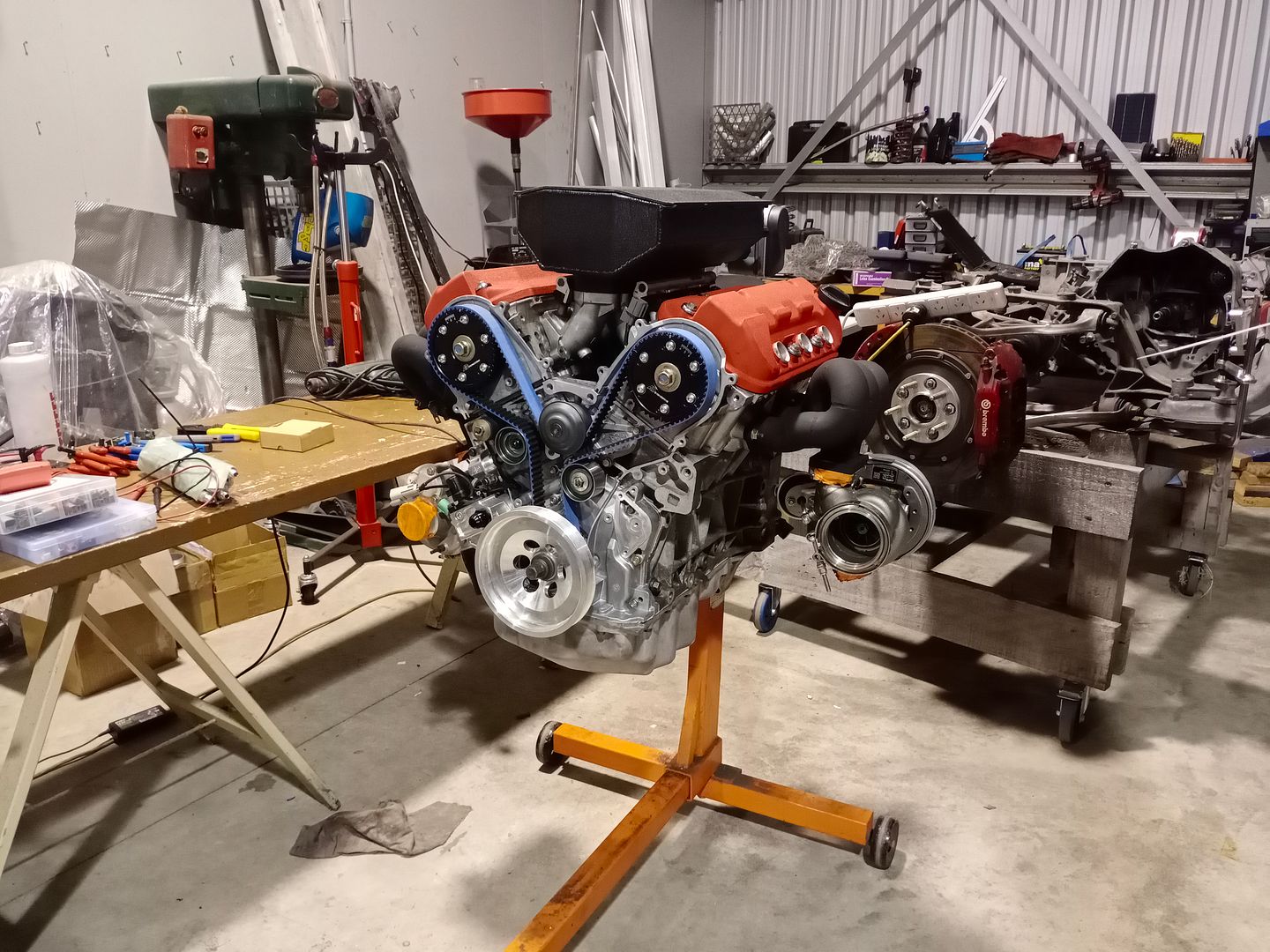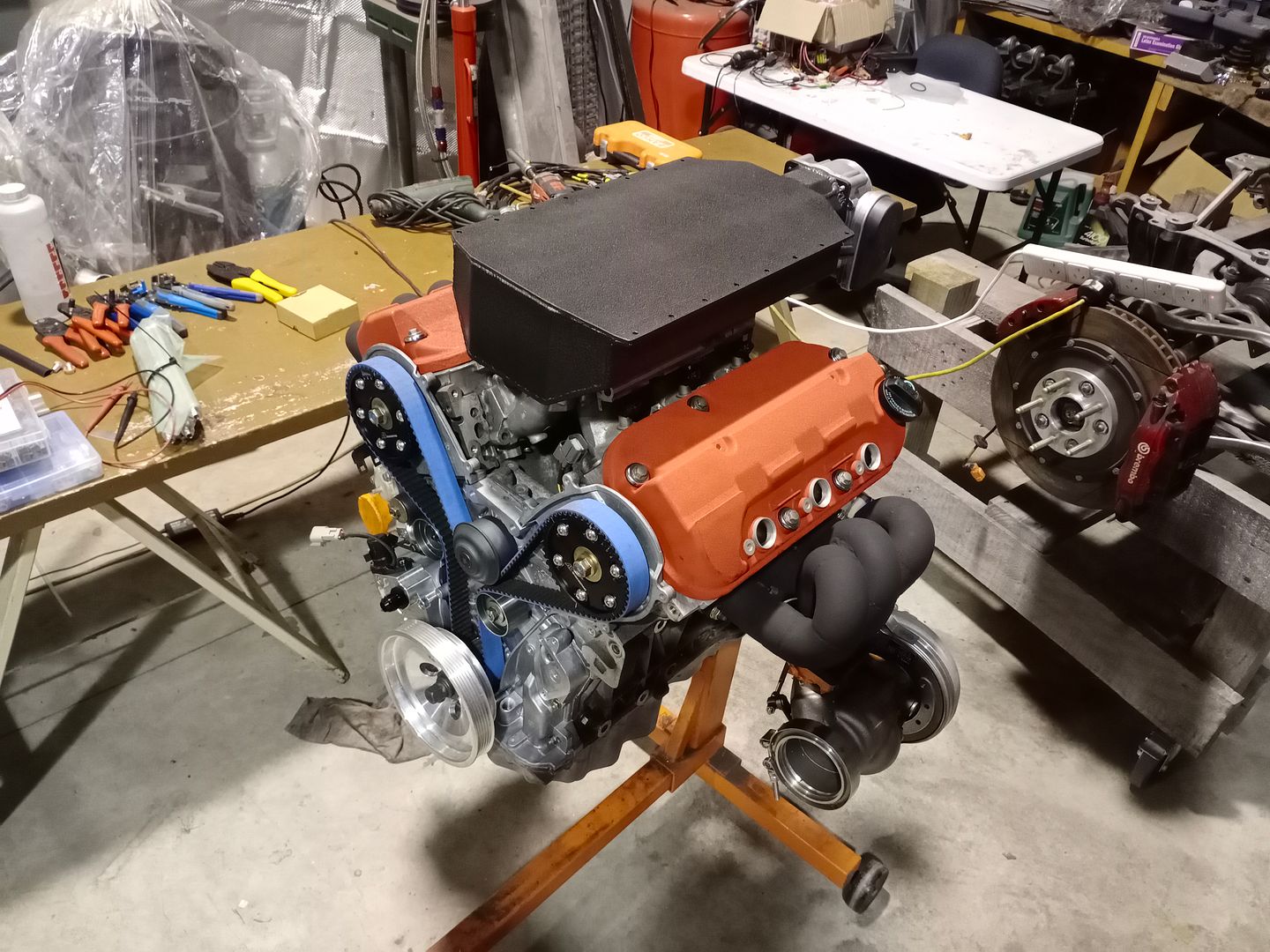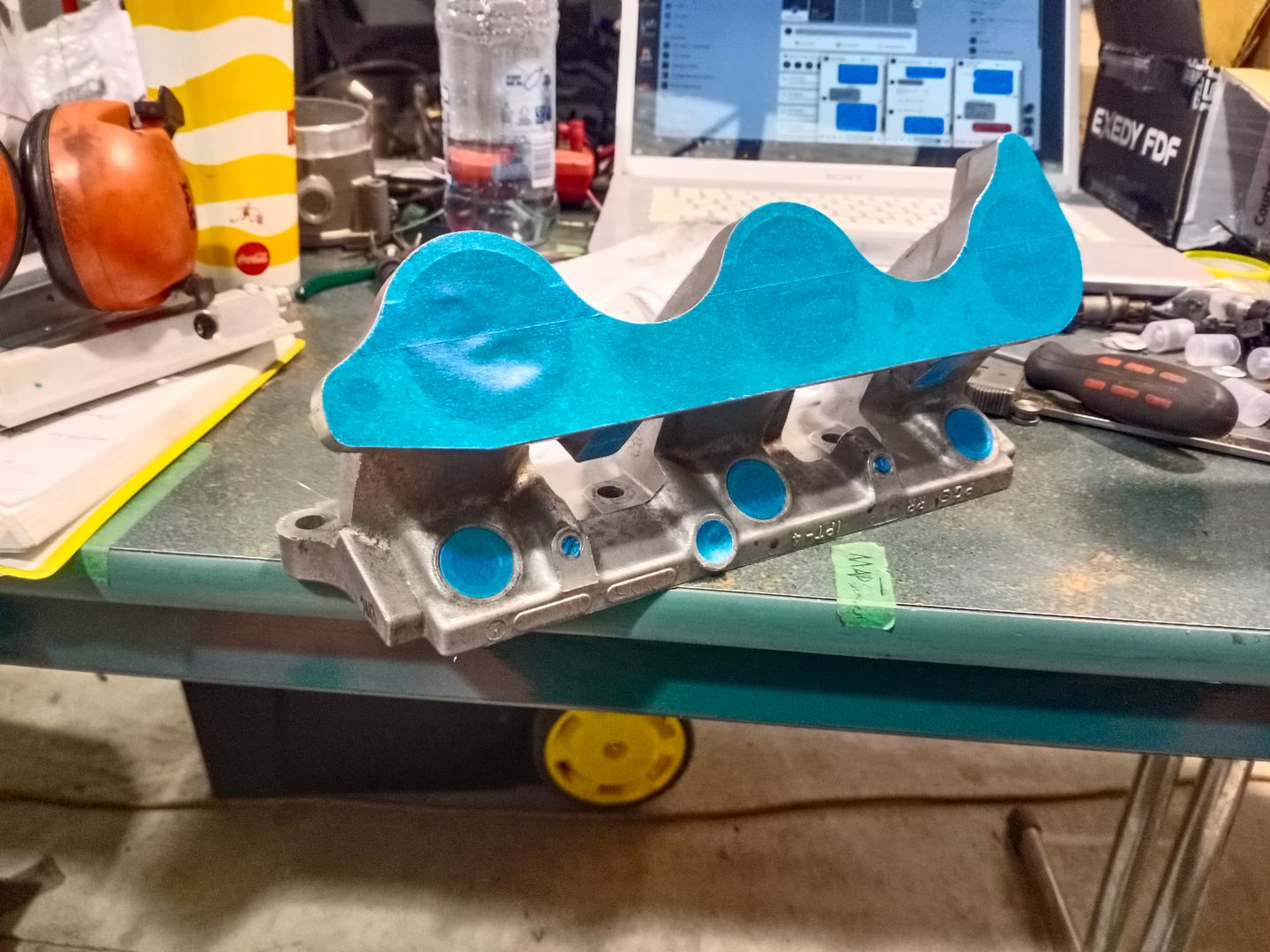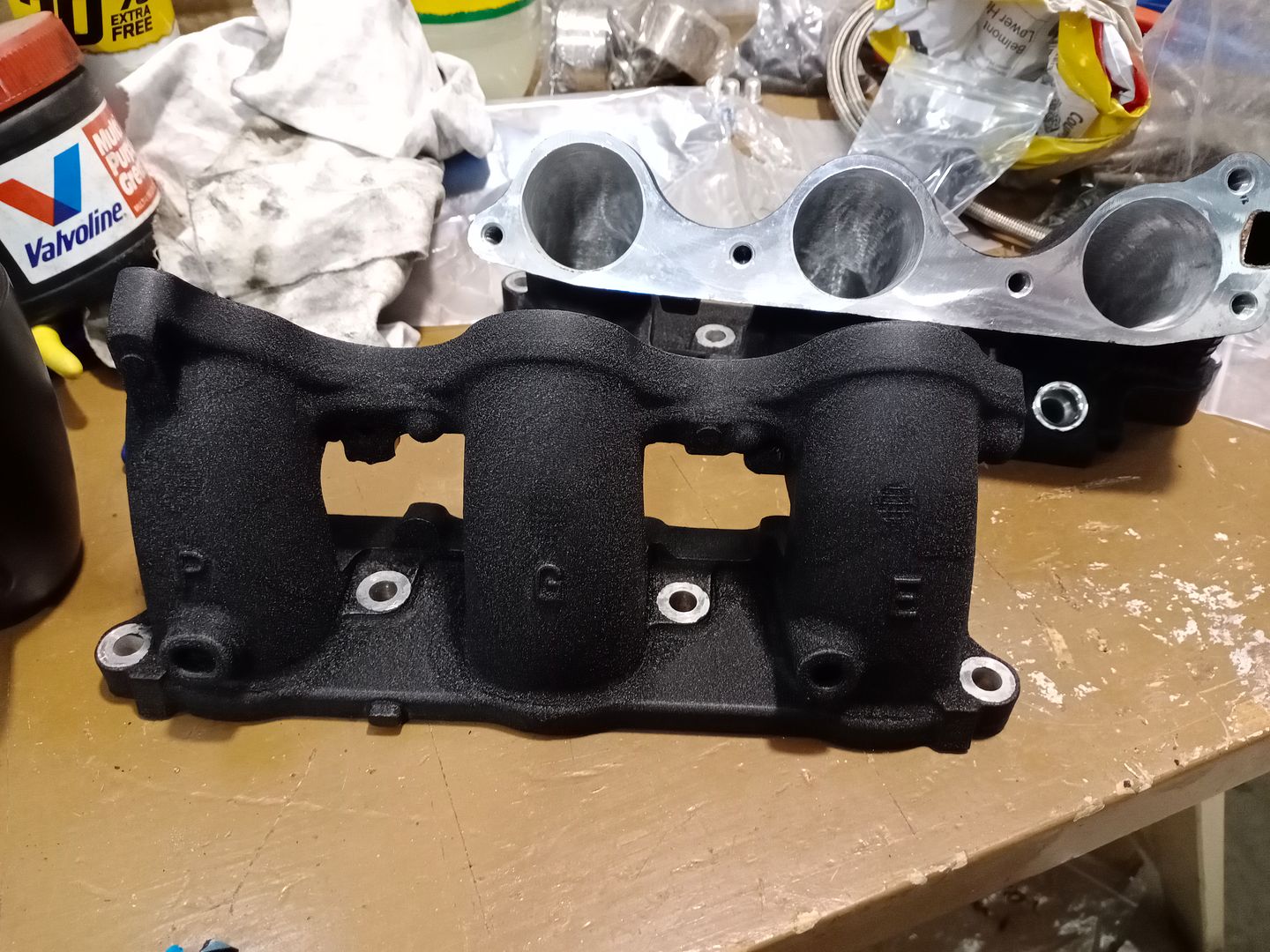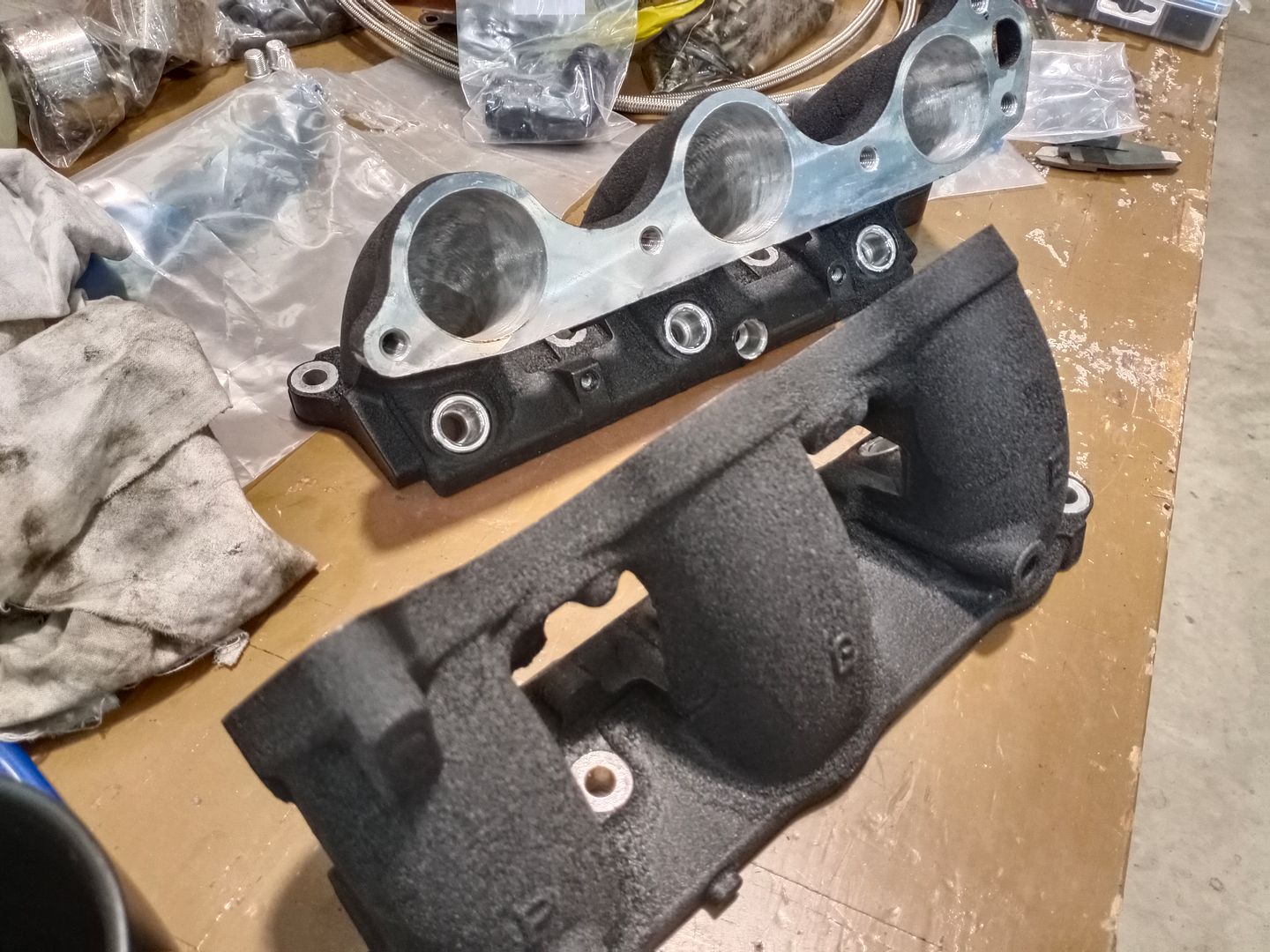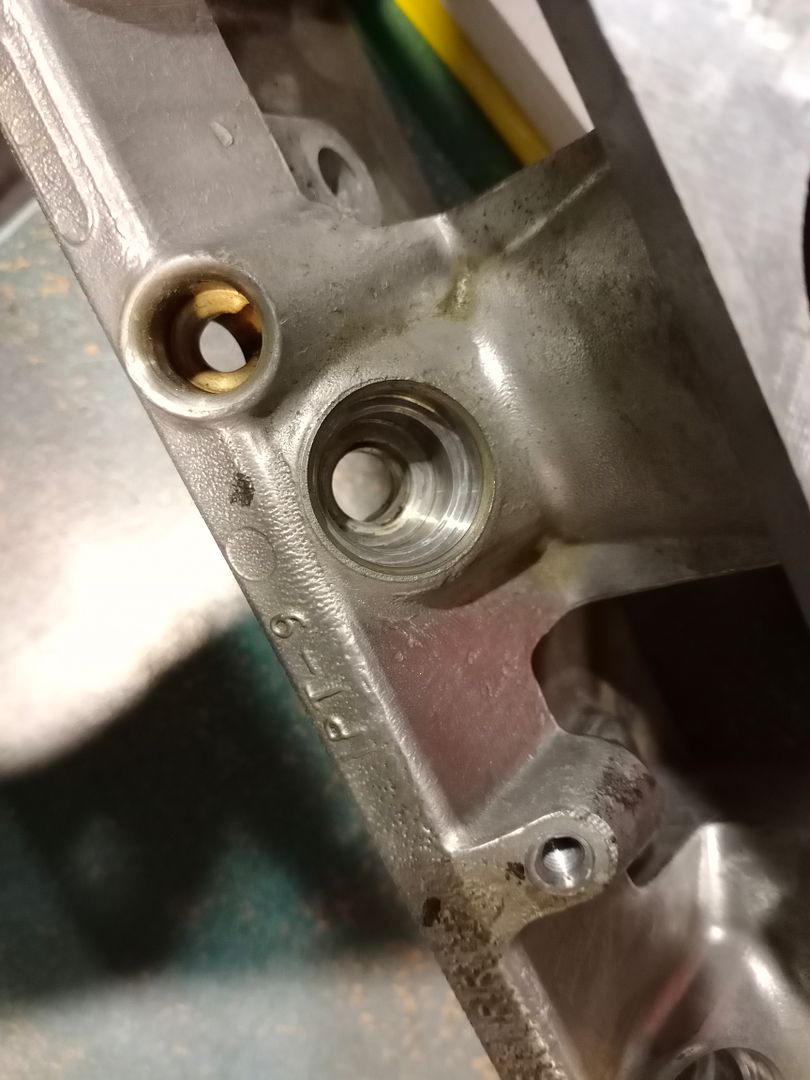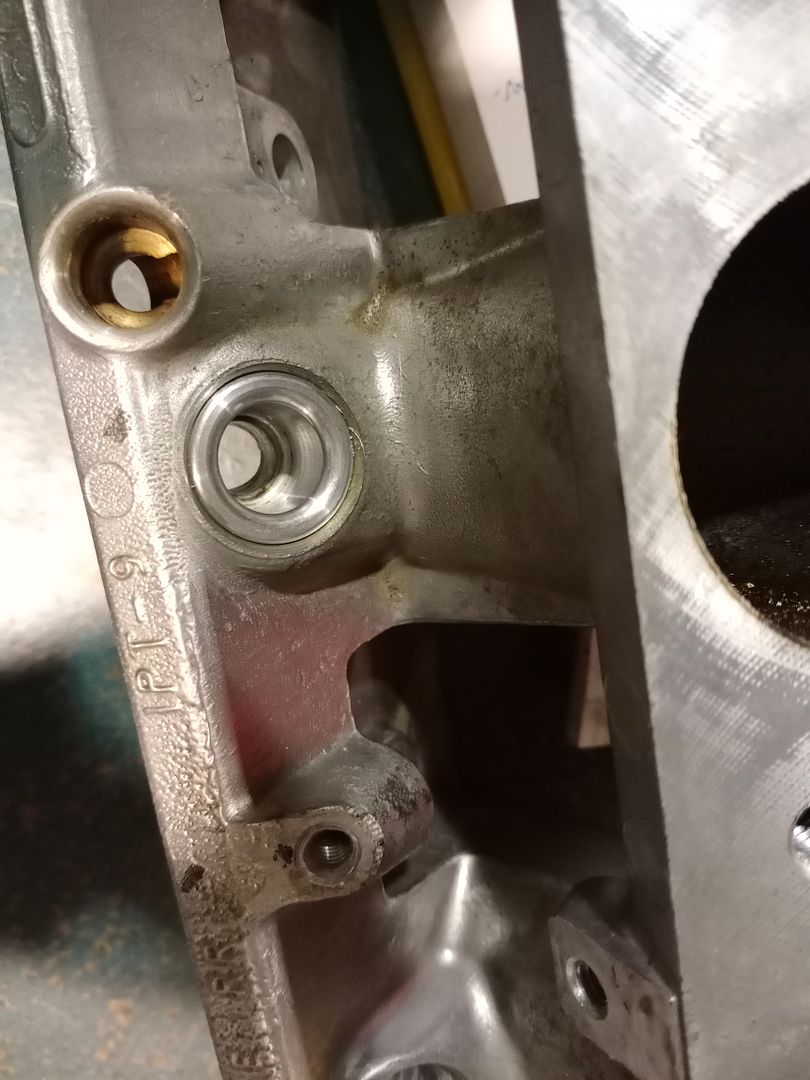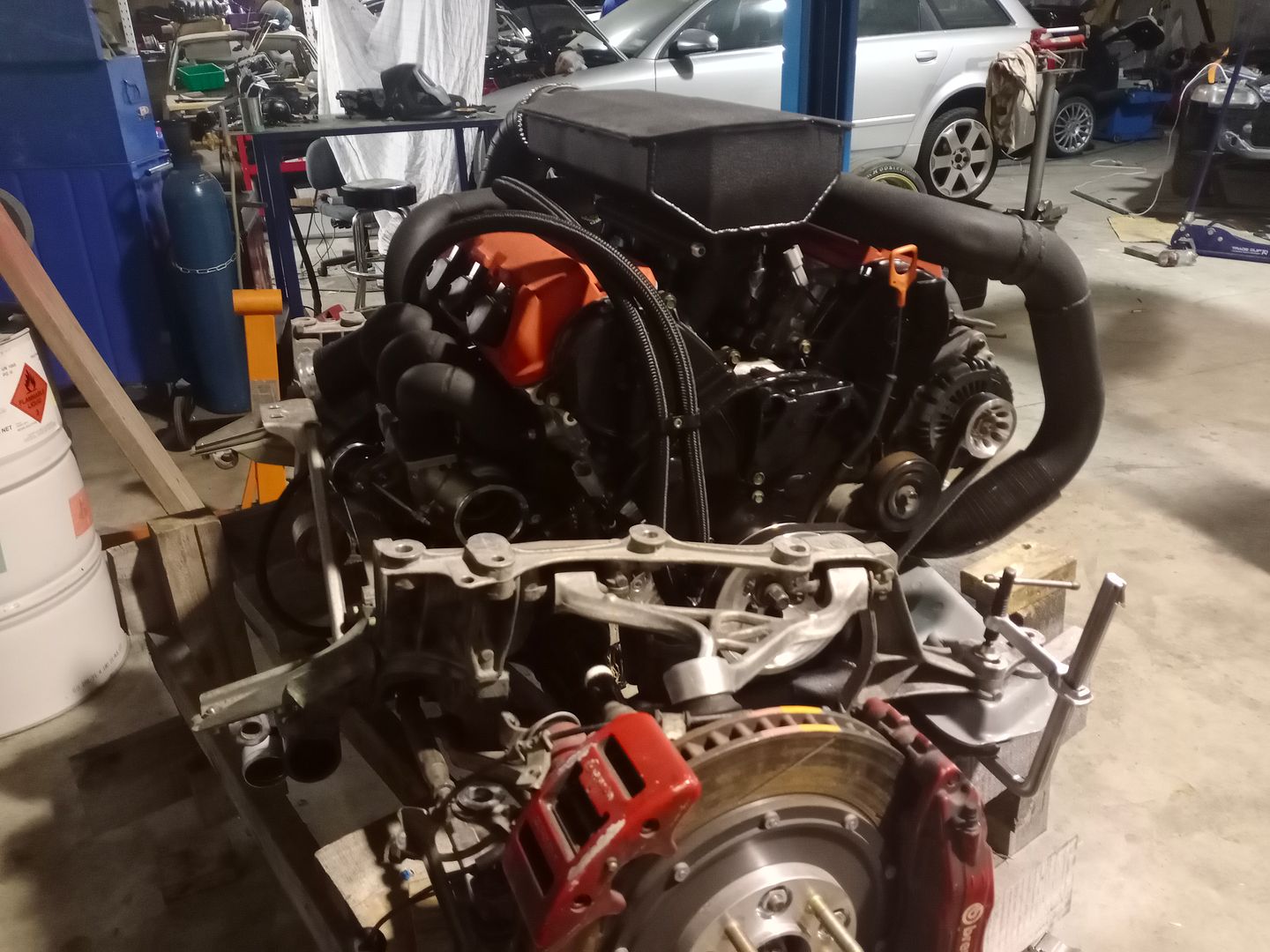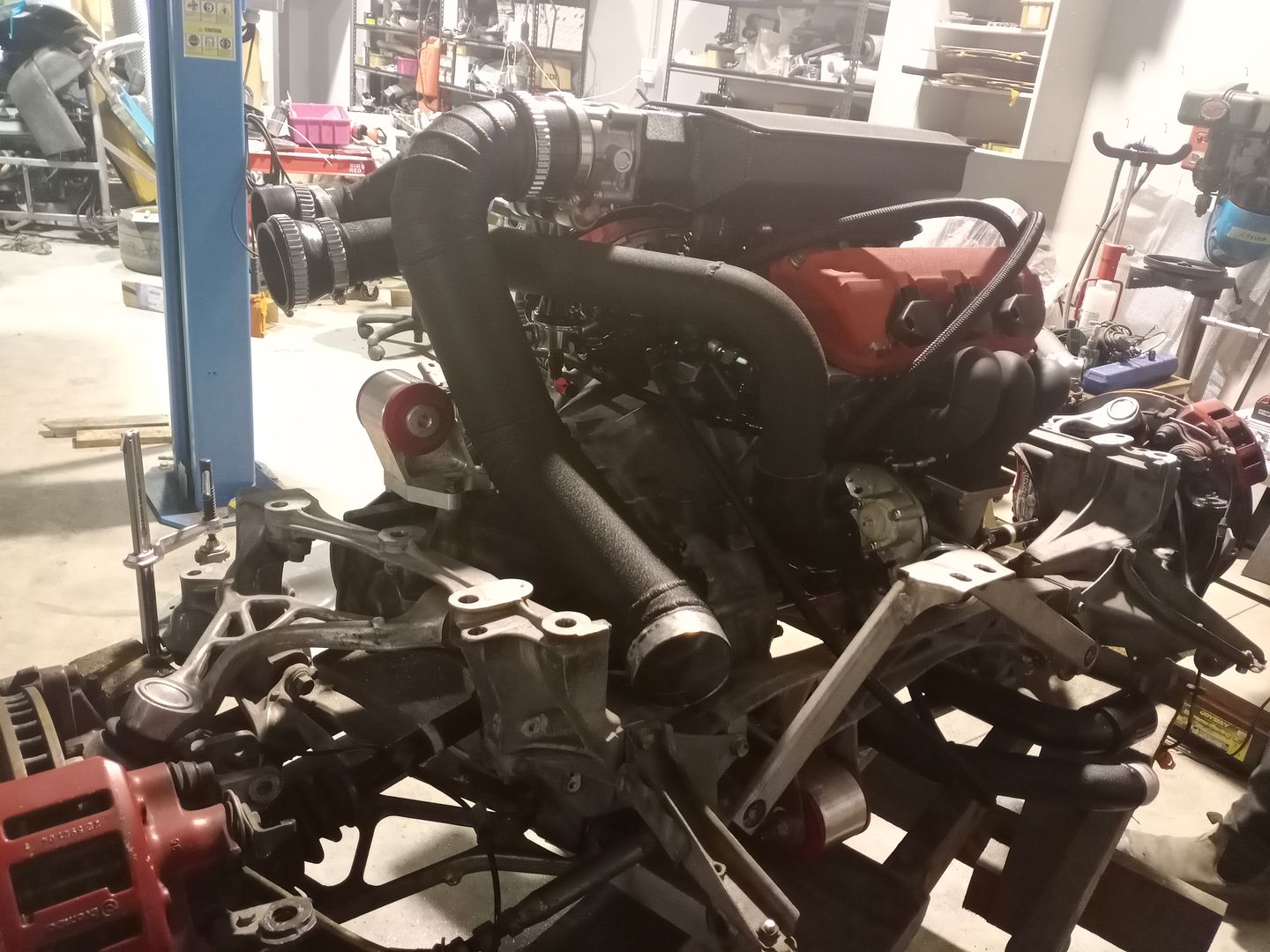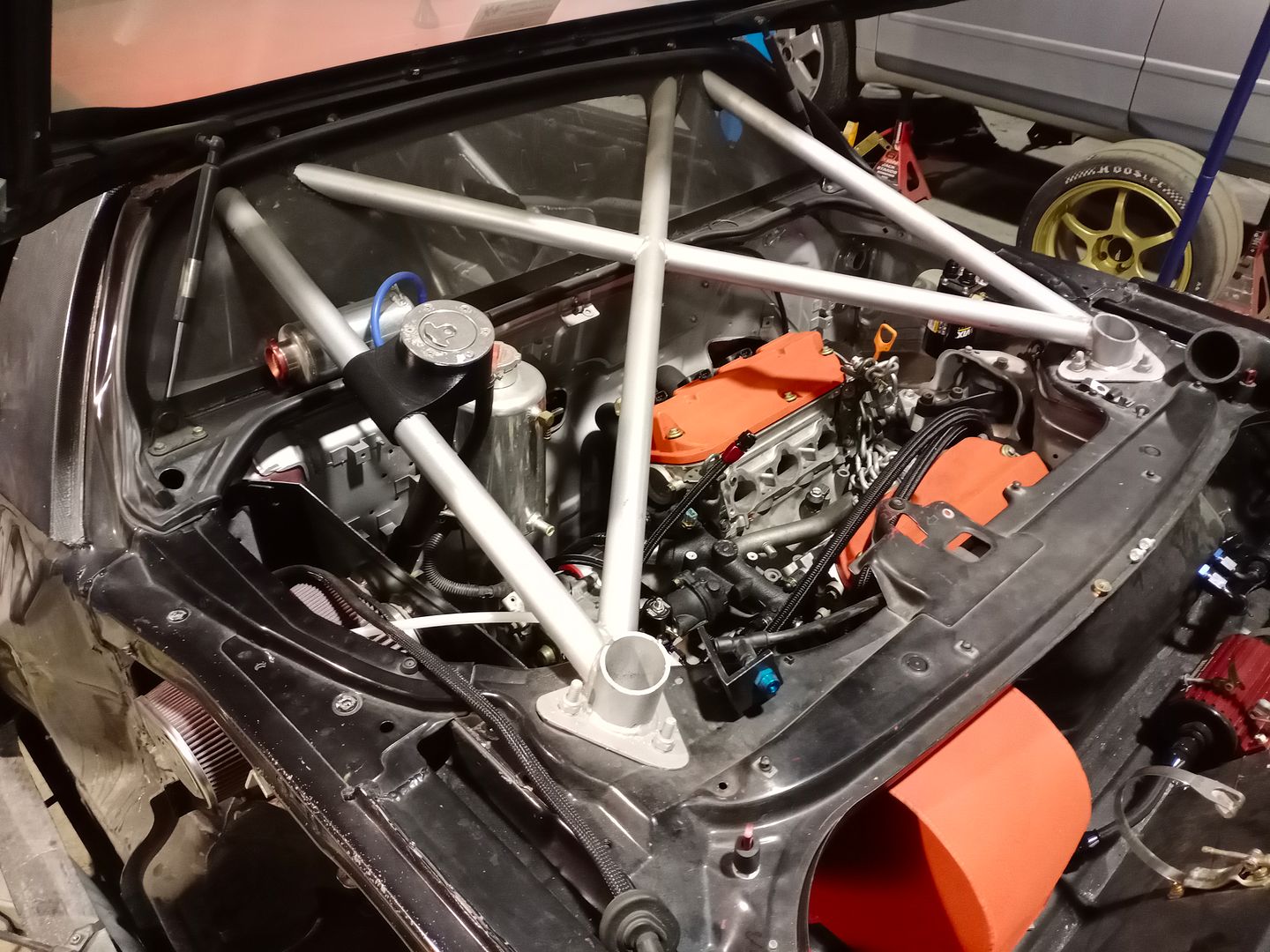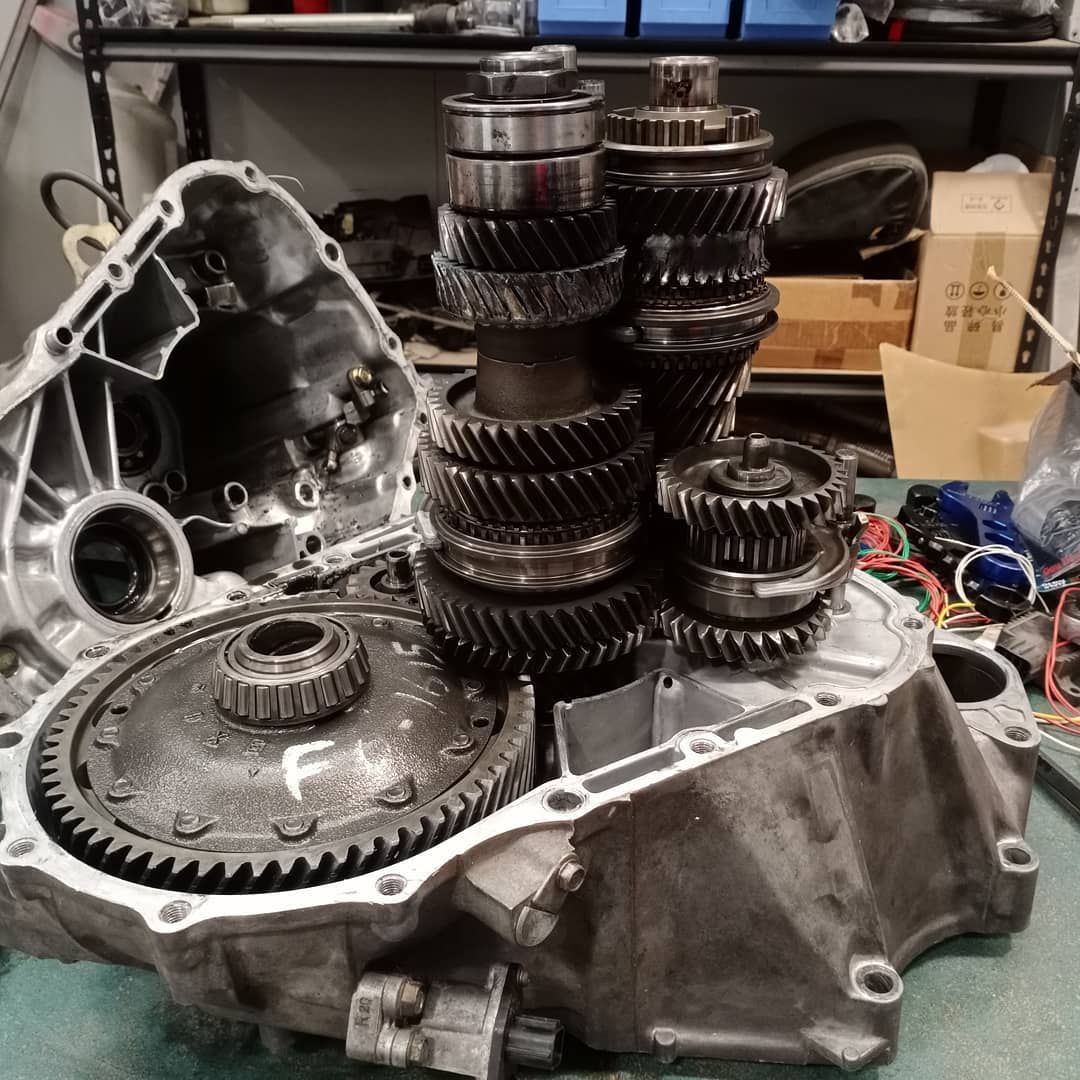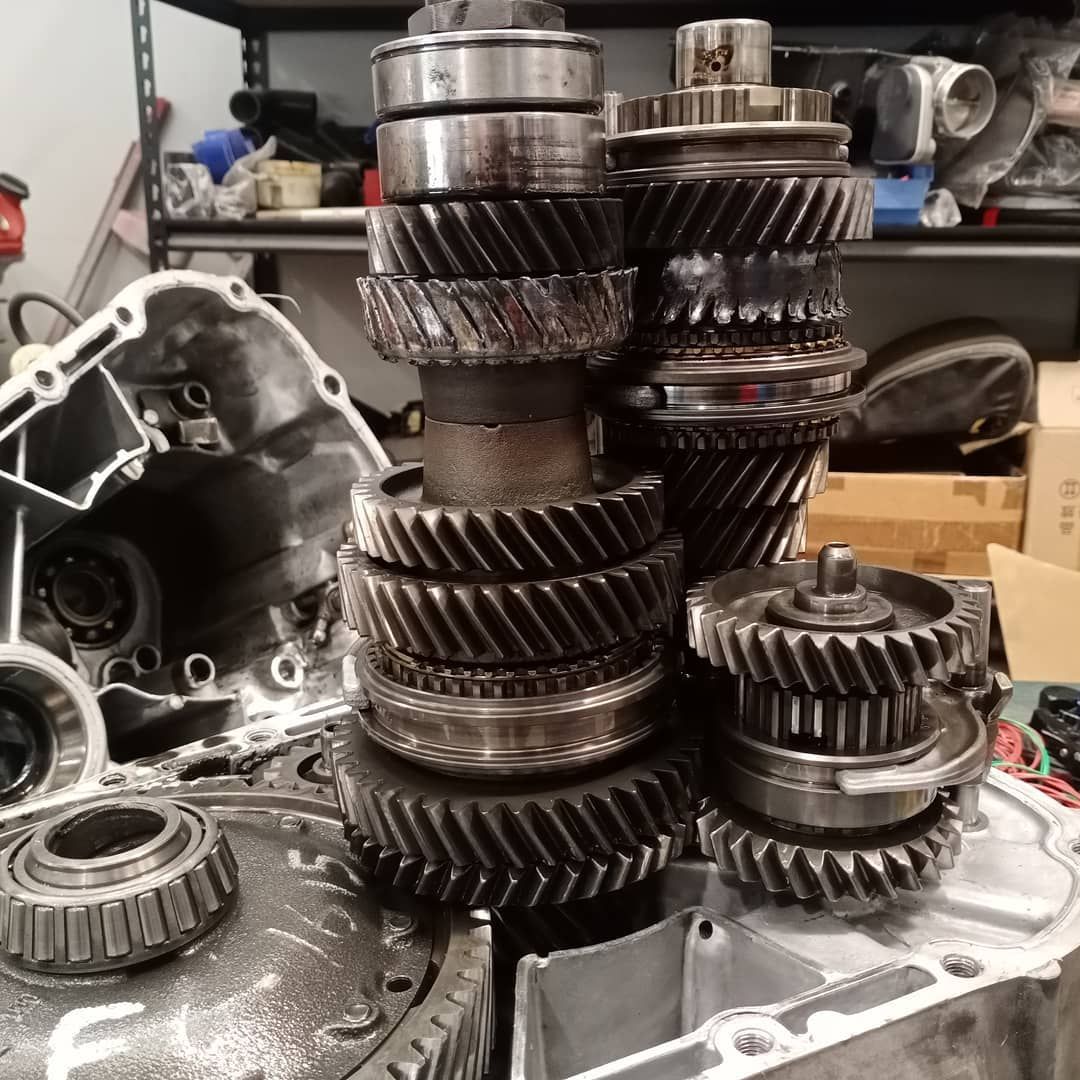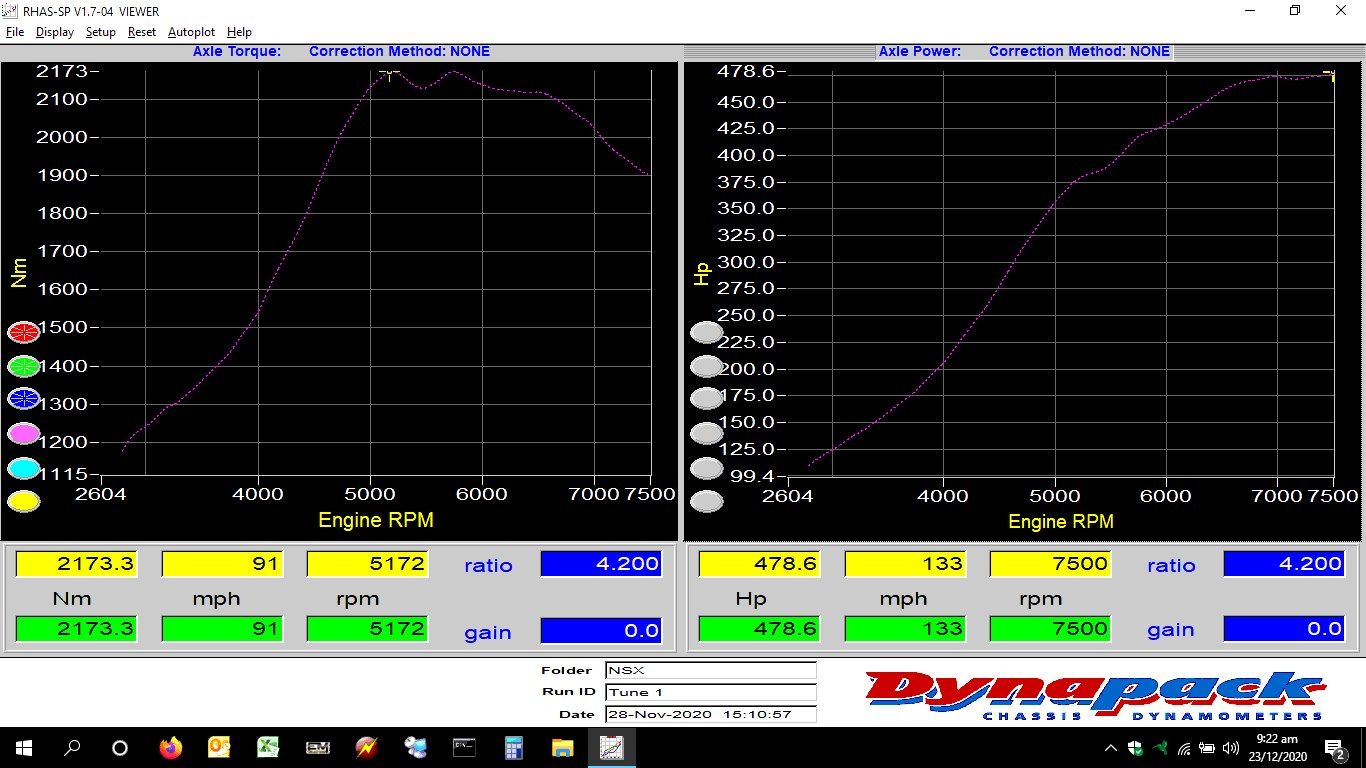OK so it's been a while but the car is finally back together and has been on the dyno.......... I'll get to that later, but just wanted to go through the stuff that we needed to do before the car was ready.
This whole upgrade process was meant to be quite straight forward, but as time went on, the scope just crept and crept and we have ended up re-engineering a large amount of the car. New engine, turbos, exhausts, oil system, entire wiring loom for whole car including the addition of a large amount of new sensors, diffuser, wing, wireless steering wheel etc etc the list goes on.
The first thing I needed to relocate and replumb was the oil cooler. Initially we had this on the right hand side vent just behind the door, but now we're using that to route air to the intercoolers so I needed to move it so that we could free up that vent and pathway. I decided (well there was pretty much no choice) to move it to the rear of the car. The oil coolers don't need as much direct air as something like an intercooler or radiator needs, but where I've located it, I think it will still get pretty good airflow anyhow.
So oil basically travels up from the engine to a remote oil filter housing just behind the driver (RHD), then leaves the filter and travels to the boot, throught the boot and out the back to the cooler. Then once it's been through the cooler it comes back into the boot. It then travels towards a one way valve before a T. That T feeds the Accusump with oil / pressure and so the one way valve is there to stop oil trying to force it's way back to the cooler if the Accusump opens and you get 80psi of oil pressure coming down the line..... Once it's left the T it goes back towards the engine and into the engine cleaned and cooled.


I've decided to make the change away from Motul to Liquimoly. Not because Motul hasn't performed well for us, but because I believe that Liquimoly is just that little bit better all around and they support some of my favourite racing series as well so I figure why not support them back. They take it all pretty seriously putting me in touch with a product engineer from Germany to discuss the car and use etc so they could recommend the right product.......very professional.
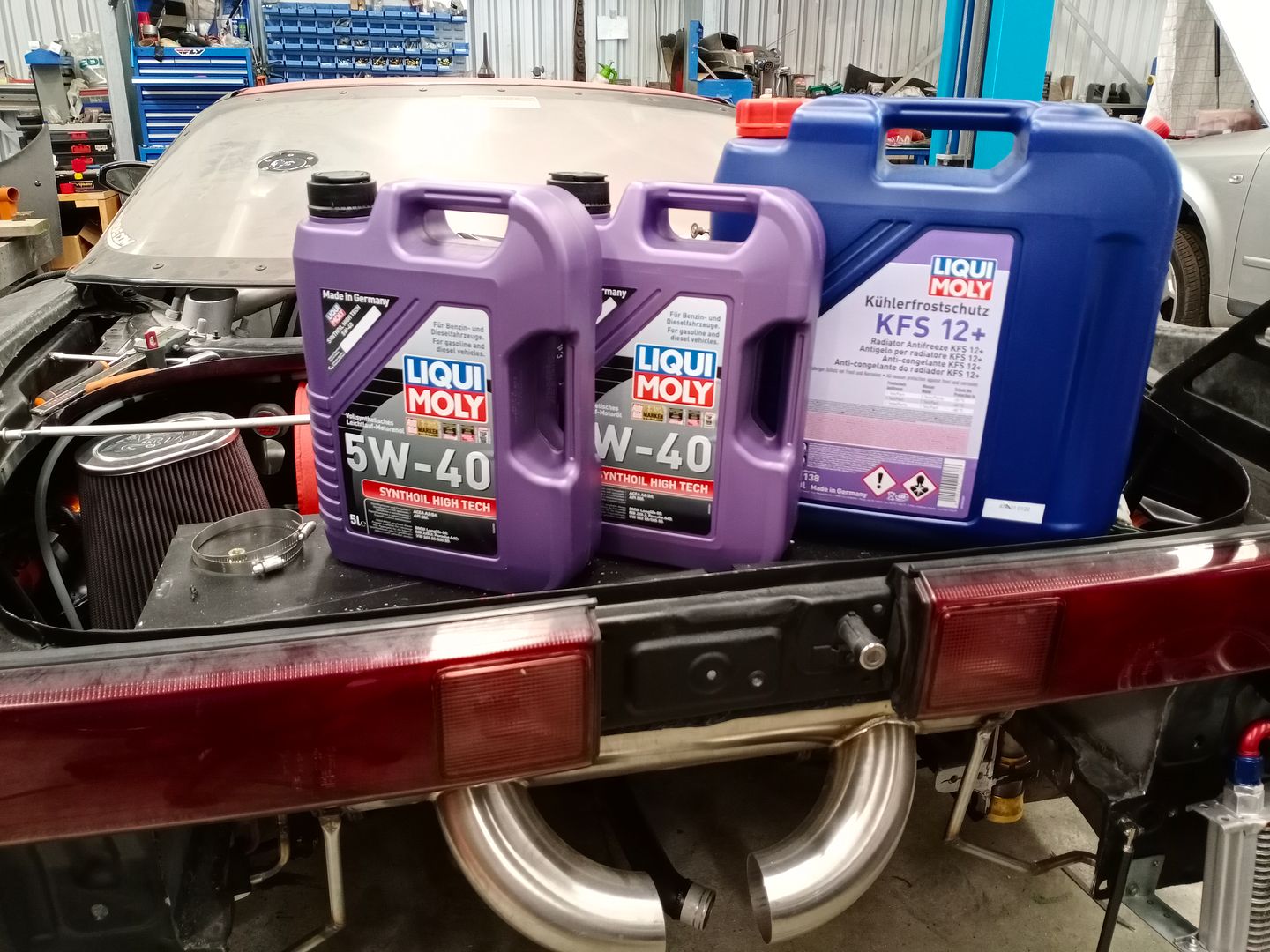
Next we needed to create some vents in the rear bumper that would not only allow some positive pressure out from behind the rear bumper, but also of course allow the cooler to work more effectively also. I only did the left side so it didn't look odd, but it's possible we might put a transmission cooler on that side also.
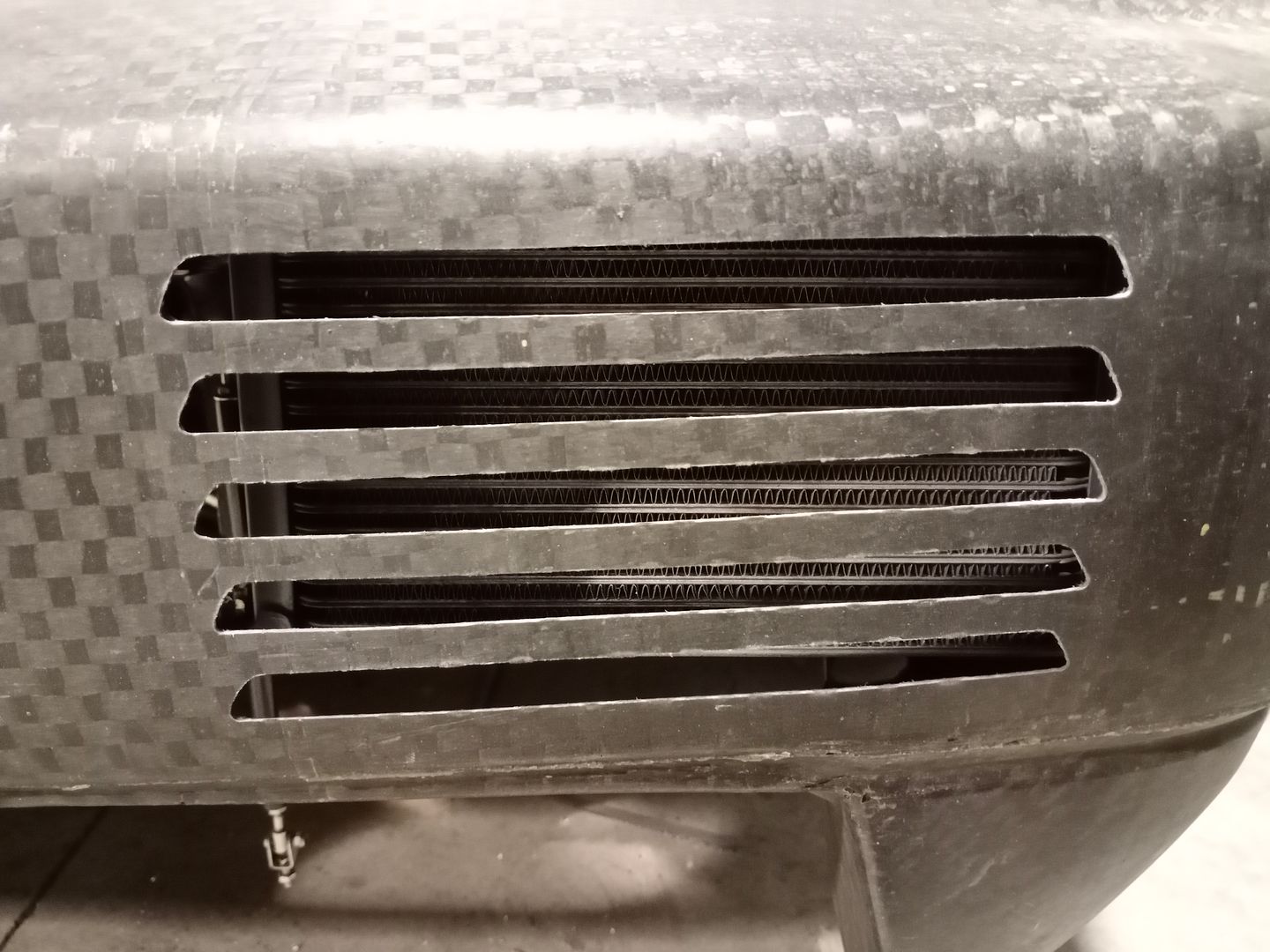

Next I needed to re-plumb the water system as well. I already had some of the tanks and I've taken a whole load of grief from my mates for my use of wrinkle paint, but I really like the finish and now I've started I can't stop as it looks weird if somethings not painted ! I prepped and covered the main header tank as well as an overflow tank. I had to re-mount them, and their final position is actually higher and more to the lef than shown here, but you get the idea.....

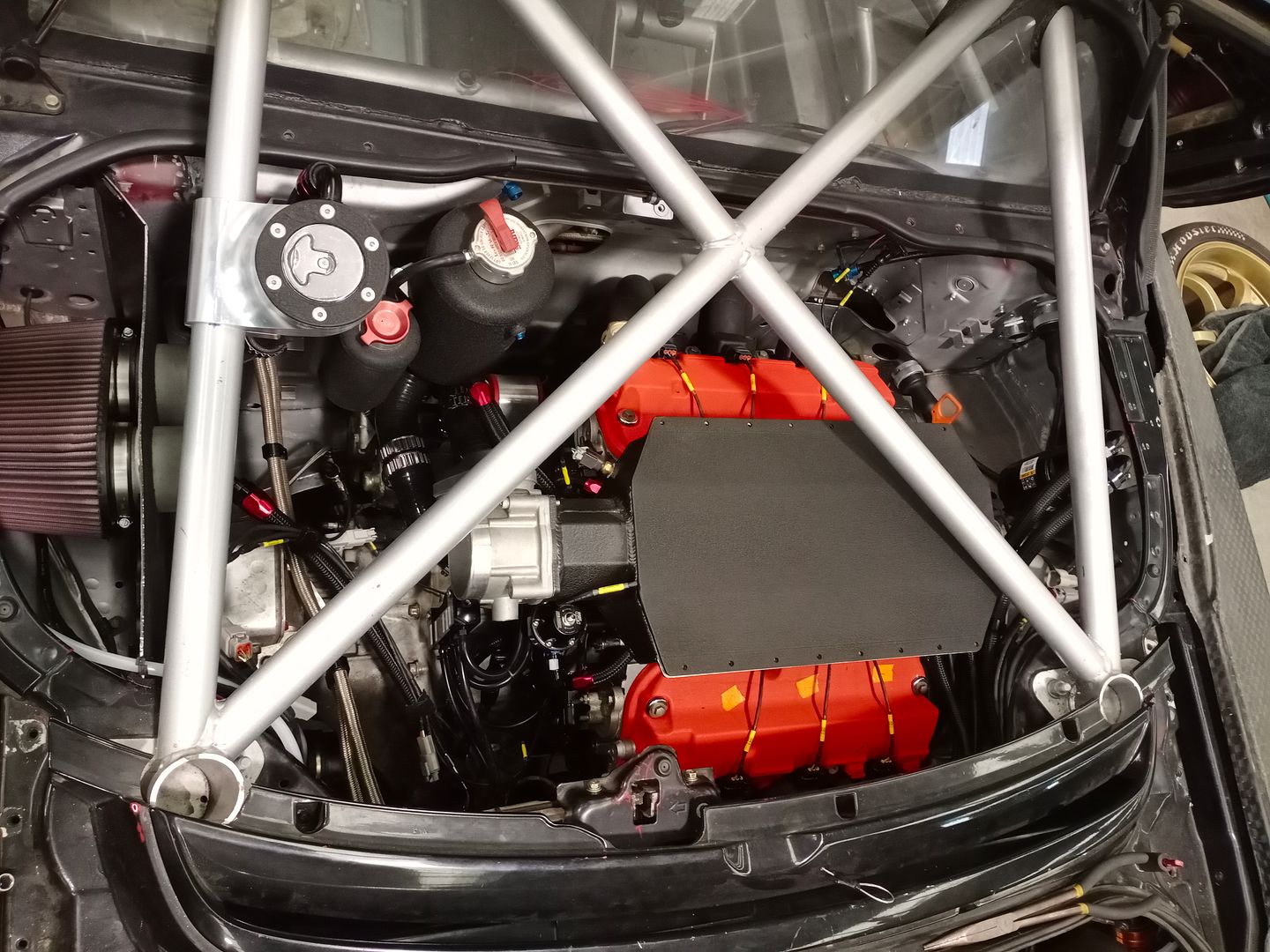


One of the parts I'm most happy with on the new build is the new fuel filler. This part came about again as part of the re-engineering process as we decided we wanted to pull more air from the usual side of the car, but with 2 large turbos to feed we needed to make the filter large and that meant we didn't have room to route the fuel filler out that side of the car, so Zac suggested we just route it up and out of the rear hatch and so I 3D printed quite a few versions of this to get it right and then we CNC'ed one out of aluminum and I think it looks amazing.

So after 30 years it seems like the factory fuel pump finally gave up the ghost. I think this was due to the fact that I emptied the tank so the pump sat in the air for a while, but it was jammed solid and wasn't going to move............. so we ended up replacing it with a DW400 pump from an Evo 8 I think it was. Was pretty much a perfect fit and my mate Reuben from R's Garage saved the day and dropped it down so whilst the tank was out it was an easy fix.
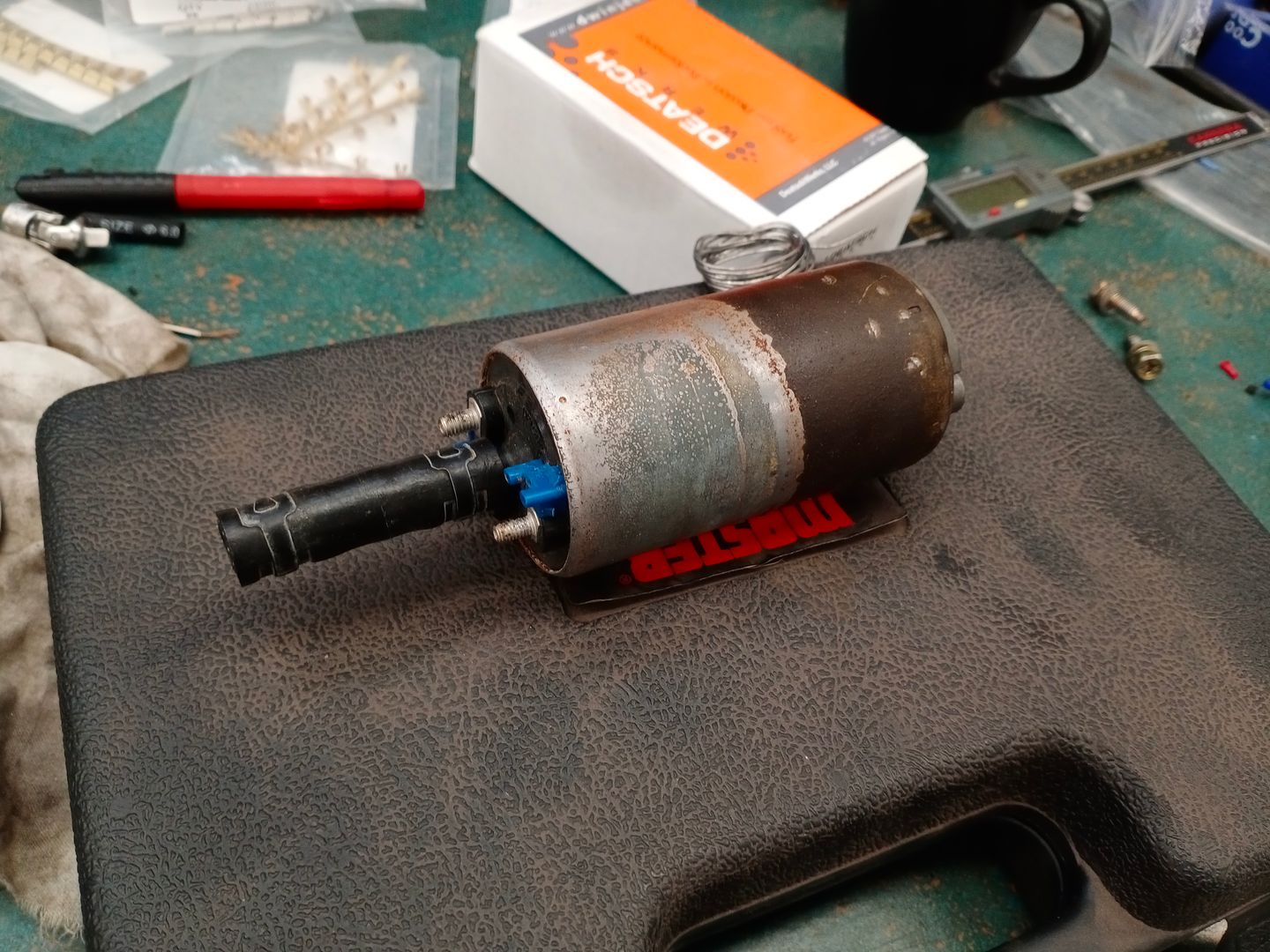
Next in line was the new exhaust. It was very tight from the front turbo to the front engine mount, but we finally made it through and then routed under the sump as normal.


We're also running a brand new muffler from Ace mufflers in Singapore. Originally it was made to fit a Toyota GT86, but I just hunted around for a muffler that was close to what I wanted. Amazingly I contacted Ace and asked if they could make me something similar, but not quite the same as their stock GT86 muffler and they said yes as they basically stopped about 90% of the way through the build as I didn't need the last 10%. Cost wise it was only a tiny bit more expensive even though it was essentially 'custom'.
Obviously the very simple exhaust hanger / mounts aren't something Ace did, that was me !!

We will tidy those up once it's in it's final position.

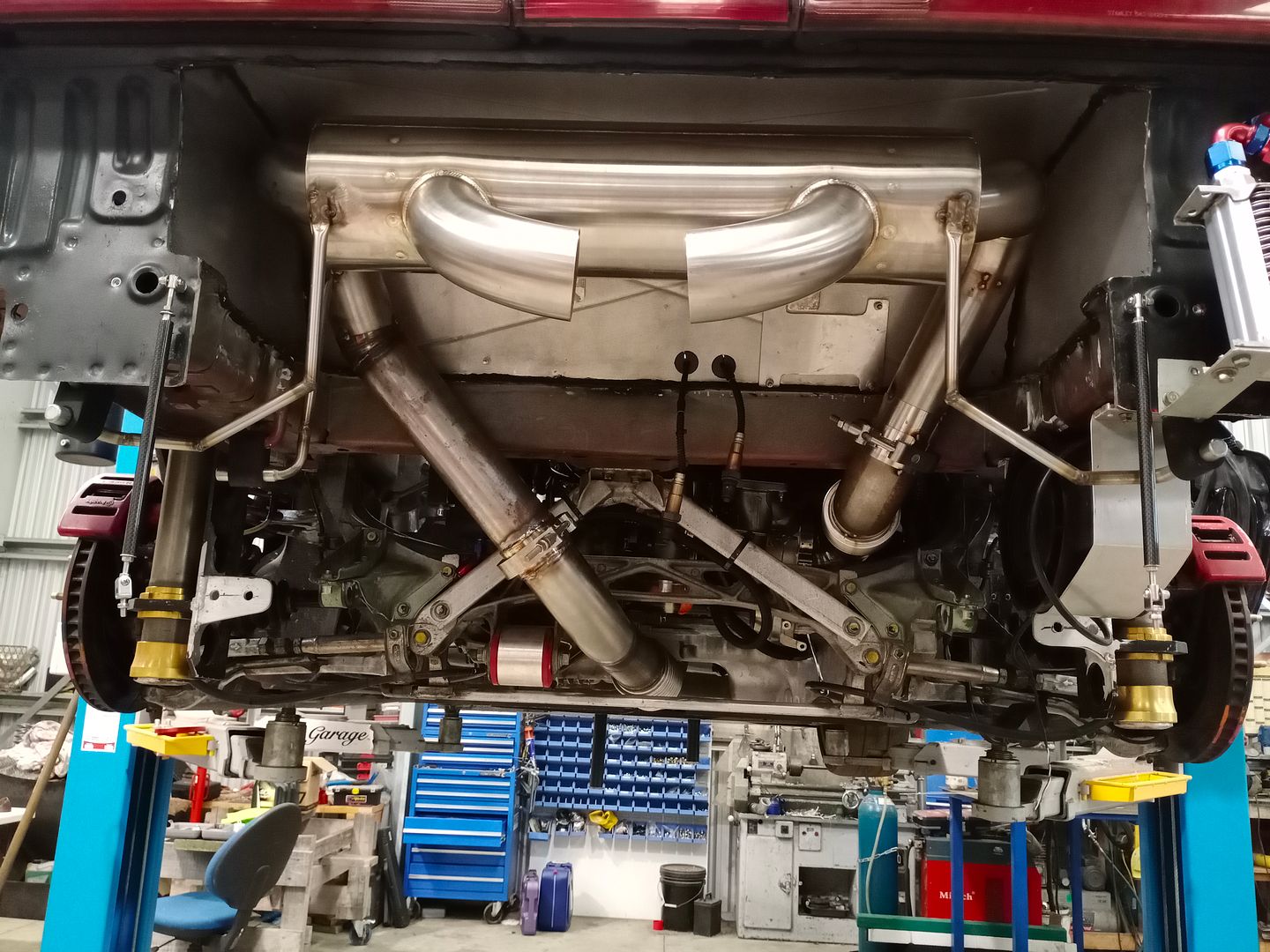

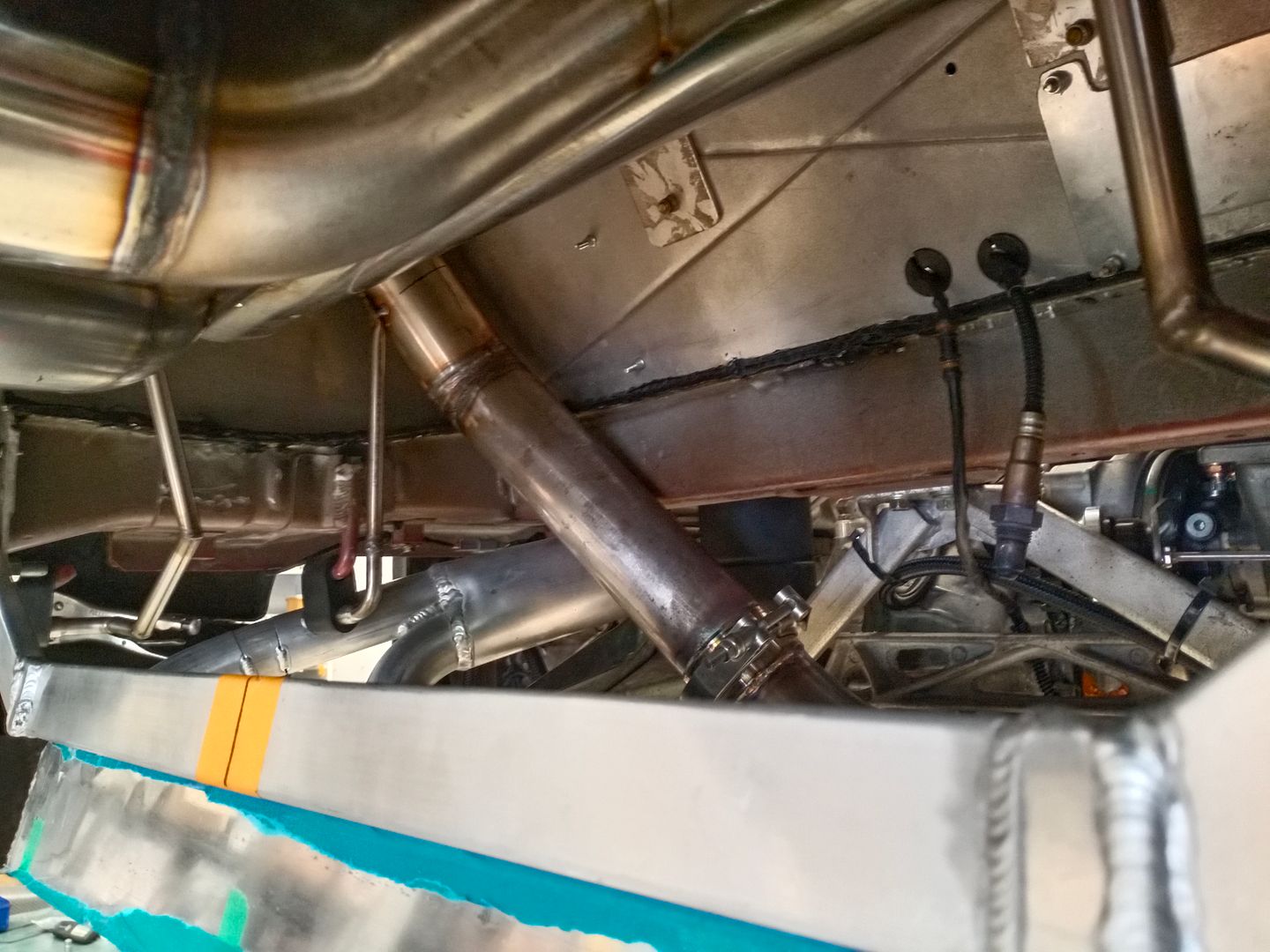

Once it was all finally mounted it was time to put the exhaust tips on and fit the rear bumper. We decided to stick the tips out more than before for a couple of reasons, but I'm really happy with the finished look.
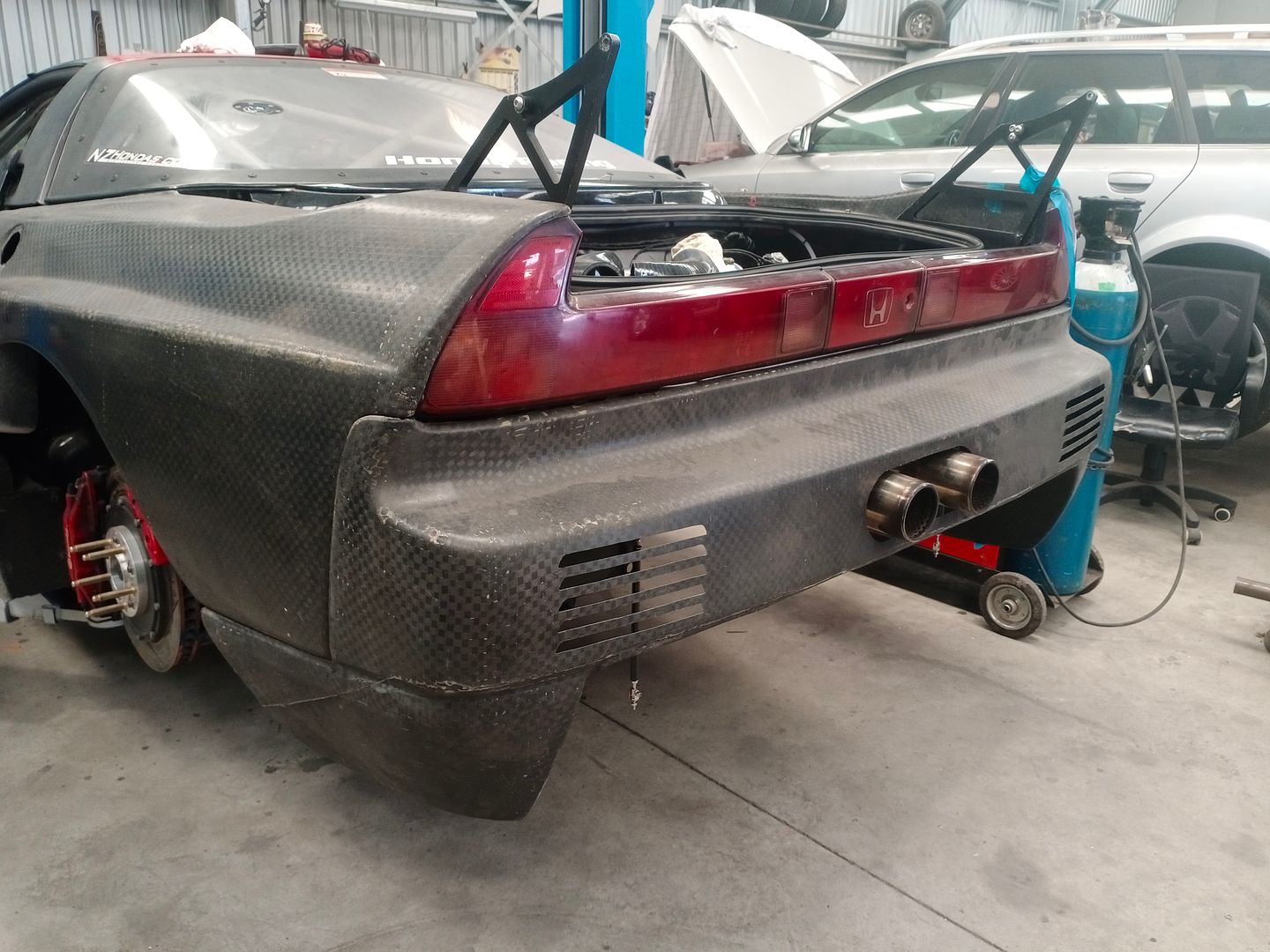
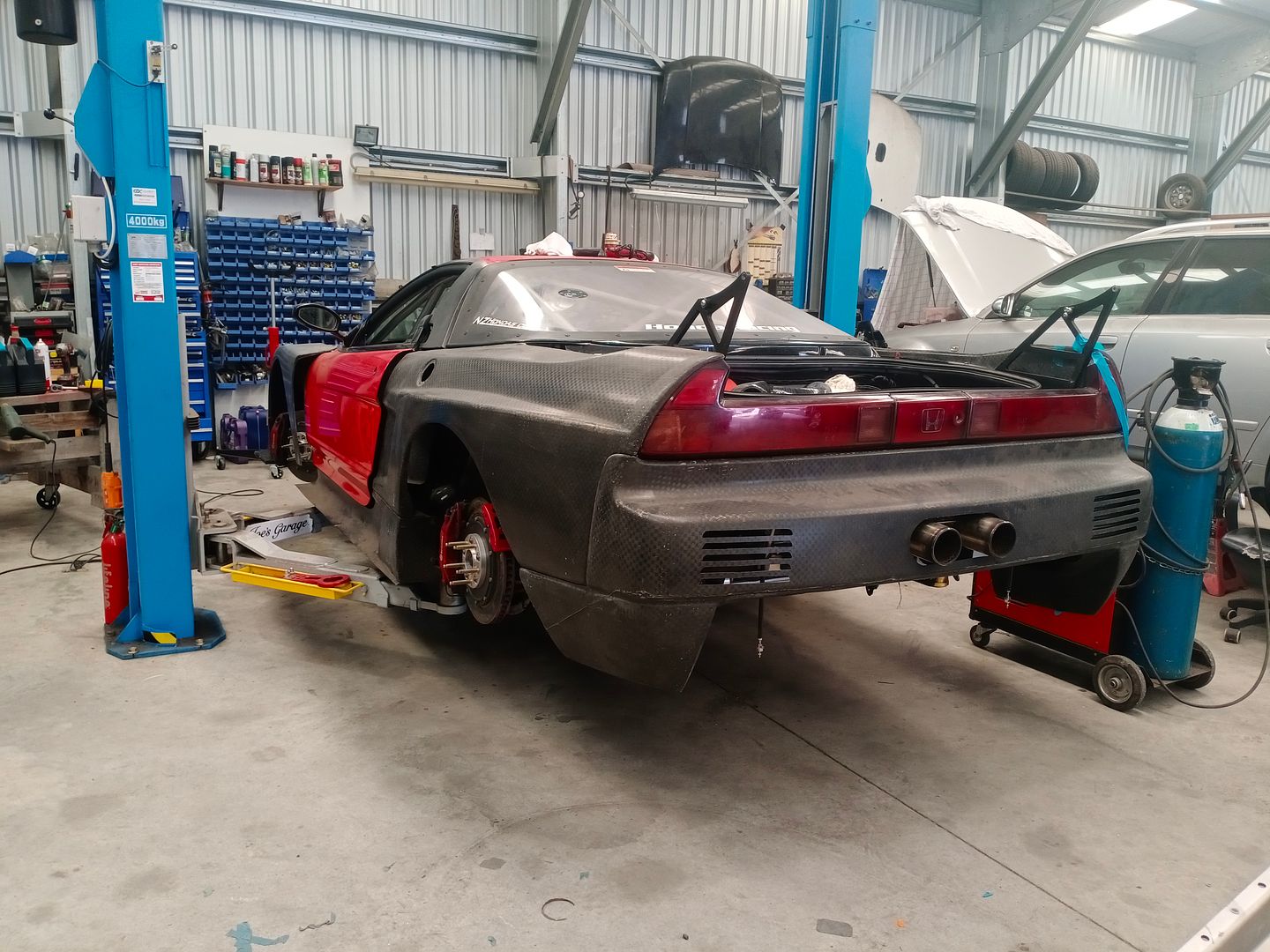
Although this isn't the final wing, it is quite different to the APR wing we had. Under Zac's guidance I prepped both sides of the mold ready for Zac to spray some clear gel coat. Then lay down some carbon, foam and bracing / glue. Then we're ready to bolt the 2 parts together and wait for the result.


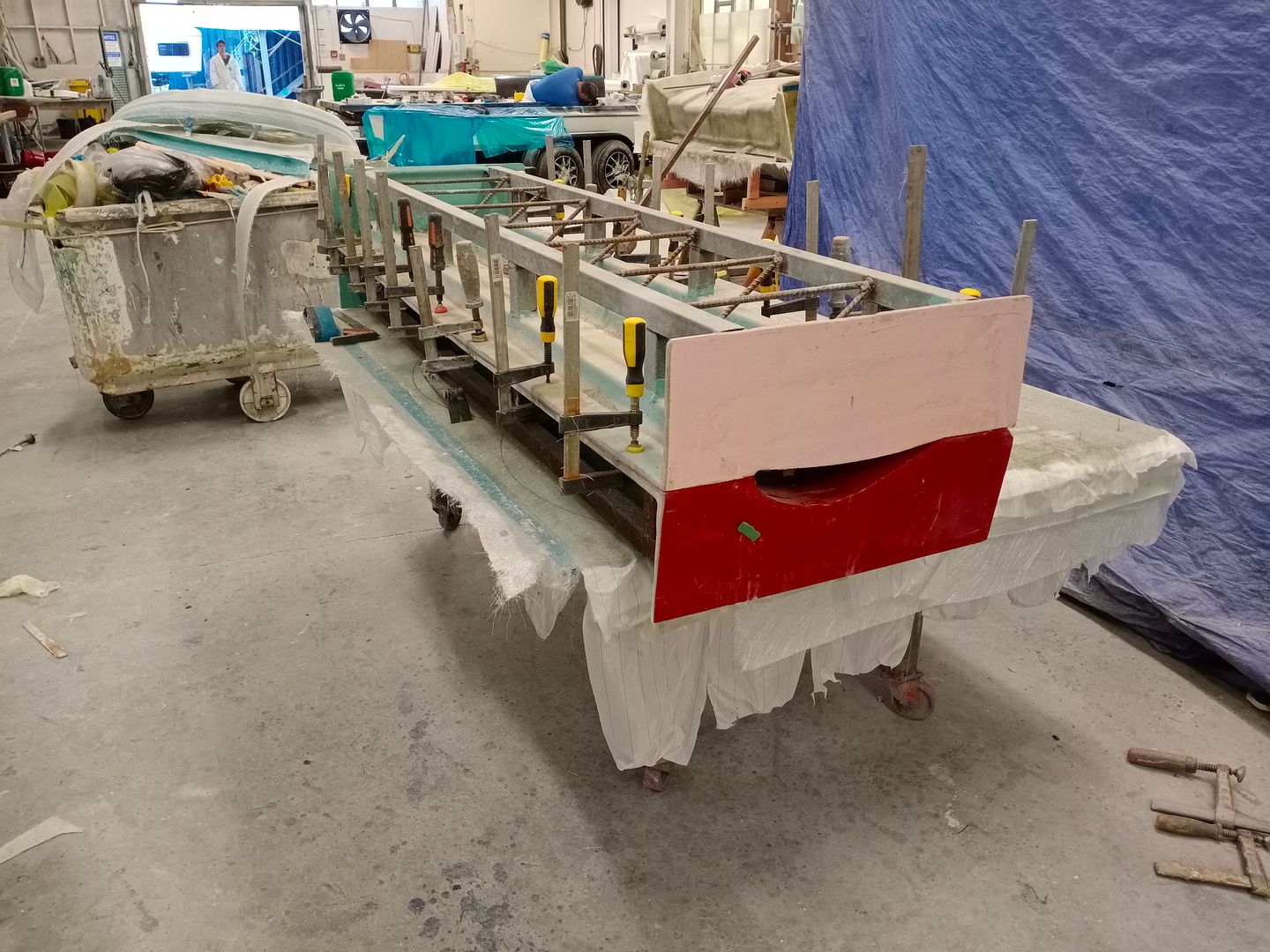
I hope you'll agree that the final result is awesome........., really suits such a wide / low car.
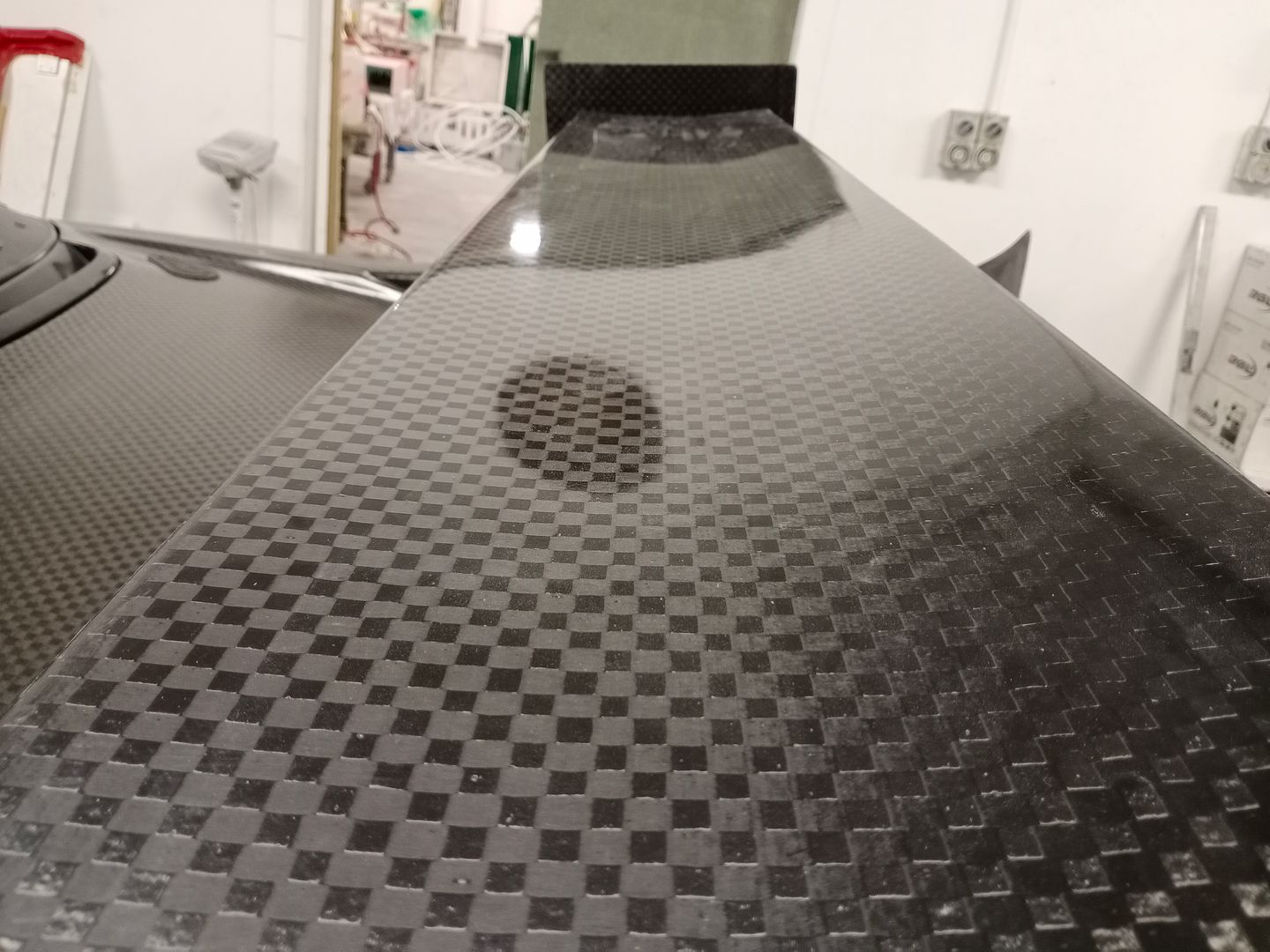
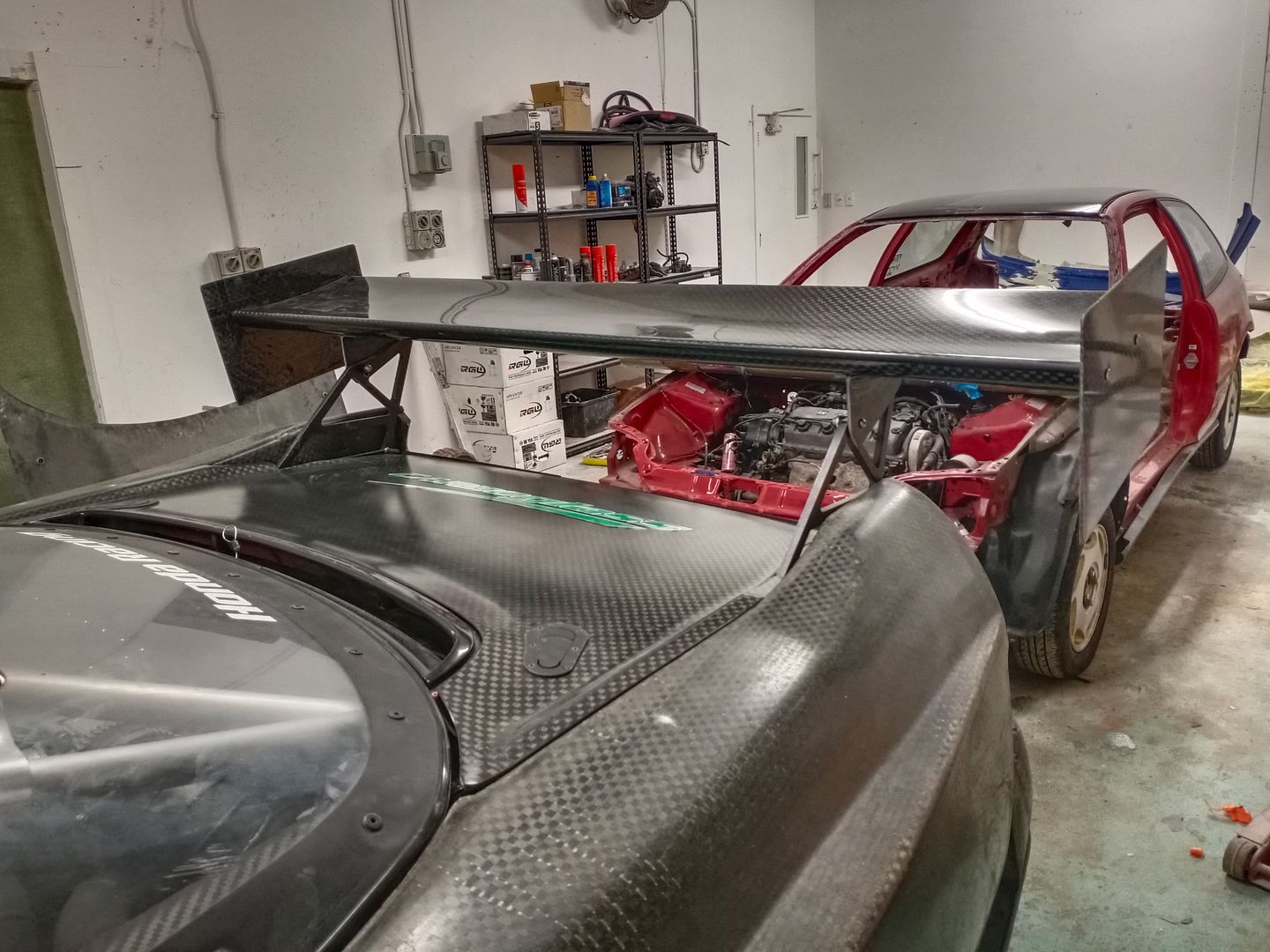
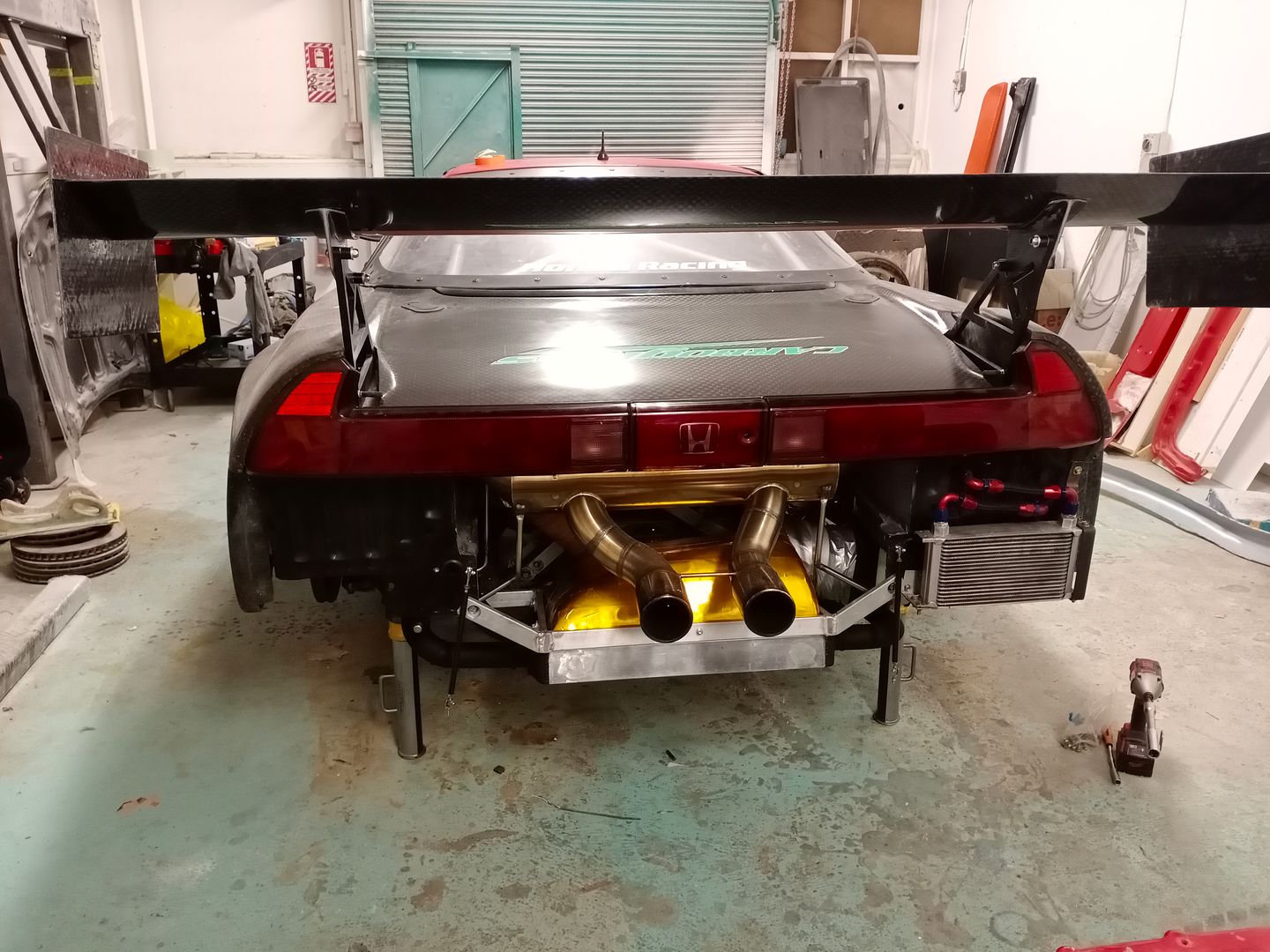
So it was finally ready for the dyno and our local motorsport club Xmas show and tell, and no matter how many times over the years I've seen this car together it always blows my mind. The photo's give you some idea, but it definitely looks better in the flesh.

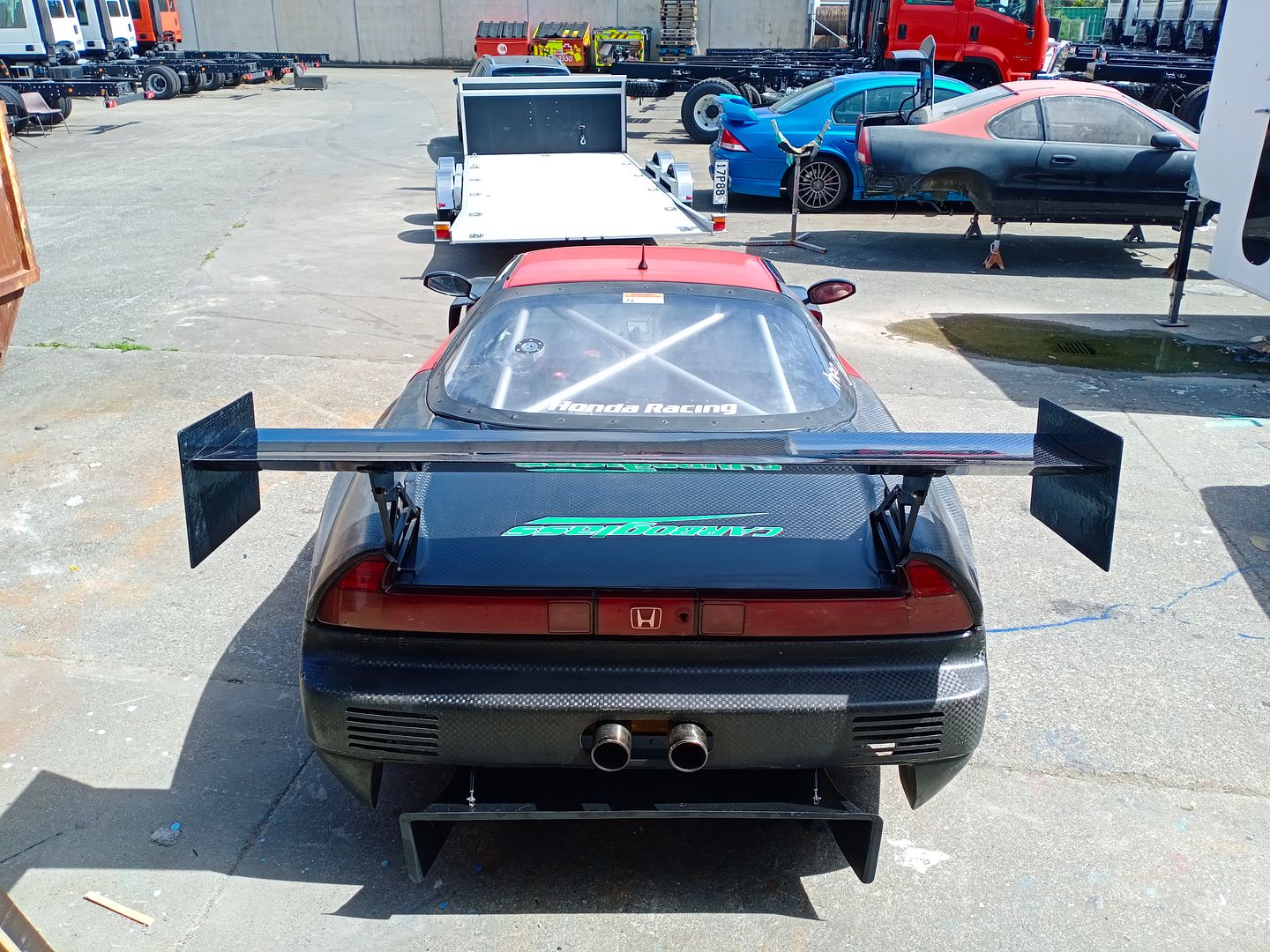

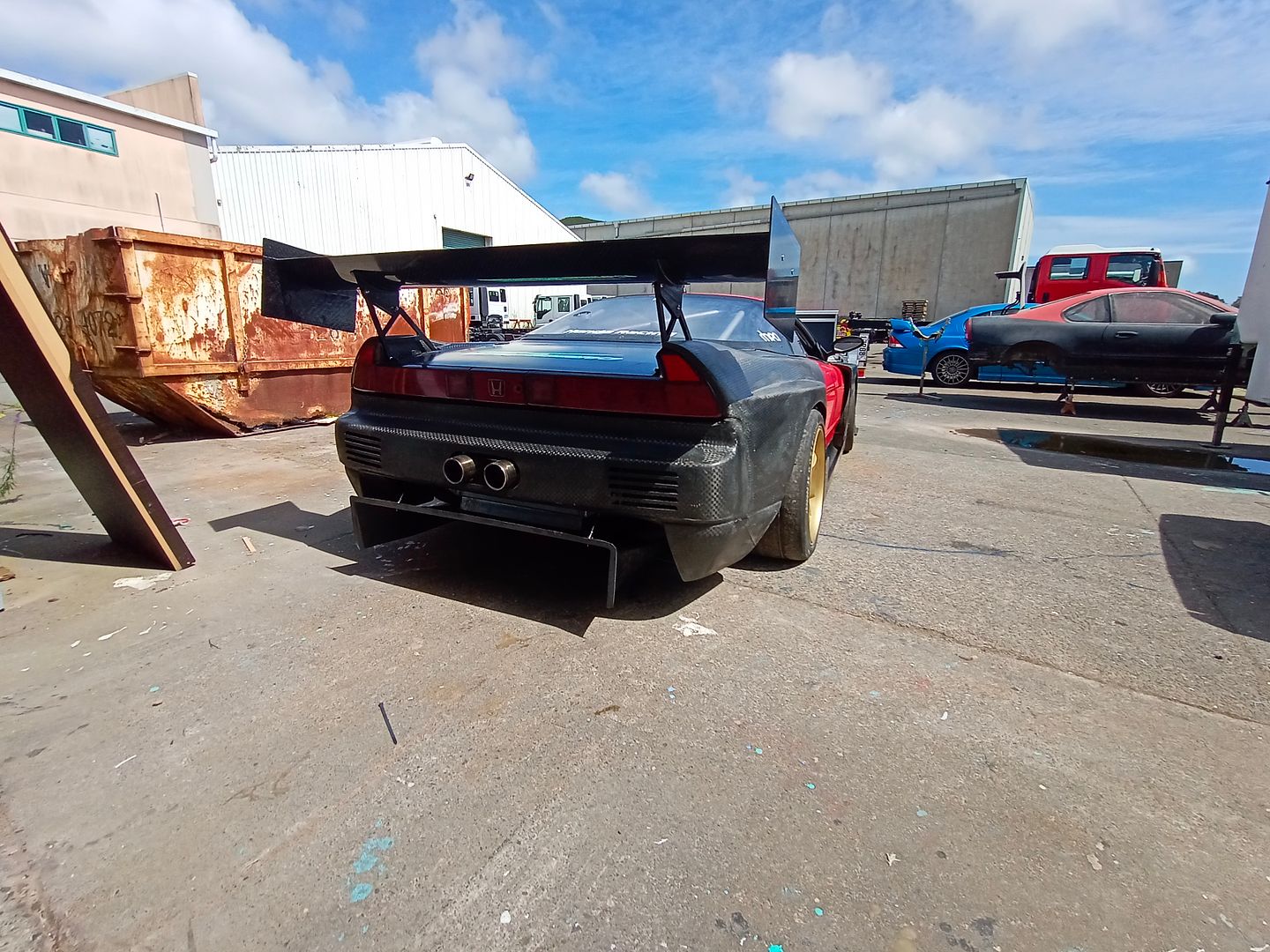

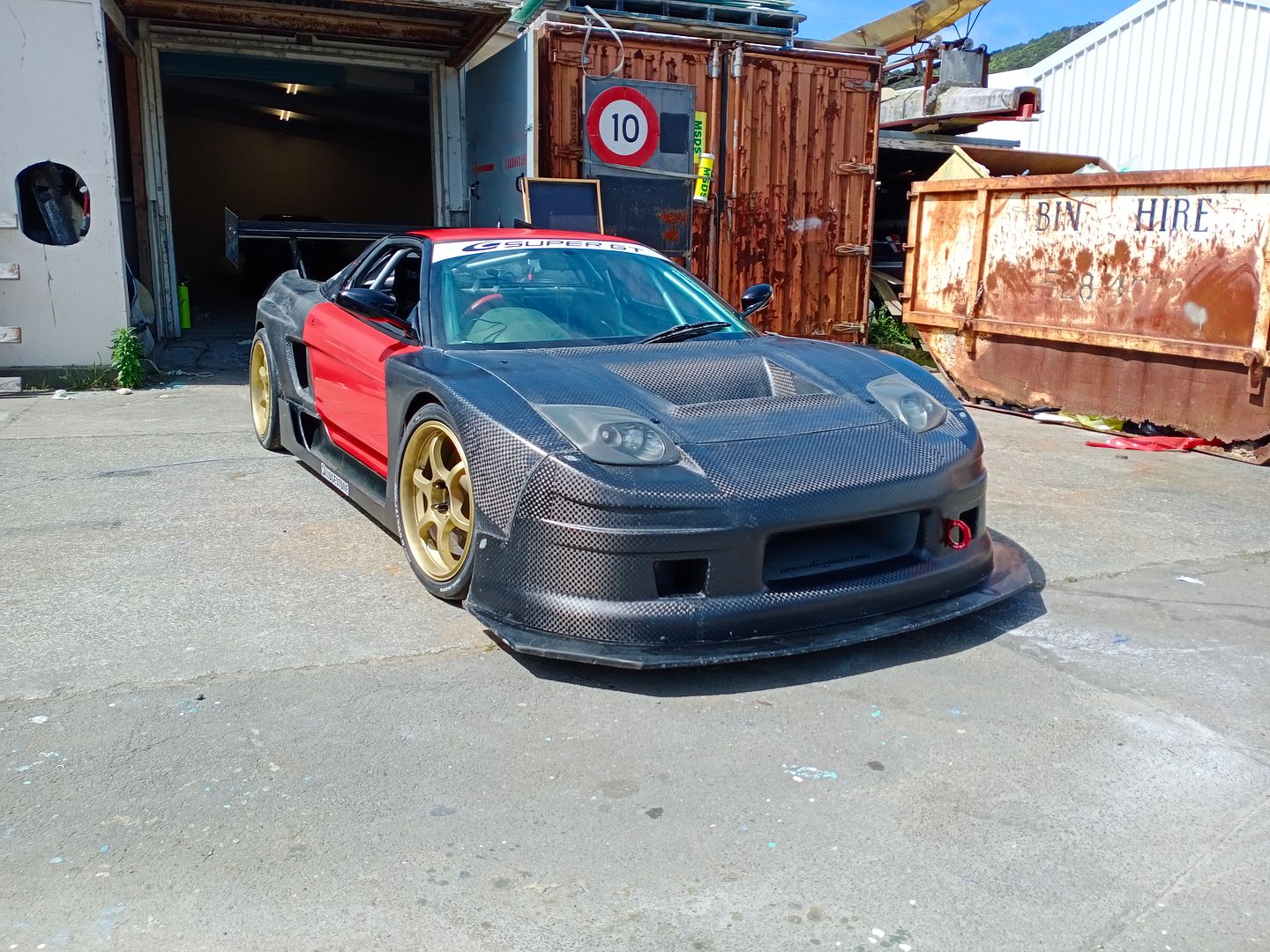
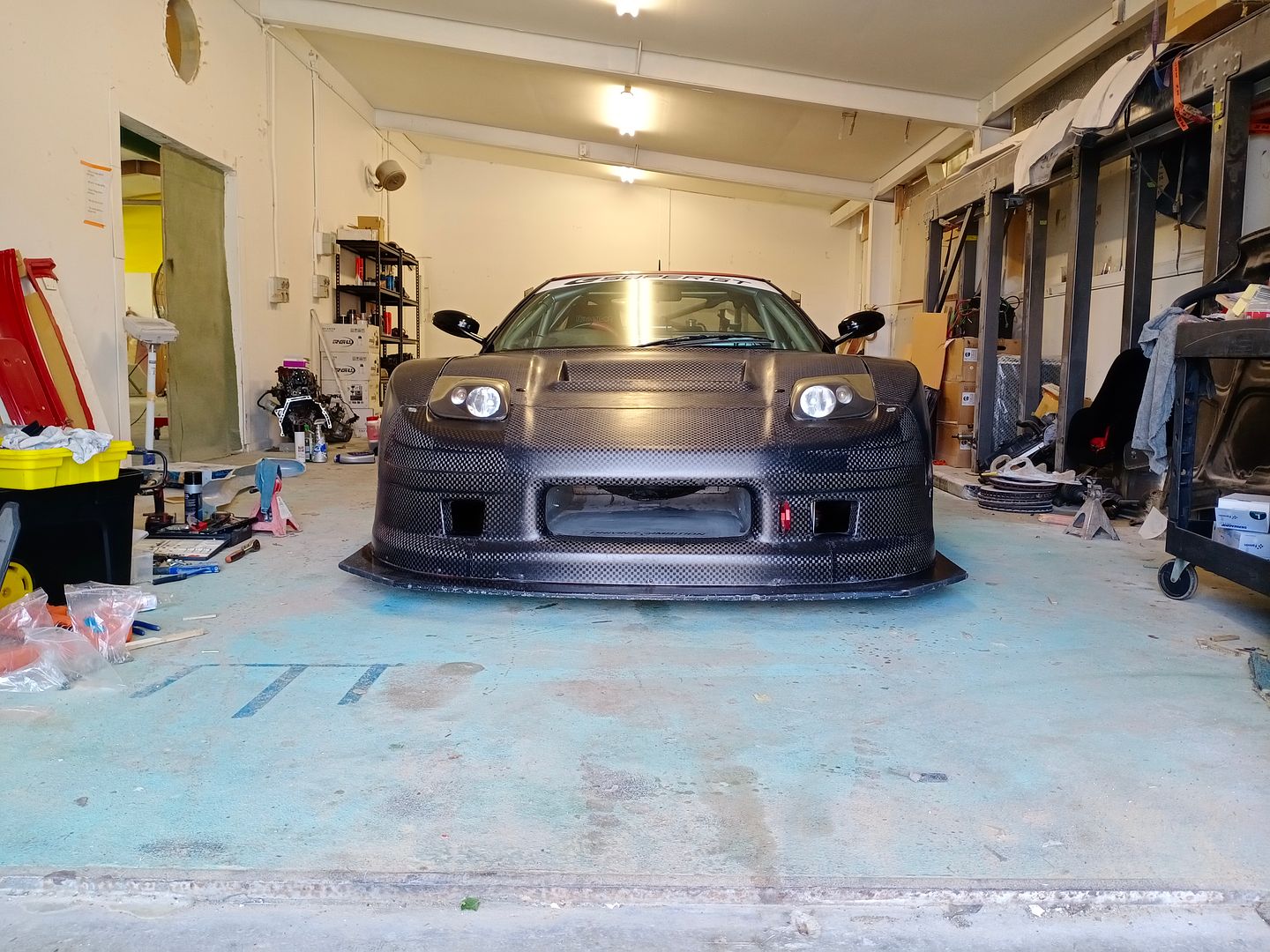


Finally the day came and Chris from Prestige Tuning and Motorsport was on hand to help get the car run in on the dyno. It all went really well after a few wiring headaches (alternator wasn't charging) and we needed to wire in Chris's lamba to CANbus adaptor so he had multiple air/fuel readings. He ran the car for about an hour and a half on and off with different loads and RPM and then we changed the oil and filter again just to make sure we had everything new once again.
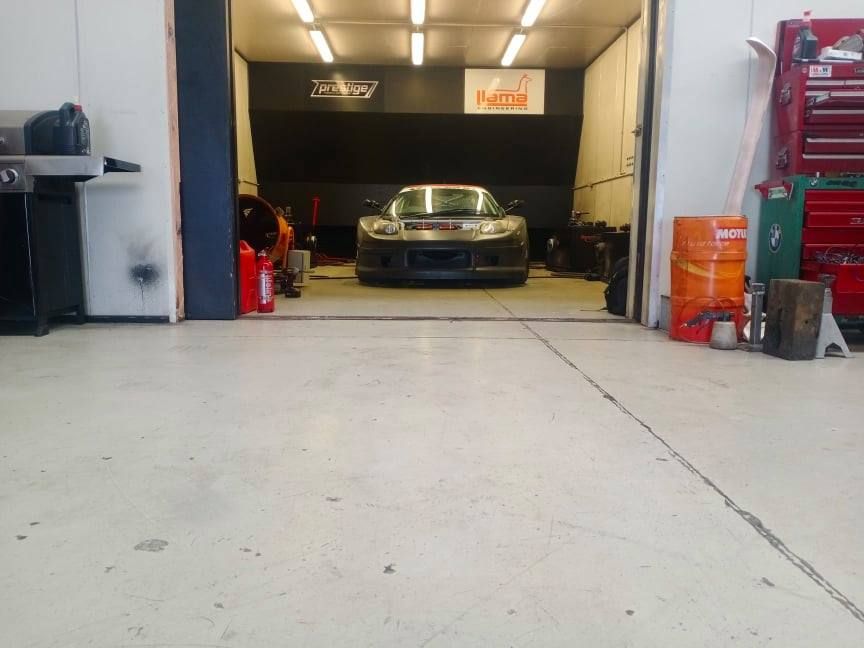 https://youtu.be/UZl0J7-ehgM
https://youtu.be/UZl0J7-ehgM
So there was some good things and bad things that happened............... good was that even with some very preliminary runs (5 or 6) only on wastegate pressure (11psi) the car made 362KW (485hp) at the wheels. So if that continued then we would expect to easily make 520KW (700hp) at the wheels with the boost we expect to run on the high side....... but unfortunately we weren't able to find out for sure as something in the gearbox cried no more ..

We haven't been able to remove it all to assess what's happened, but I'm happy we had no issues with the engine considering everything in the engine and around it is all brand new, but gutted that something in the gearbox gave up !!

We will be back in action once we get the box out and find out what happened.....






